
- Indoor Gardening
- Houseplants
- Hydroponics
- Houseplants Made Easy Book


How To Care For A Wandering Jew Plant (Your Complete Guide)
When it comes to houseplants able to brighten up indoor spaces, it doesn’t get much more colorful than the variegated foliage of a Wandering Jew plant ( Tradescantia zebrina ). With their hardy nature and ease of care, they are a perfect choice for those feeling they kill everything they bring indoors. We’ve listed a quick summary of their care below.
How To Care For A Wandering Jew Plant: Grow your Wandering Jew in well-drained soil, kept moist but not soggy through regular watering. Create humidity, keep indoor temperatures between 50°F (10°C) to 85°F (29°C) and fertilize monthly.
Continue reading because we’ve taken all the guesswork out of caring for your Wandering Jew and keeping it healthy and happy for years to come.
How To Care For A Wandering Jew Plant
Wandering Jew plants belong in the Commelinaceae family, which includes around 652 different species. The family is made up of herbs, climbers and several epiphytes, with some used as outdoor and indoor ornamentals like Wandering Jew.
There are three different plants commonly known as Wandering Jews; Tradescantia fluminensis , Tradescantia pallida , and Tradescantia zebrina. Of the three, Tradescantia zebrina is the most common one grown and has the most eye-catching and colorful foliage. All three have the same requirements for care and good growth.
Native to Mexico and Guatemala, Wandering Jew is classified as a tender evergreen perennial that performs well planted outdoors in frost-free regions. Those living in cooler environments can easily grow it as an indoor plant planted either in containers or in hanging baskets. Outdoors it’s typically used as a quick-growing groundcover.
Although a common name shared with several very different plants, Wandering Jew is often called Inch Plant , due to the leaf margins being spaced about an inch apart. You may also find Wandering Jew listed as Zebrina Pendula , but is synonymous with Tradescantia zebrina and is the same plant.

When it comes to Wandering Jew plants, it’s all about the attention-grabbing foliage. The succulent stems give way to leaves that are a deep purple on their undersides with the upper portion striped in silvery-gray and greenish-blue. The oval leaves grow to about 2.5 inches long and the stems grow about 2 feet long. It makes a beautiful plant used in hanging baskets, with the long stems cascading over the side.
Even grown indoors, Wandering Jews have a fast rate of growth and before you know it, the plants will be spilling over your container’s or hanging basket’s sides. Whereas some indoor plants seem to take forever to fill out, this isn’t a problem with properly cared for Wandering Jew plants.
There are several other cultivars (varieties) of Wandering Jew, which include:
- ‘Purpusii’ has unstriped, hairy foliage that is either solid red or reddish-green.
- ‘Quadricolor’ produces metallic-green foliage striped in red, white and green.
Wandering Jew plants are the ideal candidates for beginner houseplant gardeners due to their hardiness and robust growth. Below we’ve outlined all the basics of their proper care, as well as identifying and preventing any potential problems so you can enjoy your Wandering Jew for years to come. The best indoor plants are those that are happy and healthy.

Soil Conditions For Wandering Jew Plants
Wandering Jew plants tolerate growing in a wide range of soils provided they drain well. Although they do tolerate and prefer moist conditions, the soil must drain properly to prevent root and stem rot from occurring. Therefore, it is necessary to use a lighter weight soil mixture in your pots rather than heavier soils that don’t provide proper drainage.
Straight potting soils are usually too heavy, retain too much moisture and have a tendency to leave the soil soggy. You can use a heavier potting soil in your soil mixture, just be sure to incorporate a lighter soil mix to provide the Wandering Jew the drainage required for healthy growth.
Commercial potting mixes work well and many have a slow-release fertilizer mixed in, which cuts down on the need for frequent feedings. The slow-release blends usually continue to fertilize the Wandering Jew for about three months.
You can also make your own soil by mixing several ingredients together such as:
- Using equal parts of compost and a potting mix.
- Mixing equal portions of compost, peat and potting soil or a potting mix.
- Using equal portions of a course sand, compost and potting soil or a potting mix.
Whatever soil you choose to use, just make sure it drains well and contains a bit of fertility for the best performance of your Wandering Jew plants.
Preferred Light Conditions
Although Wandering Jew plants tolerate lower light conditions than many houseplants, to help retain those striking colors the plant is known for, place the container in a location indoors receiving filtered sunlight. If your plant starts losing some of the color in the foliage, move it to a location that receives a bit more light.
In addition, if the lower portion of the stems start suffering leaf drop, the Wandering Jew isn’t get enough light and needs to be relocated to a brighter area inside the home.
Once the warm weather of spring arrives and if you’d like to give your Wandering Jew a bit of a break from its indoor location, place it in an outdoor spot that receives partial sun to partial shade. Moving it to an outdoor location with too much sun may leave the foliage sunburned.
Indoor Temperature Requirements
In the Wandering Jew’s native environment, temperatures are consistently warm without the threat of frosts or freezes. Generally, if the indoor temperatures inside your home are comfortable for you, they will also be comfortable for your Wandering Jew plant.
Indoor temperatures between 50°F (10°C) to 85°F (29°C) are a good range for your Wandering Jew plants. Plants grown in this temperature range produce the healthiest growth.
If you gave your plants a break from their indoor location, just make sure to bring them back indoors before the cold weather of winter strikes.
Water Requirements
Wandering Jews prefer soils that are regularly kept moist, not soggy, compared to many indoor houseplants. However, this doesn’t mean the soil should be kept so wet they never begin to dry out. Keeping the soil too wet for too long promotes rot to set in and you may end up killing your Wandering Jew plants. Your Wandering Jew is more likely to forgive you if you forget to water over watering too much and too often.
A good rule to follow is if the soil starts to feel like it’s about to become very dry, apply water. It’s easy to know exactly when to water by:
- Sticking your finger into the soil and if the top inch is starting to feel dry, water until it runs from the container’s bottom drain holes.
During the warm growing season of spring through summer, you can probably expect to water once each week. However, during winter when the Wandering Jew goes into dormancy (its growth slows), you will probably only need to water about every other week.

Humidity Requirements
Compared to many tropical plants grown indoors, Wandering Jew plants aren’t quite as fussy about humid conditions , but still need some humidity for the best growth and performance. Don’t let the thought of creating a humid environment stress you out because replicating humidity for your indoor plants is relatively easy and basic.
- Fill a spray bottle with room temperature water and mist the Wandering Jew several times each week.
- If you’re growing the Wandering Jew in a container and not in a hanging basket, you can set the pot on a tray of pebbles. As you water, the water seeps from the bottom drain holes onto the tray of pebbles and as it evaporates, it creates a humid environment around the plant.
- If your bathroom gets the appropriate amount of light for the Wandering Jew, you can allow it to grow there. Due to the regular use of water in a bathroom, moisture is created, creating the humidity the Wandering Jew requires.
Fertilizer Needs
Unless the soil mixture contains a slow-release fertilizer blend, which feeds the Wandering Jew for about three months, fertilizing monthly is sufficient for proper growth. You have several choices when it comes to fertilizer you can use for your Wandering Jew plant.
- Use a houseplant fertilizer applied at half-strength, applied when you do your regular watering.
- Use an all-purpose, water-soluble blend for outdoor and indoor plants, applied at half-strength and used during your regular watering schedule.
- If your soil mixture didn’t contain a slow-release fertilizer or it’s been about three months, if one was contained in the soil, you can reapply slow-release fertilizer granules sprinkled over the top of the soil. Follow the package directions on amounts.
When it comes to the appropriate time of year to fertilize the Wandering Jew, only fertilize while it’s actively growing, which is spring throughout summer. In winter, the plant goes through a dormant stage and all growth slows, so there is no need to apply fertilizer. Wait until spring arrives before you resume fertilizing the plant.
The one thing you will need to pay attention to when it comes to fertilizing is the buildup of salts in the soil, which can result in foliage burns. Wandering Jew plants have a low tolerance to salty soils. Preventing any salt buildup is relatively simple:
- If the plant isn’t too big, you can take the entire pot to your sink or bathtub and allow water to run slowly through the soil for about five minutes, flushing out any salts.
- If the plant is too big for indoor flushing, take it outside and allow water from the hose to run slowly through the soil for about five minutes. Allow the water to drain and then bring the plant back indoors.
Pruning Requirements
The pruning needs of Wandering Jew plants are low. If you want to control the size of the plant and promote bushier growth, you can pinch off the tips of the stems. To keep the plant always looking its best, you can trim off any broken, dead or damaged stems and leaves throughout the year.
When using pruning tools to trim your Wandering Jew always make sure they are clean so you don’t transfer any diseases or pests to your plant. This is as easy as wiping off the blades with alcohol.
Some people experience skin irritations when handling the cuttings due to the sap , so if you are unsure if you are one of these unlucky gardeners, it might be best to wear gardening gloves when pruning or handling Wandering Jew cuttings.
Potting Needs
If you purchased your Wandering Jew already potted in a hanging basket or 1-gallon container, it should thrive as is for a year or more before it requires repotting. However, if you received rooted cuttings in smaller containers like 4- to 6-inch pots, you most likely need to repot them into something a bit larger so they can grow properly.
This also cuts down on the need for repotting in a month or two as the Wandering Jew begins to outgrow its present pot.
When it comes to the pot’s material, any type works quite well for growing this plant from clay to plastic. However, if you grow your Wandering Jew in a pot made of a porous material like terra cotta, the soil is going to dry quicker than if it was growing in a plastic pot. This means you will need to water more frequently.
Once your Wandering Jew starts getting too big for its present container, it’s time to repot it into one that is around 1- to 2-inches larger. Although the plant likes a moist soil, make sure the pot has bottom drainage to prevent the possibility of rot due to conditions that are too wet.
If you like, you can dress the container up by placing the draining one inside a decorative pot without bottom drain holes, but be sure to empty out any additional water once the inner pot thoroughly drains.
I think a decorative outer pot can add so much to the beauty of your houseplants, so I do this with almost all of my houseplants. Read this article which discusses my favorite decorative planters if you need some inspiration.
Potting and repotting your Wandering Jew is basic:
- Gently remove the Wandering Jew from its present container, being careful not to break the succulent stems.
- Fill the new container that drains about a quarter of the way full with a fertile, well-drained potting mix.
- Check the Wandering Jew’s root system and if it’s growing bunched together and filled the previous pot, gently tease the roots apart with your hands.
- Place the Wandering Jew into the new container and finish filling it with soil.
- Water the Wandering Jew until it runs from the bottom drain holes and place in a bright location indoors.

Propagating New Plants
When it comes to propagating new plants, Wandering Jew is about as easy as it gets. Even if you have never done this before you should have success starting its cuttings. When you trim to control its size, don’t throw those cuttings away but use them to start additional plants.
You have two choices when it comes to rooting your cuttings and both are easy. The first thing you will want to do is obtain your cuttings. Trim off a 4- to 6-inch cutting from the mother plant and you’re ready to start rooting.
Rooting in Soil
- Fill a 6-inch to 1-gallon container that drains with a rich, well-drained potting mix. Water the soil to settle it.
- Make about a 2-inch indentation in the soil where you want to place the Wandering Jew cutting.
- Remove the bottom leaves from the cutting where you will be inserting it into the soil. You can do this by pinching them off with your fingers.
- Place the cutting into the indentation and firm the soil up around it with your fingers.
- Water the soil again and place the cutting in the same light conditions where the mother plant was thriving. Keep the soil moist but not soggy.
Roots should form in about four weeks and after about eight weeks, the Wandering Jew cuttings should form a new root system.
Rooting in Water
- Fill a glass jar or plastic container with about 3-inches of room temperature water.
- Pinch off any leaves from the section of the Wandering Jew cutting that will be submerged in the water.
- Place the cutting in the water and situate the container in a bright indoor location.
- Change the water in the container about every other week, or when cloudy.
You should start seeing new roots form on the cuttings in several weeks. Once the roots are several inches long, you can repot the cuttings into a draining container filled with fertile, well-drained soil.
Disease Problems
Wandering Jew plants grown indoors are hardy and don’t have major diseases that plague them. However, rot is their biggest enemy and caused by soils that are too heavy and do not drain properly, retaining too much water. Overwatering and planting in pots that don’t drain are other causes of rot problems.
When rot rears its ugly head you’ll notice the bottom stems, as well as the foliage turning black, becoming mushy and the entire plant collapses. If this happens and seems to start affecting the entire Wandering Jew plant, you can trim off healthy, unaffected sections of the stems and repot into fresh, clean soil. Since there is no saving the rot-infected sections, you will have no choice but to discard those portions of the plant.
Steps for preventing problems with rot include:
- Using lightweight potting mixes that drain well and aren’t too heavy, which leads to the soil remaining too wet for too long. Some types of potting soils have a tendency to be heavy and need mixing with a potting mix, compost, coarse sand or peat.
- Don’t overwater your Wandering Jew. Although they prefer growing in moist soils, this doesn’t mean constantly soggy soil. Stick your finger into the soil and if the top inch is starting to become dry, apply water until it runs from the bottom of the pot.
- Make sure the pot you are growing your Wandering Jew in has bottom drainage. If you have placed the pot inside a decorative one that doesn’t drain, make sure to empty all the water from it after you have watered.
Pest Problems
Although indoor Wandering Jew plants are not big candidates for problems with pests, several can cause an infestation and problems. As with any pest problem indoors or outside in the garden, quick control is always the best option to keep your plants healthy. It also assures the pests do not migrate to your other plants causing even bigger problems and headaches.
The pests most likely to infest your indoor Wandering Jew plants are:
- Aphids: Aphids come in a host of different colors and are tiny, pear-shaped, sap-sucking insects that usually congregate in large masses along the Wandering Jew’s stems. In large infestations, they can kill the plant or severely weaken it. If the infestation is small, you can wipe the pests off the stems with a moist cloth. However, if the infestation is large, you will probably have to spray the plant with an insecticidal soap or Neem, reapplying as suggested on the package.
- Spider Mites: Spider mites are another sap-sucking pest that if left unchecked can quickly kill or weaken the Wandering Jew. It is easy to tell if you have a spider mite problem as these tiny, white pests spin fine webbing that covers the plant. Spider mites can be the bane of houseplants so quick control is necessary. Use an insecticidal soap or Neem and spray the entire plant, reapplying as suggested on the product label.
- Whiteflies: Whiteflies are other sap-sucking pests that can quickly kill or weaken your Wandering Jew if not quickly controlled. They are another easily identifiable pest, as just touching the plant sends the tiny whiteflies from the plant’s foliage and into the air, hovering right above it. Control the problem with an insecticidal soap or Neem, spraying the entire plant and reapplying as suggested on the product’s label.
- Mealybugs: Sap-sucking mealybugs show up on the Wandering Jew as cottony masses covering the stems and crotches of the foliage. Control the problem by spraying the entire plant with insecticidal soap or Neem, reapplying as suggested on the product’s label. If the infestation is small, you can also wipe them from the stems and leaves with a damp cloth.

Is Wandering Jew A Perennial?
Wandering Jew plants are considered a tender, evergreen perennial. Unlike annuals, and if grown in preferred conditions with proper care, Wandering Jews should live and keep on growing for quite a few years, both indoors and outside.
Why Are My Wandering Jew Plant’s Leaves Losing Their Color?
If your Wandering Jew is growing in light conditions that are too low, the leaves will start to lose their color and become duller. When grown indoors and to keep the bright color on the foliage, make sure the Wandering Jew is growing in a location receiving bright light.
Why Are My Wandering Jew’s Leaves Dropping?
Wandering Jew plants grown in light conditions that are too low will start dropping leaves at the base of their stems. Solve the problem by moving the plant to an indoor location that is brighter. For the best leaf color and growth, they prefer an indoor location receiving bright light.
Why Are My Wandering Jew Cuttings Rotting In Soil?
If your Wandering Jew cuttings are rotting in soil it could be one of two things causing the problem. The soil you are growing the cuttings in may be infected with a fungus that is infecting them with rot.
You can solve the problem by planting the cutting in a sterile, well-drained potting mix. Another cause might be the soil is remaining too soggy and the container doesn’t drain.
Make sure you are using a soil that drains well and doesn’t remain soggy, do not overwater and use a container with bottom drainage. Water the cuttings when to top inch of soil feels dry to the touch.
Can I Root Wandering Jew Cuttings In Water?
Wandering Jew cuttings root quite well in water. Fill a container with several inches of water, remove any leaves that would be submerged and stick the cut end into the water.
Fill the container with fresh, clean water about every other week. You should start seeing root form on the cuttings in several weeks. Once the roots get several inches in length, you can repot the cuttings in a draining container with rich, well-drained soil.
Are Wandering Jew Plants Toxic?
When it comes to humans, Wandering Jew’s sap can cause skin irritation in humans that are allergic to it. Therefore, it’s best to wear gardening gloves when handling or pruning the plant.
The plant is listed as toxic to dogs and cats, due to its tendency to cause skin allergies and dermatitis. To keep your pets and children safe, make sure you situate your indoor Wandering Jew out of the reach of both.
If you’d like some indoor plants that are non-toxic, check out this article which discusses my favorite non-toxic houseplants.
Do Wandering Jew Plants Produce Blooms?
When grown outdoors, Wandering Jews produce small, three-petaled, lavender flowers, but the plant rarely ever blooms grown indoors as a houseplant.
Can I Grow Wandering Jew Outdoors?
Wandering Jew plants grow as perennials planted outdoors in frost-free climates, however, those with cooler weather can plant outdoors and treat it as an annual.
What’s The Growth Rate For Wandering Jew Plants?
When grown in proper conditions with proper care, Wandering Jew plants are considered fast growers.
Many thanks for reading my guide to Wandering Jew care. This really is a great indoor plant for your home. Beautiful and easy to care for, its hard to go wrong.
If you want more help with looking after your indoor plants, check out the rest of my articles , and head over to my resources section , where I have some great recommended resources, books and equipment to help you grow healthier, more beautiful plants.

Wandering Jew Plant – Ultimate Care Guide
By: Author Daniel
Posted on Last updated: September 18, 2023

Sharing is caring!
- Facebook 60
You are reading this guide to learn more about the Wandering Jew Plant and its care . I have had this plant at home for many years and write about all the growing aspects in this guide.
Wandering Jew Plant Care Takeaways
What is the wandering jew plant.
The Wandering Jew, or Tradescantia zebrina, by its scientific name (old name = Zebrina pendula) is native to Mexico. It is not to be confused with Tradescantia albiflora, which also goes by Wandering Jew and has very similar care needs.
Tradescantia zebrina has attractive foliage, sporting exciting zebra-patterned leaves. It also flowers. But when kept as a houseplant, this rarely ever happens. It is a fast-growing and excellent groundcover, according to the University of Florida .

W andering Jew Plant Care
To keep your Wandering Jew plant thriving, ensure it receives bright, indirect sunlight. Keep it in average room temperatures of 60-75°F (16-24°C). Fertilize once a month during spring and summer. In winter, relocate the plant to a cooler area with temperatures of 54-59°F (12-15°C).
Table of Contents
Tradescantia zebrina Growing guide
Tradescantia zebrina care is pretty straightforward, but it certainly can’t hurt to glance at the most important things to consider when caring about this herbaceous perennial plant.
So, without further ado, let’s see how you can make your Wandering Jew, aka the Inch plant, as happy as possible.
Any good potting soil will do for your Wandering Jew. For instance, this could be Miracle Gro potting soil readily available online in stores like Amazon.
But these plants not only feel very comfortable in soil but can also be kept in hydroponics .
Sunlight is a vital aspect when it comes to the well-being of most houseplants. Some houseplants do well with moderate sunlight, while others only thrive (or flower) when a certain level of sunlight is guaranteed.
The Wandering Jew does best in bright, indirect sunlight .
If you are unsure what that means, please look at our Light Levels article.
The Wandering Jew, a tropical native, thrives best when the root ball is always well moisturized. Still, waterlogging should be avoided whenever possible, as this could lead to root rot .

This tropical plant does not enjoy limy water. Use soft water whenever possible. Rainwater and distilled water are very good choices.
Temperature
People who own an Inch plant and keep it outside run the risk of exposing it to cold temperatures. This is where indoor plant owners have the upper hand.
Wandering Jews can thrive with average room temperatures of 60 to 75°F (16 to 24°C) if it doesn’t drop for long periods. Anything below 12°C for an extended period could be fatal for your Wandering Jew.
Wandering Jews prefer a humidity of around 70%
The perennial, herbaceous Wandering Jew plant is native to Mexico, Central America, and Colombia, so it should not surprise you that it likes a good deal of humidity.
To ensure high humidity levels, regularly misting your plant is a very good idea. A hand mister filled with water does the trick.
As for the location, you may want to keep your Wandering Jew in the bathroom , as this is usually the place in the house with the highest humidity.
Feed your plant once a month during spring and summer. In winter, fertilizing is not necessary.
Also, fertilization of the Wandering Jew is only necessary from the second year of cultivation or after repotting.
Propagation
It is best propagated through stem tip cuttings. Propagating the Wandering Jew is an easy task.
Wandering Jews don’t get very tall. They might reach a height of about 14 inches (36 cm) when kept indoors. They spread to about 10 inches (25 cm).
(Re)potting
The thing with the Wandering Jew is that it grows fast , hence its nickname “Inch plant.” Because of its fast-growing pace, the plant usually gets very leggy, and leaves are often lost near the base of the plant.
Repotting is pivotal for keeping the root system healthy regardless of the actual plant species. However, how often a houseplant needs to be repotted depends on various factors.
Some houseplants grow incredibly fast, so they need to be repotted often. Others, on the other hand, grow very slowly, so repotting is not a top priority.
That said, repotting your Wandering Jew occasionally is a good idea.
How long does a Wandering Jew live?
As far as the longevity of Wandering Jews goes, they often don’t get older than 2 to 3 years.

Wandering Jew Watering
Water about once every 5-7 days in spring and summer. Keep the soil slightly humid. Do not let the Wandering Jew dry out between waterings. Use your index finger to check if the soil is dry down 1-2 inches of soil (2.5 – 5 cm).
Reduce watering to every 10-14 days in autumn and winter.
Wandering Jew Propagation
The Wandering Jew roots very easily . The plant can easily be propagated through stem tip cuttings.
When propagating your Wandering Jew, make sure that your plant is in a healthy condition.
Please follow our step-to-step guide to propagate your Wandering Jew through stem tip cuttings.
Propagation through stem tip cuttings
- Identify the plant that you want to replicate. It should have healthy growth and plenty of stems.
- Make clean cuts on sections that are three to six inches in length .
- Use a sharp knife and carefully cut the leaves on the stem’s bottom half.
- If you want, you can dip the exposed end of the stem in a rooting hormone . This will speed up the rooting process. However , it is unnecessary .
- Place your stem tip cuttings into a pot with fresh soil after thoroughly watering the potting mixture.
- Use a clear plastic bag to hold in moisture, taking it off to water weekly .
- Keep your eyes on the plant for new growth . You should start to see roots in about two to three weeks . Once this happens, transfer the plant babies to a larger pot.
Note: Instead of rooting your stem tip cuttings directly in soil, you could also root them in water .
Wandering Jew Pest Control
Wandering Jews are prone to aphids and spider mites attacks. So, you will need to look out for these two little pests.
Some of these are known to cause defoliation, while others can kill the plant altogether. Depending on the severity of the infestation, you may need to use chemicals or insecticides .
Aphids on my Inch Plant
The Wandering Jew is not particularly susceptible to plant diseases or pests. Yet, you might have to deal with an aphid attack at some point. These parasites pierce the leaves of their host plant and suck their sap.
Like scale insects, they excrete sticky honeydew, by which you can immediately recognize the infestation.
Aphids can multiply explosively, especially in warm , dry environments.
As a preventive measure, ensure regular watering and occasional misting of your Wandering Jew.
The best way to combat aphids is to control them mechanically by rinsing them off the plant with water . Isolate the plant from the rest of the collection.
Pest Prevention
To prevent the Wandering Jew from pest infestations, plucking dried leaves regularly makes sense as well as using neem oil. The dried leaves lying on the substrate must be removed. Otherwise, there is a risk of rotting or infestation by parasites and fungi .
Wandering Jew Problems
Brown leaf tips.
Brown leaf tips is a very common problem with a wide variety of houseplant. Depending on the species, the causes for this problem can be very different, though.
So what causes leaves to turn brown with Wandering Jews?
My Wandering Jew has only green leaves (not enough variegation)
If you do own a variegated Wandering Jew but only see a great amount of non-variegated leaves, chances are that your plant does not get enough sunlight .
To solve the problem, allow your Wandering Jew some bright, indirect sunlight by placing it in a sunnier location.
Fading leaves
If your inch plant’s foliage is suddenly losing color and sports fading leaves, this is another sign that it does not get enough sunlight .
Dropping leaves
Dropping leaves is another very common problem many plant parents must deal with regularly . If your Wandering Jew drops leaves, this is usually due to too low or too high temperatures .
In summer , ensure your Wandering Jew is exposed to average room temperatures.
In winter , it should be kept in a cooler environment.
Is Wandering Jew care difficult?
Wandering Jews are considered low-maintenance plants and are perfectly suitable for beginners.
They do well at average room temperatures, don’t demand a very high level of humidity (which is sometimes difficult to achieve in a home environment), and it is very easy to propagate them through stem tip cuttings.
Which plant species are commonly referred to as “Wandering Jew”?
Tradescantia zebrina as well as Tradescantia albiflora.
What is the difference between Tradescantia zebrina and Zebrina pendula?
There is no difference between Tradescantia zebrina and Zebrina pendula. Zebrina pendula is just the old name for Tradescantia zebrina.
Does my Wandering Jew flower at all?
Wandering Jews are indeed flowering plants. However, when kept indoors, they very rarely flower.
How long can you keep a Wandering Jew?
If you don’t propagate your Wandering Jew, you can keep it for about three years. After that period, the quality of your Wandering Jew will most likely decrease. If you regularly propagate your leafy friend through stem tip cuttings, you can keep it indefinitely.
Any display tips for Wandering Jews?
Wandering Jews look great in hanging planters!
Is the Wandering Jew toxic to cats?
The Wandering Jew plant is toxic to cats. Therefore, you have to keep your cat away from this plant.
Is the Wandering Jew toxic to dogs?
Yes, the Wandering Jew plant is toxic to dogs. Therefore, you must ensure your dog does not come in contact with this plant.
What are the health benefits of Tradescantia zebrina, if any?
Not only is The Wandering Jew a beautiful houseplant famous for its striking foliage, but it also presents several health benefits for humans. It is especially known for its antioxidant and antibacterial activity, and it is widely used in Traditional Medicine in several countries. Tradescantia zebrina is also believed to be a valuable source for treating kidney diseases.
The Last Zebrina
The Wandering Jew is a great houseplant that looks stunning in hanging planters. Its care is easy apart from its humidity-loving nature.

Daniel has been a plant enthusiast for over 20 years. He owns hundreds of houseplants and prepares for the chili growing seasons yearly with great anticipation. His favorite plants are plant species in the Araceae family, such as Monstera, Philodendron, and Anthurium. He also loves gardening and is growing hot peppers, tomatoes, and many more vegetables.
Related Posts
(image credits, IG:oohyouplantsy) I have a hide-away in my home that I escape to for…
How much light does my plant need? This is a relevant question as too little…
I love plants that offer an eye-catching burst of color. They sure put a smile…
Most of the 45+ species in the Monstera genus are famous for their unusual leaves…
One of the rarest Anthuriums is the Anthurium Reflexinervium, a gorgeous plant naturally found only…
Hoya Lauterbachii belongs to Hoyas's family, which are known to be the largest plants on…
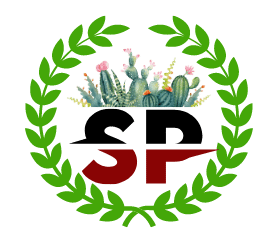
Wandering Jew Plant: Care and Propagation Guide
Table of Contents
Introduction
The Wandering Jew plant, also known as the Inch plant, has been a trendsetter in the world of plant swapping long before indoor gardening became popular. Its stunning foliage and ease of care make it a favorite among plant enthusiasts. Its variegated leaves, a captivating blend of purple, green, and silver, add a burst of vibrancy to any environment.
The name “Wandering Jews” refers to three distinct plant species: Tradescantia zebrina, Tradescantia pallida, and Tradescantia fluminensis . Tradescantia zebrina is the most widely grown of the three and boasts the most strikingly colourful leaves. The same conditions must be met by all three for healthy development.
This beauty hails from Mexico, Central America, and Colombia.
Why is it Called So?
It stems from its vigorous growth habit, seemingly “wandering” and cascading elegantly.
Preferred for foliage or flowers?
Embraced for lush foliage rather than flowers, this resilient plant is suitable for indoor and outdoor settings. The unique characteristic of the Wandering Jew Plant is its beautifully variegated, elongated leaves that display a striking combination of purple, green, and silver shades.
Where to Grow?- Indoor or Outdoors?
The trailing growth habit of this plant makes it ideal for hanging baskets or cascading over shelves, adding a touch of natural beauty to any indoor or outdoor space.
Growing Habits
They grow fast and can take up a lot of space if they are not properly handled. Every leaf node on their trailing stems, which can reach a length of 6 feet, produces a new sprout. The plant can stretch out and take on a lush, bushy appearance thanks to this growth pattern.
Because they can escape cultivation and occupy natural habitats, Wandering Jew plants are crucial to note that when cultivated outdoors, they are regarded as invasive in some areas. Nonetheless, they are readily confined in their pots when cultivated as houseplants.
Is it Suitable for First-time Plant Owners?
With its low-maintenance requirements and eye-catching appearance, the Wandering Jew Plant has gained popularity among both experienced plant enthusiasts and beginners. Its adaptability and resilience make it a suitable choice for first-time plant owners looking to enhance their home decor with a touch of nature.
Let’s explore its origin, characteristics, and care tips for plant enthusiasts, whether seasoned or novice.
Plant Characteristics

The Wandering Jew Plant features a well-developed root system that helps anchor the plant and absorb nutrients from the soil. The roots are typically fibrous in nature and grow in a spreading manner, enabling the plant to establish a stable foundation for optimal growth.

The stem of the Wandering Jew Plant is thin and trailing, allowing it to gracefully cascade down from its container or climbing surface. The stems are fleshy and succulent, providing the plant with the ability to store water and nutrients.

One of the most distinctive features of the Wandering Jew Plant is its vibrant foliage. The leaves are elongated and lance-shaped, measuring around two to three inches in length. The upper surface of the leaf showcases a stunning mix of purple hues, while the underside displays a contrasting silver shade. The leaves are covered with fine hairs, imparting a velvety texture that adds to their allure.

Although the primary appeal of the Wandering Jew Plant lies in its foliage, it occasionally produces small, three-petaled flowers. These flowers bloom in clusters and can range in color from pink to purple, adding a touch of delicate beauty to the plant. However, it’s worth noting that the flowers are not the main focus, and they may not appear frequently in indoor settings.
It produces oval-shaped seed capsules that contain tiny, brownish seeds. While the plant’s fruiting abilities are not its main attraction, they serve as a reminder of the plant’s reproductive capabilities.
Botanical Classification
Usda growing zone.
The USDA Hardiness Zone system is a universal guideline used to determine the climatic conditions suitable for various plant species. The Wandering Jew Plant thrives in zones 9-12, encompassing regions with average annual minimum temperatures ranging from 20 to 60 degrees Fahrenheit (-6 to 15 degrees Celsius).
If you reside in these zones, the Wandering Jew Plant can be grown both outdoors and indoors. However, if you reside in zones outside of this range, you can still enjoy its beauty by cultivating it as a houseplant in containers.
Special Features
The Wandering Jew Plant possesses several special features that make it an attractive choice for plant enthusiasts. Here are a few notable ones:
- Variegated Foliage: The striking coloration of the leaves, with its mix of purple, green, and silver, adds a touch of vibrancy and visual appeal to any space.
- Trailing Growth Habit: The cascading nature of the Wandering Jew Plant makes it an excellent choice for hanging baskets, shelves, or even as ground cover in outdoor gardens.
- Low Maintenance: This plant is well-known for its ability to thrive with minimal care. It can tolerate slight neglect and adapt to various environmental conditions, making it an ideal choice for plant beginners or busy individuals.
- Air-Purifying Abilities: Like many other houseplants, the Wandering Jew Plant actively removes toxins from the air, enhancing the overall indoor air quality. Its presence can contribute to a healthier living environment.
Is Wandering Jew Plant Poisonous ?
While the Wandering Jew Plant is undoubtedly beautiful, it is essential to be aware of its potential toxicity to humans and pets. The plant contains mildly toxic compounds when ingested. The most common symptoms of toxicity include gastrointestinal discomfort, such as nausea, vomiting, or diarrhea.
Furthermore, the sap of the Wandering Jew Plant can cause skin irritation or allergic reactions in sensitive individuals. It is advisable to wear gloves while handling the plant and to wash your hands thoroughly afterward.
If accidental ingestion occurs or if you notice severe symptoms such as difficulty breathing or skin rashes, it is crucial to seek immediate medical attention. In households with pets, it is recommended to keep the plant out of their reach to prevent any accidental consumption.
Wandering Jew Plant vs Purple Heart
The Wandering Jew Plant is often confused with another popular plant known as Purple Heart (Tradescantia pallida). While both plants belong to the same genus and share similar characteristics, it’s essential to distinguish between the two.
The Wandering Jew Plant (Tradescantia zebrina) is known for its elongated, lance-shaped leaves with striking variegation of purple, green, and silver shades. It has a trailing growth habit and is ideal for hanging baskets or cascading over shelves.
Purple Heart (Tradescantia pallida), on the other hand, features more elongated leaves with a solid, intense purple coloration. It is also a trailing plant that can be used similarly for decorative purposes.
Overall, the primary distinction is in the coloration and pattern of the leaves. While the Wandering Jew Plant showcases a unique mix of colors, Purple Heart stands out with its deep purple hue.
Types of Wandering Jew Plant
The genus Tradescantia has a wide range of plants with unique traits.
1. Tradescantia pallida ,’ Purple Heart,’
A fragile perennial that is frequently used as an annual or houseplant, is one noteworthy species. It has thin stems with lance-shaped, dark purple leaves that are occasionally accompanied by tiny pink or pale purple blooms.
2. Tradescantia fluminensis ,
A trailing perennial has succulent stems that easily root at nodes to create a dense carpet. It has star-shaped clusters of delicate white flowers, and its leaves are usually dark green with occasional stripes.
3. Tradescantia zebrina
Formerly called Zebrina pendula, is a creeping plant with succulent stems. It makes an excellent ground cover with its green to purple leaves that are striped with silvery white. In low light, this species tends to lose colour, and its stems break readily at the nodes.
4. Tradescantia Blossfeldiana
An evergreen perennial forms clumps and has glossy green leaves along with colourful blooms that have three triangle-shaped petals.
5. Tradescantia spathacea
Commonly called an oyster plant or Moses-in-the-cradle, is an evergreen that forms clumps. Its leaves are sword-shaped and grouped in a spiral pattern, and its purple bracts, which surround white flowers, have the shape of boats.
6. Tradescantia virginiana
Has 3-petaled blooms in terminal clusters and linear to broadly linear dark green leaves that grow up to 2½ feet tall. It may rebloom following summer dieback and is propagated by subterranean stolons.
7. Tradescantia sillamontana or, Cobweb Spiderwort
A low-growing plant whose leaves and stems are covered with silver-white hairs. In July, it produces pink blooms.
8. Tradescantia subaspera
Sometimes called Zigzag Spiderwort, has leaves that resemble grass and a zigzag stem, whereas Tradescantia ohiensis is a clump-forming spiderwort with purple to rose-blue blooms.
A variety of looks and growth patterns are offered by these Tradescantia cultivars, which make them appropriate for a range of environments, from groundcovers in gardens to houseplants.
General Overview of Wandering Jew Plant
Wandering jew plant care .
The Wandering Jew Plant thrives in bright, indirect light. While direct sunlight can scorch its leaves, it still requires a sufficient amount of light to maintain its vibrant colors. Place the plant near a north or east-facing window where it can receive an ample amount of bright but indirect sunlight throughout the day.
Temperature
The Wandering Jew Plant prefers a warm and humid environment, with temperatures ranging between 65-80 degrees Fahrenheit (18-27 degrees Celsius). Avoid exposing the plant to cold drafts or temperatures below 55 degrees Fahrenheit (13 degrees Celsius) as it can cause damage to the foliage.
The ideal soil for the Wandering Jew Plant should be well-draining and rich in organic matter. A mixture of peat moss, perlite, and regular potting soil works well to provide the necessary drainage while retaining moisture. Aim for a slightly acidic to neutral pH level, between 6.0 and 7.0, to encourage optimal growth.
Check the top inch of soil before watering and only water when it feels dry to the touch. Water thoroughly, allowing excess water to drain out of the pot.
Avoid overwatering , as it can lead to root rot, while underwatering can cause the leaves to wilt and dry out.
Methods of watering
Misting: Use a spray bottle to mist the leaves occasionally, especially during dry seasons or in environments with low humidity. This helps to mimic the plant’s natural habitat and prevents the leaves from becoming too dry
Pebble Tray Method: You can create a pebble tray by placing a saucer filled with water and pebbles underneath the pot. As the water evaporates, it increases the humidity around the plant.
Humidifier: Using a humidifier in the vicinity can provide a consistent humidity level.
The Wandering Jew Plant appreciates moderate to high humidity levels. In environments with low humidity, such as heated indoor spaces, consider using a humidifier or placing a tray of water near the plant to increase moisture levels. This helps prevent the leaves from drying out and ensures optimal growth.
To promote healthy growth, fertilize the Wandering Jew Plant every two to four weeks during the growing season, which typically spans from spring to early fall.
Use a balanced, water-soluble fertilizer diluted to half the recommended strength.
Apply the fertilizer directly to the soil, taking care to avoid contact with the leaves.
During the dormant period in winter, reduce the frequency of fertilization to once a month or suspend it altogether. This allows the plant to rest and prepare for the next growing season.
Potting and Repotting
Frequency: Repot when the plant outgrows its current container or if the soil becomes compacted. When repotting, gently loosen the root ball and place the plant in the new pot. Fill the remaining space with fresh potting mix , ensuring that the roots are adequately covered. Avoid pressing the soil too firmly, as it can impede proper drainage.
Mix: Use a fresh cactus mix or succulent mix while repotting.
Training and Pruning
The Wandering Jew Plant tends to grow long and trailing stems. To maintain a more compact and bushier appearance, it is essential to prune and train the plant regularly. Use clean, sharp scissors or pruning shears to remove any leggy or damaged stems. Cutting above a node helps promote new growth and encourages a fuller appearance.
Additionally, you can propagate the pruned cuttings to create new plants. Simply place the cuttings in water or moist soil, and they will quickly develop roots, ready for planting.
Wandering Jew Plant Care Indoors
When growing the Wandering Jew Plant indoors, it is crucial to provide optimal growing conditions. Here are a few essential tips:
- Position the plant near a north or east-facing window to receive bright, indirect light.
- Monitor the humidity levels and consider using a humidifier or placing a tray of water near the plant to increase moisture.
- Keep the plant away from cold drafts or temperature extremes, as it prefers warm temperatures.
- Regularly dust the leaves to prevent any blockage of pores and ensure optimal photosynthesis.
- Rotate the plant every few weeks to promote even growth and prevent it from leaning towards the light source.
With proper care and attention, the Wandering Jew Plant can thrive in indoor settings, adding a touch of natural beauty to your living space.
Wandering Jew Plant Care Outdoors
The Wandering Jew Plant can also be grown outdoors in suitable climates. Here are some guidelines to follow when caring for it outdoors:
- Choose a location that receives bright, filtered light. Avoid direct sunlight, as it can scorch the leaves.
- Ensure the soil is well-draining and rich in organic matter. Adding compost or organic fertilizers can help improve soil quality.
- Water the plant regularly, keeping the soil evenly moist but not waterlogged. Adjust the watering frequency based on weather conditions and rainfall.
- Protect the plant from excessive rainfall and fluctuations in temperature. Consider placing it under the cover of a tree or using a canopy during heavy rains.
- Monitor for pests and diseases regularly. Inspect the leaves for any signs of infestation or damage and take appropriate measures.
By following these guidelines, you can successfully cultivate the Wandering Jew Plant outdoors, allowing it to thrive and showcase its beauty in a natural setting.
Wandering Jew Plant Propagation

A. Cuttings
Step 1: Pick a mature, healthy stem that has a few leaves at least.
Step 2: Cut slightly below a leaf node with pruning shears or clean, sharp scissors.
Step 3: Cut off the lowest leaves so that the stem is naked for a few inches.
Once the cutting is prepared, you have two options for propagation:
1. Water Propagation: Place the cutting in a glass or vase filled with water, ensuring that only the bare stem is submerged. Position the container in a bright, indirect light location, and change the water every few days to prevent stagnation. After a few weeks, roots will start to develop, indicating that it is ready for transplanting into soil.
2. Soil Propagation: Dip the cut end of the stem in a rooting hormone powder, if desired, to promote root development. Plant the cutting in a well-draining potting mix, making sure that at least two nodes are buried in the soil. Mist the soil lightly to provide moisture, and cover the pot with a plastic bag or use a propagator to create a mini greenhouse effect. Place the pot in bright, indirect light and maintain moderate humidity. After a couple of weeks, roots should begin to form.
Ideal season: When the plant is actively developing, which is in the spring or early summer.
B. Grafting
Step 1: Select a disease-free, healthy rootstock and scion.
Step 2: On the scion and rootstock, cut diagonally.
Step 3: Use grafting tape or a similar substance to bind the two pieces together.
Step 4: Until the grafted plant develops, keep it in a humid atmosphere.
Ideal season: Late spring or early summer.
C. Seed Propagation
Step 1: Gather seeds from established Wandering Jew plants.
Step 2: Lightly cover the seeds after sowing them in a soil mixture that drains properly.
Step 3: Keep the temperature and moisture levels constant.
Step 4: When seedlings reach a sufficient size, transplant them.
Ideal Season: Spring.
The vendor, the size and health of the plant, and other factors affect the price. Larger, more mature specimens may cost between $20 and $30, whereas a tiny potted Wandering Jew plant typically costs between $10 and $15.
Locations for Purchases
1. nurseries.
Visit plant nurseries in your area. They frequently stock a range of succulents.
2. Internet-Based Plant Stores
Examine internet markets and plant stores. Numerous vendors give a large selection of succulents along with delivery choices.
3. Online shopping portals
Look through well-known online stores like Amazon and Etsy or specific websites that offer plants. Verify the seller’s reputation for high-quality plants and excellent ratings.
4. Plant exhibits
Go to farmers’ markets, and plant exhibits in your area. These may be great sources for unusual succulents.
Common Problems
A. disorders:.
Overwatering: Causes root rot, and yellowing leaves.
Underwatering: Leads to wilting and dry, crispy leaves.
Spider Mites: Visible webbing, stippled leaves.
Aphids: Clusters of tiny, soft-bodied insects on leaves.
C. Diseases:
Fungal Infections: Brown spots, wilting, and leaf drop.
Preventive Measures:
Maintain proper watering practices.
Regularly inspect and isolate new plants.
Provide adequate ventilation.
Pros and Cons
1. what kills wandering jew plants.
Overwatering and insufficient light can lead to demise. The plant is also vulnerable to fungal diseases that can result in brown patches, wilting, and leaf loss, as well as pests like aphids and spider mites.
2. What does the wandering jew plant symbolize?
The Wandering Jew plant is deeply embedded in Christian folklore, particularly associated with the concept of eternal wandering. It also implies a connection to the Jewish people, symbolizing their historical exile and forced wandering. Some see it as evidence of the Jewish people’s tenacity and will in their pursuit of wisdom and enlightenment.
3. How to revive a dying wandering jew plant?
Adjust watering and light, prune dead parts, and repot if necessary.
4. How to trim wandering jew plants?
To trim a wandering jew plant, use clean, sharp scissors or pruning shears to remove any leggy or damaged stems. Cutting above a node helps promote new growth and encourages a fuller appearance.
5. Who named the wandering jew plant?
The wandering jew plant is named after John Tradescant the Elder, an English gardener and botanist who introduced the plant to England in the early 17th century.
6. How long do wandering jew plants live?
As far as the longevity of Wandering Jews goes, they often don’t get older than 2 to 3 years.
In conclusion, the Wandering Jew plant emerges as not just a botanical marvel, but a testament to the timeless allure of indoor gardening. Whether adorning indoor spaces with its trailing vines or cascading over outdoor gardens, the Wandering Jew plant thrives with minimal maintenance, making it an ideal choice for those seeking a touch of nature in their homes.
As we delve into its characteristics and growing habits we embark on a journey that celebrates not only the beauty of this plant but also the joy it brings to those who welcome it into their homes.
https://thegardenhows.com/
https://plantophiles.com/
https://smartgardenguide.com/
https://www.epicgardening.com/
https://lotusmagus.com/

Mr. Prakash Bhattarai is Agriculture student. He writes content around gardening topics by doing social survey of real gardeners so that the factual information is delivered to the users.
View all posts
Leave a Comment Cancel reply
Save my name, email, and website in this browser for the next time I comment.
- PRO Courses Guides New Tech Help Pro Expert Videos About wikiHow Pro Upgrade Sign In
- EDIT Edit this Article
- EXPLORE Tech Help Pro About Us Random Article Quizzes Request a New Article Community Dashboard This Or That Game Popular Categories Arts and Entertainment Artwork Books Movies Computers and Electronics Computers Phone Skills Technology Hacks Health Men's Health Mental Health Women's Health Relationships Dating Love Relationship Issues Hobbies and Crafts Crafts Drawing Games Education & Communication Communication Skills Personal Development Studying Personal Care and Style Fashion Hair Care Personal Hygiene Youth Personal Care School Stuff Dating All Categories Arts and Entertainment Finance and Business Home and Garden Relationship Quizzes Cars & Other Vehicles Food and Entertaining Personal Care and Style Sports and Fitness Computers and Electronics Health Pets and Animals Travel Education & Communication Hobbies and Crafts Philosophy and Religion Work World Family Life Holidays and Traditions Relationships Youth
- Browse Articles
- Learn Something New
- Quizzes Hot
- This Or That Game New
- Train Your Brain
- Explore More
- Support wikiHow
- About wikiHow
- Log in / Sign up
- Home and Garden
- Indoor and Patio Plants
A Complete Guide to Wandering Jew Plant Care
Last Updated: March 27, 2024 Fact Checked
- Potting Your Plant
- Caring for Your Plant
Preventing Pests & Disease
Expert q&a, things you'll need.
This article was co-authored by Chai Saechao and by wikiHow staff writer, Dev Murphy, MA . Chai Saechao is the Founder and Owner of Plant Therapy, an indoor-plant store founded in 2018 based in San Francisco, California. As a self-described plant doctor, he believes in the therapeutic power of plants, hoping to keep sharing his love of plants with anyone willing to listen and learn. There are 12 references cited in this article, which can be found at the bottom of the page. This article has been fact-checked, ensuring the accuracy of any cited facts and confirming the authority of its sources. This article has been viewed 634,357 times.
Wandering Jews are beautiful vining plants known for their solid or variegated leaves. These hardy perennials thrive outdoors as groundcover or in pots that allow their tendrils to cascade. They’re relatively easy to care for and incredibly simple to propagate, making them great houseplants! Keep reading for an easy step-by-step guide to Wandering Jew maintenance, from planting to watering to pruning.
Things You Should Know
- Keep your Wandering Jew in a warm spot (around 50–80 °F (10–27 °C)) with lots of bright, indirect sunlight.
- Pot your plant in well-draining potting soil in a container with drainage holes. Keep the soil moist, but not soaking wet.
- Pinch or prune the leaves when the plant gets leggy to promote bushiness, or when any leaves or vines begin to brown or rot.
Potting Your Wandering Jew Plant

- Refer to this map to see if your area's temperatures are warm enough to support a Wandering Jew plant, if you're planning on keeping it outside. According to the USDA, the Wandering Jew plant grows best in zones 9-11.
- If you don’t live in USDA hardiness zones 9-11, keep in mind that you may not be able to keep your plant outside during the winter. You may want to grow it inside instead.

- If you use a hanging basket, remember to turn it daily so it gets equal amounts of sunlight.
- If you’re hanging your plant, choose a lightweight or plastic pot so it won’t fall. This also makes it easier to move inside in case of frost.

- Be careful not to use soil that’s too heavy, as Wandering Jews need light soil that drains well. [3] X Research source
- Buy well-draining soil, or, if you already have heavier soil, mix equal parts soil with compost, or equal parts soil, compost, and peat.
- Purchase a Wandering Jew plant at a gardening or home improvement center, or propagate cuttings from established plants . Wandering Jew cuttings grow very quickly.
Watering, Fertilizing & Pruning Your Plant

- If you’re growing your plant indoors, an eastern facing windowsill is a good spot. The plant will receive bright indirect light throughout the day, but watch to make sure the space doesn't become too hot in the afternoon. If so, move the pot a few feet away or use a curtain to filter the light. [5] X Research source
- If the plant primarily remains outside, find a spot that receives indirect sunlight. This could be on a porch that gets morning sun for several hours. Just make sure that it's not sitting in direct sunlight without any shade for most of the day.

- If you've set your pot on a saucer, empty the saucer when it fills.
- The plant's growth will slow in the winter months, meaning it needs to be watered less often. Simply let it remain a little dry for a bit longer before watering.
- Some people find it convenient to put self-watering aqua globes in their plant pots; however, these glass globes require cleaning and regular filling. You'll still need to monitor your plant's moisture if you choose to use them.

- Read the container's instructions carefully before fertilizing, as some liquid fertilizers may actually be powders requiring you to mix in water.

- The best time to prune is during the spring and summer months, when the plant is putting on the most growth. After you've pruned, give the plant a chance to put on new shoots and fill in.
- If you find your plant is too dense and bushy, you'll need to prune around the base so that the plant can get adequate circulation and sunlight.

- Generally, expect to repot your plant annually, but keep an eye out for signs your plant has outgrown its container within that time frame: once you see roots creeping out from under the plant through the drainage holes, or popping up through the soil, it’s time to repot. [10] X Trustworthy Source Penn State Extension Educational organization dedicated to delivering science-based information to people, businesses, and communities Go to source

- Try to use distilled or bottled water when misting the leaves for the best results.
- Brown leaves can also be a sign that your plant is getting too much sunlight. In this case, make sure your plant is not directly in the sun by moving the pot or placing a filter, such as a curtain, in between the plant and the window.

- Root rot can spread very quickly, so act fast when you see signs of it. It can be heartbreaking to cut away a large chunk of your plant, but if you wait too long, you could lose the whole plant. [14] X Research source
- Other signs of root rot include spongy, black roots.

- Though "Wandering Jew" is the most common name for this plant, some people may find this term offensive. Consider using "wandering dude" or "inch plant" instead. Thanks Helpful 2 Not Helpful 2
- "Wandering Jew" doesn't refer to just one plant: it refers to a variety of Tradescantia species, the 3 most common of which include Tradescantia fluminensis ("Quicksilver"), Tradescantia pallida ("Purple Heart"), and Tradescantia zebrina ("Tricolor"). Care is the same for all 3. Thanks Helpful 1 Not Helpful 1

- Be careful when pinching or pruning your plant. Wandering Jew sap can cause skin irritation in some people and allergic reactions in dogs. To be safe, wear gardening gloves when pruning your Wandering Jew. [15] X Research source Thanks Helpful 0 Not Helpful 0
- Wandering Jew cuttings or a plant
- Well-draining potting soil
- Pot or hanging basket
- 10-10-10- fertilizer
- Aqua globes (optional)
- Pruning shears (optional)
- Gardening gloves
You Might Also Like

- ↑ https://houseplantcentral.com/tradescantia-zebrina-care-info/
- ↑ https://www.almanac.com/plant/inch-plants
- ↑ https://getbusygardening.com/wandering-jew-plant-care/
- ↑ https://www.weekand.com/home-garden/article/indirect-light-plants-18005506.php
- ↑ http://www.almanac.com/plant/wandering-jew
- ↑ https://www.weekand.com/home-garden/article/use-101010-fertilizer-garden-18057536.php
- ↑ http://www.gardeningknowhow.com/houseplants/wandering-jew/growing-wandering-jew-plants.htm
- ↑ https://extension.psu.edu/repotting-houseplants
- ↑ http://www.houseplantsforyou.com/wandering-jew/
- ↑ http://www.gardeningknowhow.com/plant-problems/disease/treating-root-rot-gardening-tips-for-housplants.htm
- ↑ https://www.wildinteriors.com/blog/2019/10/30/treating-root-rot-and-soft-rot-in-houseplants
- ↑ https://www.weekand.com/home-garden/article/wandering-jew-plants-dangerous-dogs-18063157.php
About This Article

To take care of your Wandering Jew plant, place it by an east-facing window so that it gets a combination of direct and indirect sunlight. Keep the soil moist, but not soaked, and water the soil instead of the top of the plant to avoid rot. You should also fertilize the Wandering Jew plant every two weeks with a liquid 10-10-10 fertilizer. To keep the plant from getting leggy, trim back the stems in the spring and summer. Did this summary help you? Yes No
- Send fan mail to authors
Reader Success Stories
Nancy Gibson
Jun 6, 2016
Did this article help you?
Sherry Clark
Mar 30, 2016
Sep 23, 2016
Beverly Cox
May 18, 2016

Featured Articles

Trending Articles

Watch Articles

- Terms of Use
- Privacy Policy
- Do Not Sell or Share My Info
- Not Selling Info
wikiHow Tech Help Pro:
Develop the tech skills you need for work and life
Wandering Jew Plants Guide: How to Grow & Care for “Tradescantia zebrina”
It might surprise you to learn that “the wandering Jew” isn’t a single plant, its name used to describe a collection of plants in the Tradescantia genus.
Many countries around the world view the wandering Jew as an invasive species. Therefore, you won’t find many of them as regular additions to gardens . However, the vine makes for an excellent indoor plant .
Table of Contents
Quick Facts
Wandering jew plant varieties.
The wandering Jew refers to three different plants in the Tradescantia genus. The three varieties are the zebrina, fluminensis, and the pallida.
Tradescantia Zebrina
The zebrina is the most common of the three species, and it features dark-green foliage that contrasts against the brilliant-white three-petal flowers the plant produces.
As you can imagine, the plant also gets part of its name from the zebra-like foliage. The center of the leaf id has a creamy-white color, and the outer trimming of the leaves has a silver lining.
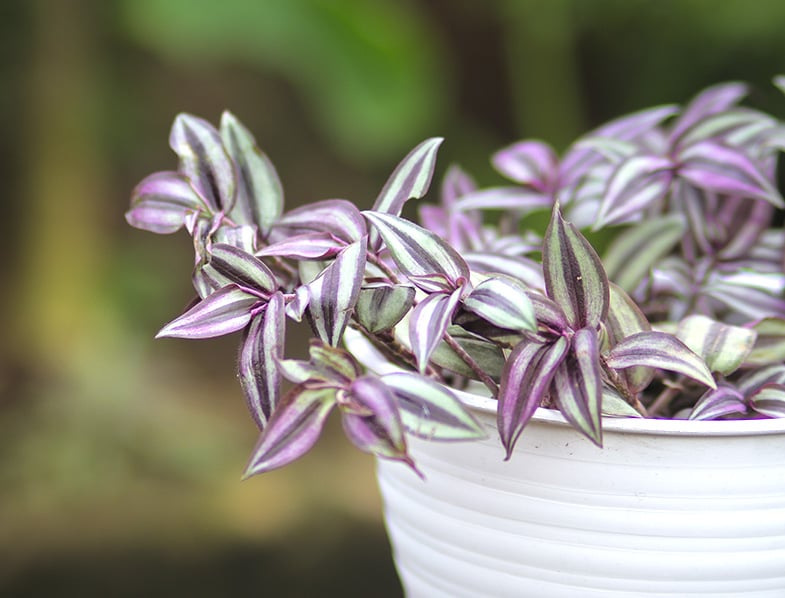
Tradescantia Fluminensis
This wandering Jew species features white flowers, and it’s a trendy indoor plant around the world. The species originates from the southeastern region of Brazil. It’s an evergreen perennial plant that flowers all-year-round and lasts for many years if the owner takes care of it correctly.
The oval-shaped foliage of the Fluminensis is green in color and has a glossy look. The leaves attach to fleshy stems, and the stem nodes quickly put roots down into the soil, allowing for the rapid spread and growth of the plant in ideal growing conditions.
When the plant flowers , it produces a set of flowers with three white petals. The flowers don’t bear any seeds, and they might also emerge in clusters. There are various sub-species of this plant as well, and some types, such as variegate, feature different leaf colors, such as yellow or cream streaks in the leaves.
The plant does best in USDA zones 9 to 12, as it loves the additional humidity in these regions as well. The wandering Jew doesn’t do well in colder climates, so stick to planting in the southern states.
The wandering Jew also prefers full sunlight during the day, and you’ll need to feed it a reasonable amount of water throughout the week. The plant doesn’t enjoy being dry for long periods.
Tradescantia Pallida
This variety originates in Mexico, and it’s the most attractive of the three Tradescantia genus. This wandering Jew produces long, pointy leaves that can reach lengths of 7-inches. The leaf will eventually turn a purple color, but the tips might remain red or green during the color transition.
There are visible segmentations on the stem of this wandering Jew, and it’s for this reason that many countries classify this plant as invasive.
The segments break easily, but they root readily, evolving into two plants with little care. Fortunately, for fans of the plant, it also makes it easy to grow the plants for cuttings as well.
Tradescantia pallida don’t like the cold, and it will die back in colder environments in the Northern states, especially if it grows outside. This wandering Jew produces small flowers that bloom in colors of pink, lavender, and white. The flowers feature three petals, and while they aren’t show-stopping, then do add a beautiful aesthetic to the plant.

- shipped in inproved box to save the plant

Last update on 2024-02-01 / Affiliate links / Images from Amazon Product Advertising API
Natural Air Cleaners
One of the reasons why the wandering Jew is such a popular house plant is its natural air-cleaning properties. The wandering Jew is an excellent “air scrubber,” and it removes bacteria and VOCs from the air inside your home, exchanging it for fresh air that enhances your home.
Some research also shows that the wandering Jew can assist in soil remediation, as well. The plant can remove heavy metals from the soil, helping restore the root health of other plants in the same flowerbed or pot.
Caring for Your Wandering Jew Plant
All varieties of the wandering Jew are easy to care for, provided that you grow them in the right climate and conditions. As long as the plant receives regular watering and pruning, it will thrive, and you’ll also manage to control the growth as well.
If you plant in a sunny spot in your home, then you can expect your tradescantia to last for many seasons. It’s also important to note that the plant might not flower it in its first season. However, by the third year, you should see plenty of flowers that emerge in the summer months.

As mentioned, the wandering Jew prefers sunny planting locations. The plant prefers later afternoon sun to morning sun, but it does well in any sunny area around the home. The more light you give the plant, the more flowers it produces in the flowering season.
If your wandering Jew does not get sufficient sunlight, you’ll notice that the color of the leaves starts to fade. Move the plant to a sunny spot, and it should recover in less than a week.
The wandering Jew enjoys a balanced moisture level in its soil . Don’t let the earth get too dry, as it might cause burning in the tips of the leaves. Likewise, the wandering Jew does not enjoy excessively wet soil either. The plant is susceptible to forming root rot if you “keep its feet wet.”
To check if it’s time to water your wandering Jew, push your finger about 1-inch into the soil. If it feels dry, then give your plant some water.
You must ensure you use a rich, loamy soil that drains well when planting your wandering Jew. When planting in a pot, make sure you add a layer of gravel at the bottom of the pot to enhance drainage. Add perlite to the soil to assist with drainage as well.
You can get away with using a standard potting mix when planting indoors , and other soil enhancements we recommend you add are the following.
- Coarse sand and perlite for drainage
- Humus or peat
- A light dusting of lime
- A few handfuls of rich organic compost
You want the soil to retain water but still allow optimal drainage.
During the growing season, fertilize your wandering Jew plant using a liquid-based fertilizer product. Make sure that you dilute the fertilizer to 50-percent strength.
Strong concentrations can result in burning in the tips of the leaves of the plant. You can also add a granular slow-release fertilizer to the soil once a year at the start of spring.
The wandering Jew grows quickly, and it might take over its pot in one or two seasons, depending on the size of the container. Therefore, you’ll need to pull up the plant and divide it from year-to-year, depending on its growth rate.
If you choose to re-pot your plant, make sure you use a pot that’s at least 50-percent larger than the old one. Line the pot with potting soil and a few handfuls of rich organic compost. Dig around the edges of the existing container to loosen the root ball. After loosening, pull the base of the plant to release it from the pot.
Move the plant to its new pot, and then fill with potting mix to cover the roots — Pat down the soil, and then water lightly.
Wandering Jew plants require regular pruning . The plant grows quickly, and if you don’t prune, then it can overtake the pot fast. Pruning also helps the stem, from getting “leggy,” meaning that the plant starts to look bare at the base. Pruning keeps the plant healthy and growing at an optimal rate.
All; you need to do is prune back any stems and pinch the stem tips. The wandering Jew will then send out two new shoots from the pinched top, helping your plant spread out into a bush-like appearance.
Propagation
The wandering Jew is easy to propagate . This plant grows quickly in a variety of conditions, which is one of the reasons why most countries list it as invasive. You can propagate your cuttings after your pruning session, without much effort.
Remove all of the leaves but the top set after pruning the stem. Place the cutting in another smaller pot with moist potting soil . Leave the container in the sun, and you should find that the cutting roots in a month.
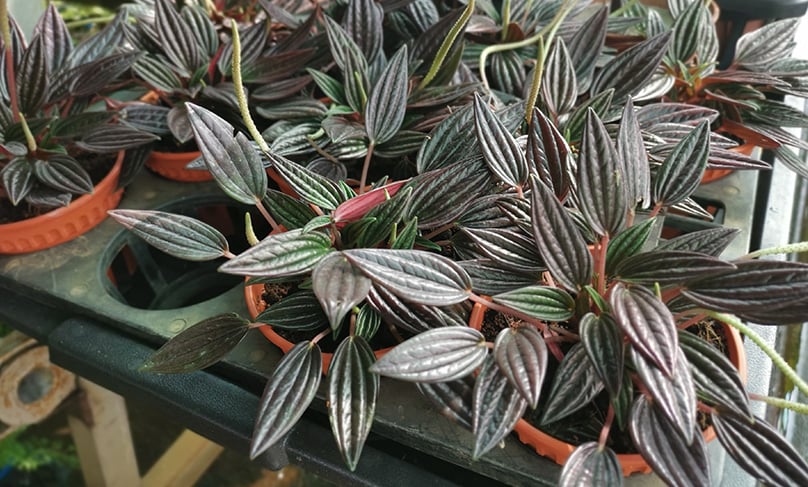
Being an indoor plant , the wandering Jew does not get much attention from pests. However, spider mites can be a problem for your plant if you don’t take care of it and watch for the presence of pests.
Spider mites are tiny spider-like bugs that form a web around the inside of the leaves of the plant. If left unmanaged and untreated, they might start to cause yellow spots in the foliage. The wandering Jew might also fail to flower in the summer months as well.
Over-watering your wandering Jew plant can result in the onset of diseases like root rot. Ensure that you have a well-draining soil mix before planting your wandering Jew. Provided that you do everything you can to ensure your soil drains well, you should never have a problem with root rot in your wandering Jew plant.
Wandering Jew Plants FAQS
What is the best way to grow a wandering jew plant.
The best way to grow a Wandering Jew plant involves placing it in a location that gets plenty of sunlight, preferably late afternoon sun. You should use well-draining, loamy soil to plant it, and ensure a balanced moisture level by watering it regularly but not excessively. The plant also appreciates humidity and occasional fertilizing with a liquid-based fertilizer diluted to 50% strength during the growing season. Pruning should be done regularly to manage its growth.
Is Wandering Jew easy to grow?
A: Yes, Wandering Jew plants are generally easy to grow. They adapt well to various conditions and are fast-growing. They can be propagated easily from cuttings and require minimal maintenance beyond regular watering, pruning, and an occasional application of fertilizer. However, they do not tolerate cold climates very well.
Does wandering Jew like full sun or shade?
Wandering Jew plants prefer locations with full sunlight. They can tolerate some shade but too much shade can cause the color of the leaves to fade. More sunlight exposure generally leads to more flowers during the flowering season.
How often do you water Wandering Jew?
Wandering Jew plants should be watered regularly to maintain a balanced moisture level in the soil. However, the soil should not be allowed to become too dry or too wet. Overwatering can lead to root rot. A good way to check if it’s time to water is to push your finger about 1-inch into the soil. If it feels dry, it’s time to water the plant.
Is Tradescantia Zebrina easy to grow?
Yes, Tradescantia Zebrina, a variety of Wandering Jew, is easy to grow. It requires similar care to other Wandering Jew varieties and is known for its adaptability and quick growth.
Does Tradescantia Zebrina need full sun?
Tradescantia Zebrina does best in a location with full sunlight. While it can tolerate some shade, insufficient sunlight can cause the leaves to lose their vibrant color. Like other Wandering Jew plants, the more light it gets, the more flowers it produces during its flowering season.

Hollie is a life-long gardener, having started helping her Dad work on their yard when she was just 5. Since then she has gone on to develop a passion for growing vegetables & fruit in her garden. She has an affinity with nature and loves to share her knowledge gained over a lifetime with readers online. Hollie has written for a number of publications and is now the resident garden blogger here at GardenBeast. Contact her at [email protected] or follow on twitter https://twitter.com/greenholliec
Pampas Grass Guide: How to Plant & Care for “Cortaderia Selloana”
Rhaphidophora tetrasperma guide: how to grow & care for “mini monstera”, corn plant guide: how to grow & care for “dracaena fragrans”.
under the photo “easy to propagate”, that is not a wandering jew-its a peperomia “rosso!”
My wandering jew plants leafs are getting dried. Why is that?
It’s not getting enough humidity
Could you elaborate on “rich organic compost”? What should it be made of, exactly? Can I use compost accelerator in the soil mix?
Worm castings are great, or worm tea, egg shell tea is another.
What month does the jew break ground to start growing?
All depends on your specific areas weather pattern and seasons.
Do NOT BUY ANY OF THIS SPECIES if you have a dog because dogs are very allergic to these plants & come out in bad rashes if they wander through them!
Leave A Reply Cancel Reply
Save my name, email, and website in this browser for the next time I comment.
Type above and press Enter to search. Press Esc to cancel.
Wandering Jew Plant

A Perfect Choice for First-Time Plant Owners
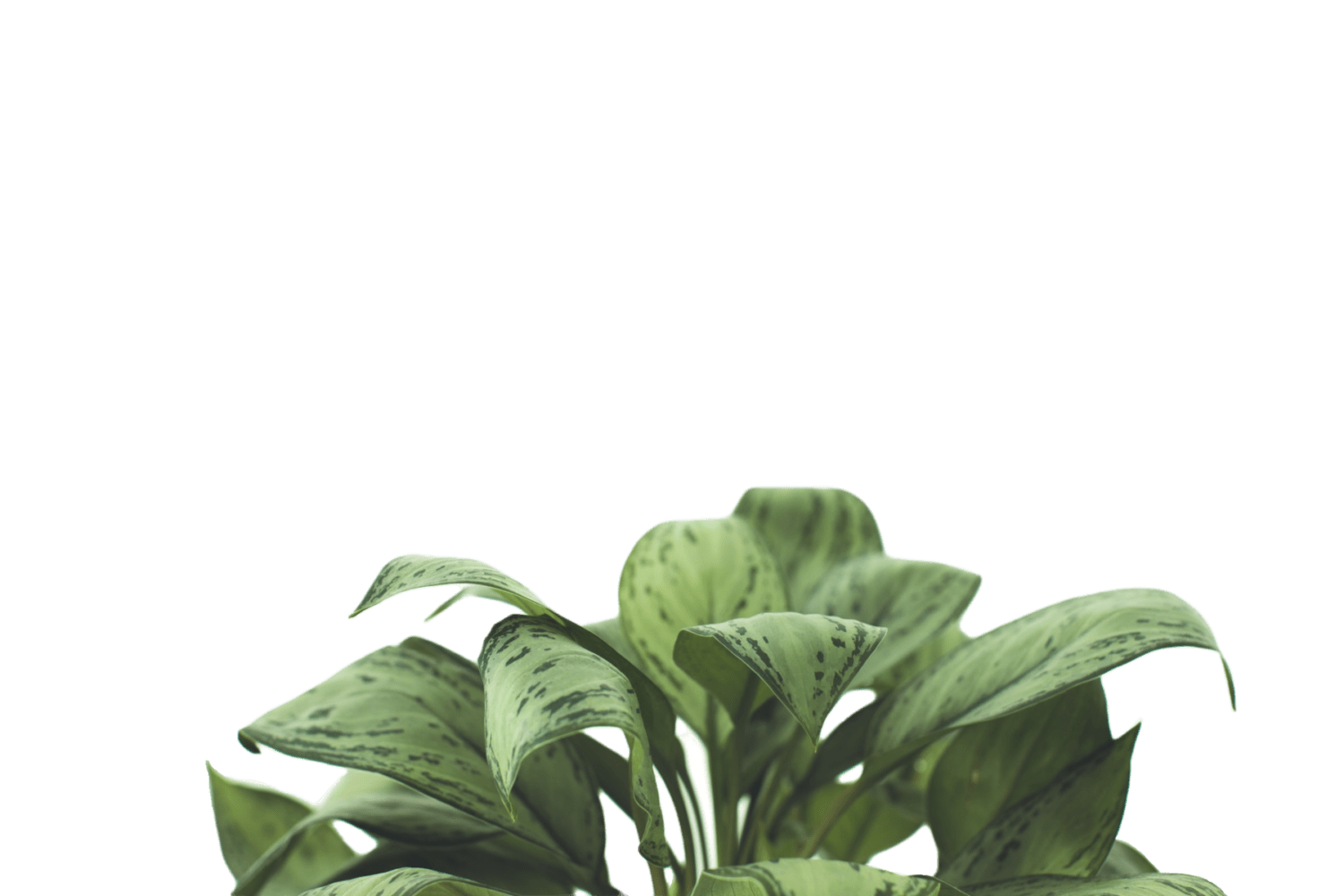
Get to know us
Growing problems in wandering jew plants.
Yellowing leaves may result from excessive sunlight. Relocate your inch plant to a spot with bright, indirect light or propagate a cutting for a new planting. Prolonged soil moisture can stress the plant, fostering rot. Adjust watering accordingly.
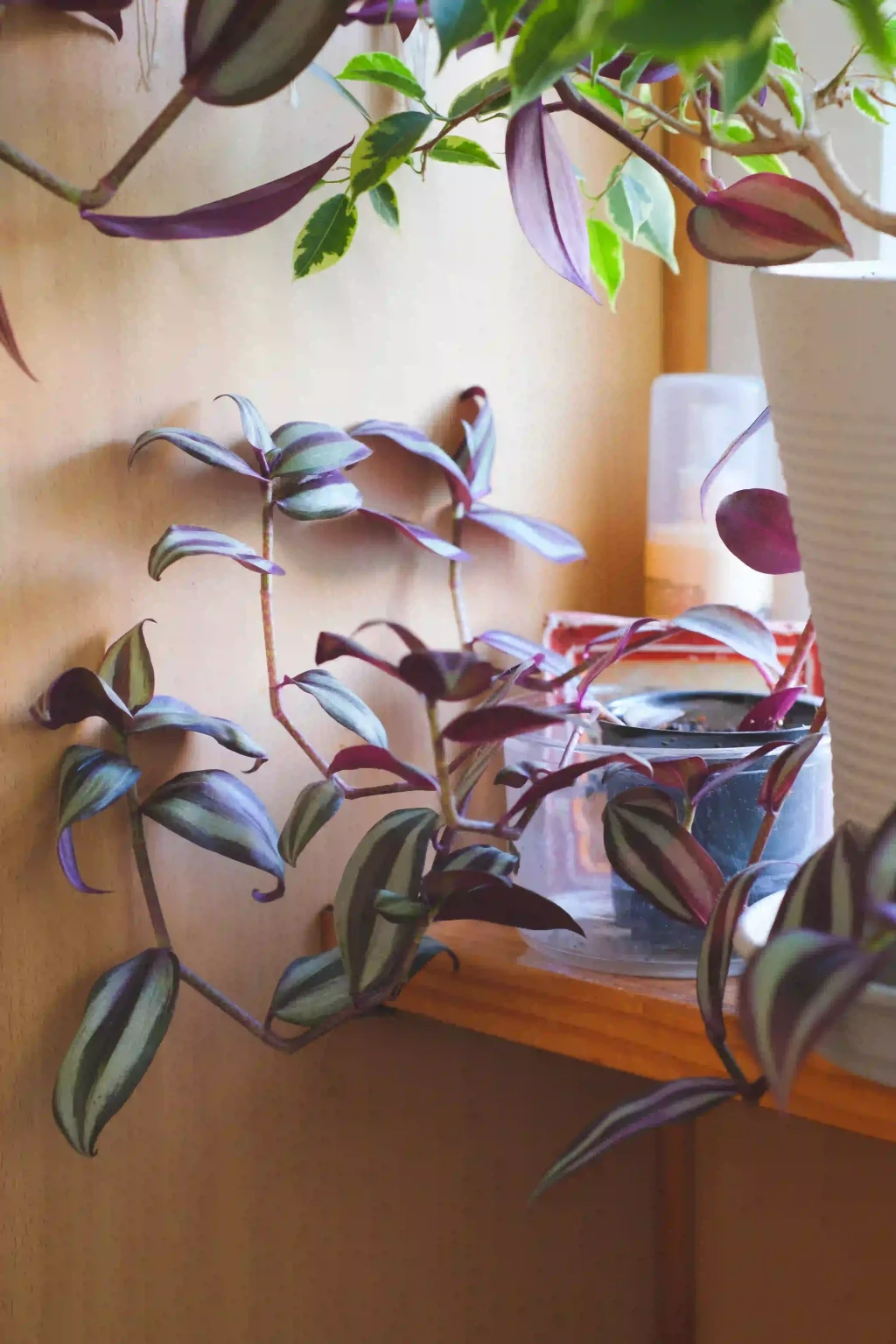
Dealing with Pests in Wandering Jew Plants
Spider mites are the primary pests for wandering jew plants. They thrive in warm, dry environments, so maintaining high humidity or misting your wandering jew plant is an effective countermeasure.
If these methods prove ineffective, try rinsing the plant with water to dislodge the mites. For more severe infestations, consider removing affected areas and employing a systemic insecticide.
Aphids also extract sap from the leaves of wandering jew plants. When cultivating these plants indoors, transport them outside for treatment with neem oil or a forceful water stream. Ensure follow-up applications every 7 to 10 days if aphids persist.
Addressing Common Issues in Wandering Jew Plant
- Overwatering
- Soil retaining excessive water
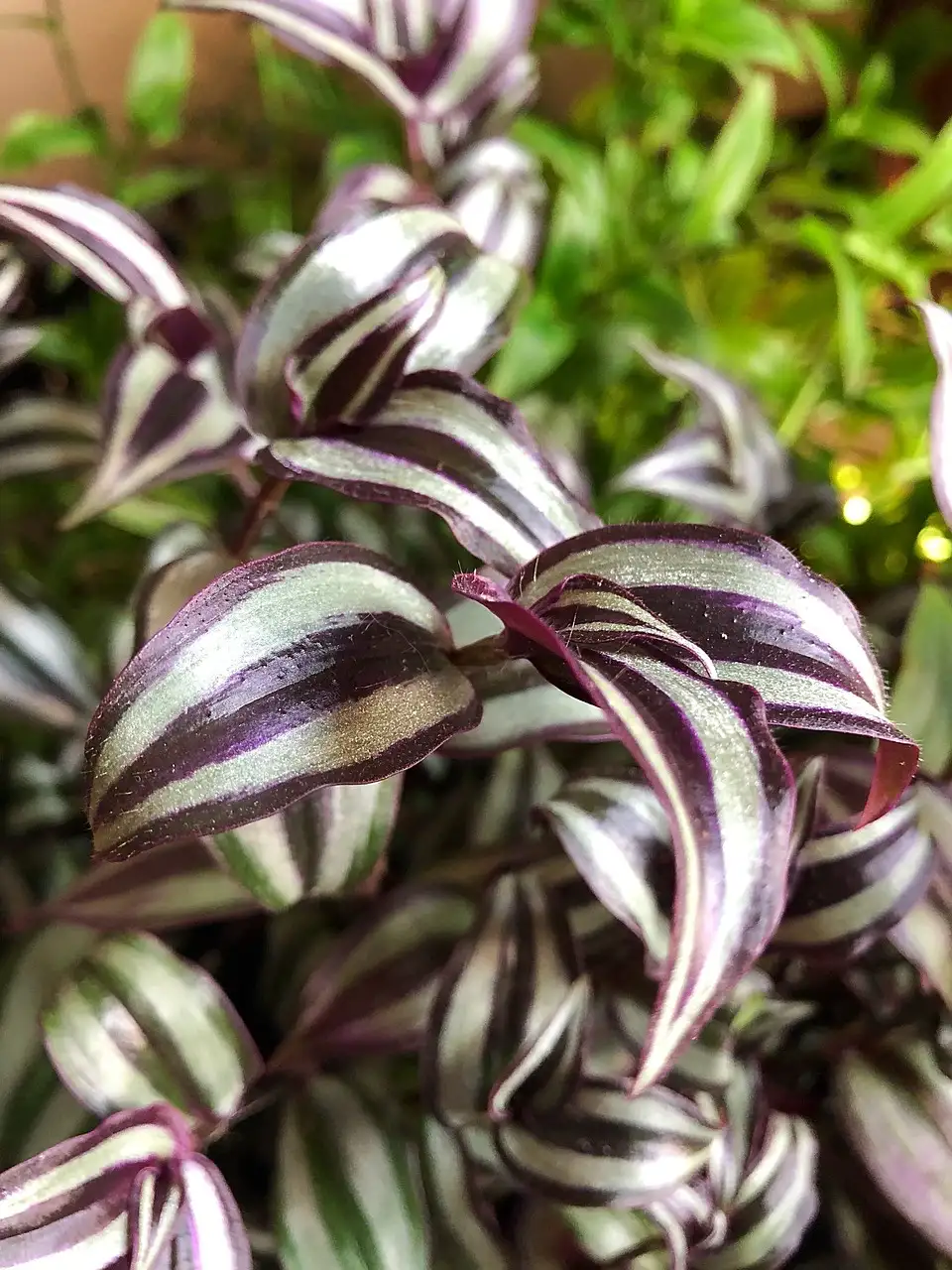
Wandering Jew Plant Care (Indoor & Outdoor)
Wandering jews display particular sensitivity to receiving the correct light dosage. They require ample light for maintaining their vibrant color, but exposing their leaves to direct sunlight can result in burns (except for the purple queen variety, which thrives in full sun).
The optimal position for cultivating them indoors is a window facing east or west. This way, they receive abundant natural light during the morning/evening and bright, indirect sunlight for the remainder of the day.
Insufficient light exposure leads to a fading and dull appearance of their leaves. Thus, if a location with abundant natural sunlight is unavailable, incorporating a grow light is advisable.
However, if the decision is made to transfer the inch plant outdoors for the summer, it is crucial to place it in a shaded or partially shaded area, sheltered from the intense afternoon sun.
The wandering jew plant prefers its potting mixture to remain consistently moist but not excessively saturated. In situations with indirect light, hydrate your wandering jew plant once a week or when the upper layer of soil becomes arid. Ensure that the soil never reaches complete dryness.
Nevertheless, when irrigating your desiccated potting mixture, administer water in intervals to guarantee thorough absorption by the soil, preventing it from simply flowing out of the planter. Apply a small amount of water, pause for a while to allow the soil to soak it up, and then proceed with watering until it drains from the planter’s bottom drainage hole.
The soil for your wandering jew is suitable for a conventional houseplant potting blend, yet they will thrive even more in soil enriched with additional organic material.
Enrich your potting mixture by incorporating some organic compost, perlite, and peat moss. Strive for the optimal equilibrium between retaining water and facilitating drainage. Water the plant and observe the soil’s tendency, then make adjustments accordingly. The preferred soil pH falls within the range of 5 to 6.
Another crucial aspect of effective wandering jew plant care is humidity, and a substantial amount is required. When the humidity drops too low, the leaves will begin to brown and wither.
This becomes particularly challenging when cultivating them indoors in the winter season, as the air inside our homes tends to be excessively dry. Therefore, maintaining high humidity levels is of utmost importance.
A convenient method to elevate humidity is by operating a nearby humidifier. Additionally, it is advisable to place an indoor humidity monitor close to your inch plant.
You may also place the pot on a pebble tray filled with water (avoiding soaking) or opt for growing it in a small plant cloche or a miniature indoor greenhouse.
Temperature and Humidity
Your inch plant thrives most in a temperature range of 60 degrees Fahrenheit to 80 degrees Fahrenheit. Exposure to frost can be fatal to the plant. However, in USDA hardiness zones 9 through 11, the plant might endure light frosts. In these regions, if the leaves wither, there’s a chance the plant will revive in the spring.
When the external temperature consistently drops below 60 degrees Fahrenheit, container-grown plants should be relocated indoors. While intense heat can scorch the leaves, the plant can endure high temperatures much better than it can tolerate cold.
An optimal relative humidity of 70% is recommended for Tradescantia plants. Indoors, achieving the right humidity level can be accomplished by utilizing a plant humidifier or misting the plants daily with filtered or distilled water.
The Inch plant generally doesn’t necessitate specific pruning. Pruning becomes relevant for the creeping inch plant in two scenarios: firstly, to eliminate withered foliage, and secondly, to govern the plant’s shape and growth pattern. If left unattended, the spiderwort plant tends to become leggy; to maintain a fuller appearance, periodically prune the stems or pinch back at least one-fourth of the branch length.
Utilize sharp and clean pruning shears or scissors to trim stems to the desired length, cutting at an angle between leaf nodes. To eliminate dead or yellowing leaves, simply pinch them away, ensuring the leaf stalk is also detached from the main stem.
Fertilizing
Spiderwort plants typically don’t require regular fertilization as part of their routine care. However, they can certainly benefit from occasional nourishment.
Feeding is only necessary during spring through summer; refrain from fertilizing in the fall or winter. Winter growth tends to be weak and leggy, and encouraging that is not desirable.
You can nourish your plant monthly with a liquid fertilizer diluted to half strength. I suggest opting for organic plant food over synthetic alternatives, as wandering dudes can be sensitive to chemical fertilizers.
A quality organic general-purpose fertilizer or compost tea would be excellent choices. If you prefer, you can also incorporate slow-release organic granules into the soil.
Fish emulsion and liquid kelp are also effective options, but it’s advisable to use them outdoors as they can emit a strong odor when used indoors.

Wandering Jew Plant Benefits
Tradescantia Zebrina isn’t merely aesthetically pleasing; it functions as an inherent air purifier. Positioned in your living area, it diligently eliminates undesirable substances such as formaldehyde and xylene. There are numerous advantages to Wandering Jew plants that render cultivating the plant somewhat worthwhile. Let’s Take a look at the primary benefits of Wandering Jew plants.
Aesthetic allure
Owing to their splendid visual appeal, Wandering Jew plants are predominantly retained in households and gardens as embellishments. They are ideal for suspended baskets or containers. Their beautiful deep purple, emerald green, and silver streaks impart a distinctive taste to every room in your residence!
Upon reaching maturity, Wandering Jew plants also commence flowering. They showcase stunning blossoms.
Purify Air
Inch plant (Wandering Jew), also recognized as Tradescantia zebrina, has gained popularity due to its captivating, exotic foliage. Its appealing oval-shaped leaves can appear in silvery, purple, and green hues. This resilient and easily-managed plant also boasts numerous small purple, white, and pink flowers that develop along the length of slender stems, reaching a height of up to three feet.
Not only are Inch plants visually pleasing, but they also contribute to indoor air purification. Emitting oxygen, they absorb pollutants and diminish allergenic dust mites in indoor environments; this makes them an optimal choice for enhancing indoor air quality. As per alive, this indoor plant reduces benzene, TCE, toluene, and terpenes.
A pleasant present
Houseplants might not be the initial consideration when pondering gifts, but they serve as the flawless means to bring a smile to someone’s face on any occasion.
The perfect gift for every special event, whether commemorating a holiday, advancement, engagement, or property ownership, could be a houseplant gift.
Opting for a Wandering Jew plant is among the finest choices for gifts. They are available in vibrant varieties, are uncomplicated to cultivate, and have a reasonably compact size.
Medicinal uses
To take advantage of the healing abilities of the Wandering Jew plant, the leaves and stems are mainly used which are processed in different ways such as decoctions and teas. Being an antioxidants-rich plant, it aids in general health by deactivating the free radicals and also fighting inflammation. Its properties as an an anti-inflammatory and also antimicrobial agent make it a natural treatment for the conditions such as nephritis and also urinary tract infections.
Furthermore, the infusion of the plant is widely used in Malaysia to enhance the kidney performance and also preserve the health of the urinary system. Research suggests a possible anti-arrhythmic effect, which is very good for the cardiovascular system, but further studies are definitely required to understand and develop this benefit.
Reducing Stress
Based on research, incorporating plants into your residence or workplace can contribute to a sense of ease, tranquility, and connection with nature. Consequently, placing Wandering Jew plants throughout your dwelling could aid in reducing tension and stress, enhancing your efficiency.
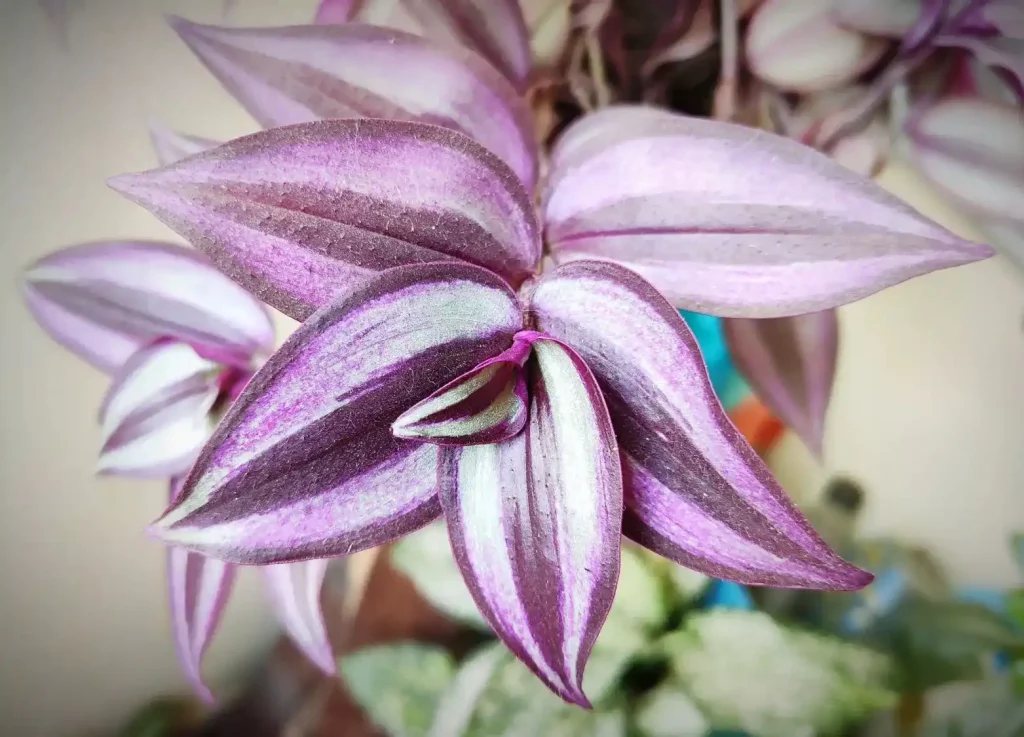
Quicks Facts About Wandering Jew Plant
Key Details about Wandering Jew Plants:
- Scientific Name: Zebrina pendula
- Common Names: Wandering Jew
- Propagation: Layering, Stem Cuttings
- Watering: Drench, Allow to Dry
- Humidity: Typical Home Levels
- Light Requirement: Bright to Filtered Light
- Potting Mix: All-Purpose
- Temperature: Indoor Settings
- Fertilization: Balanced
- Care Rating: Very Easy
- Decorative Use: Hanging Baskets, Tables
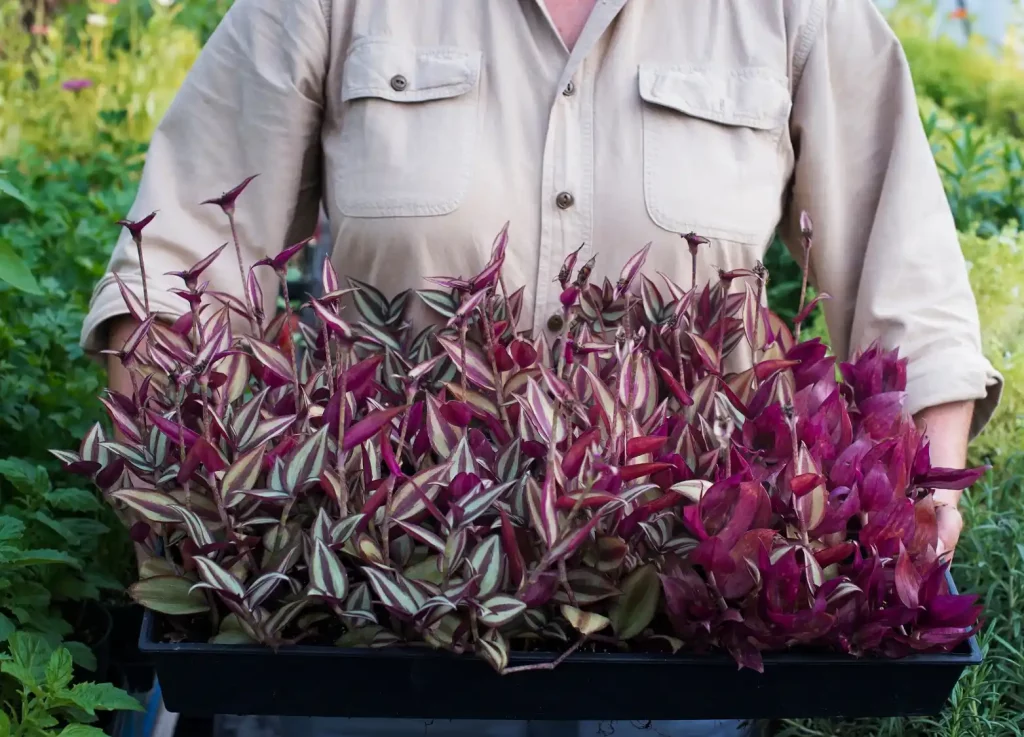
Our Gallery
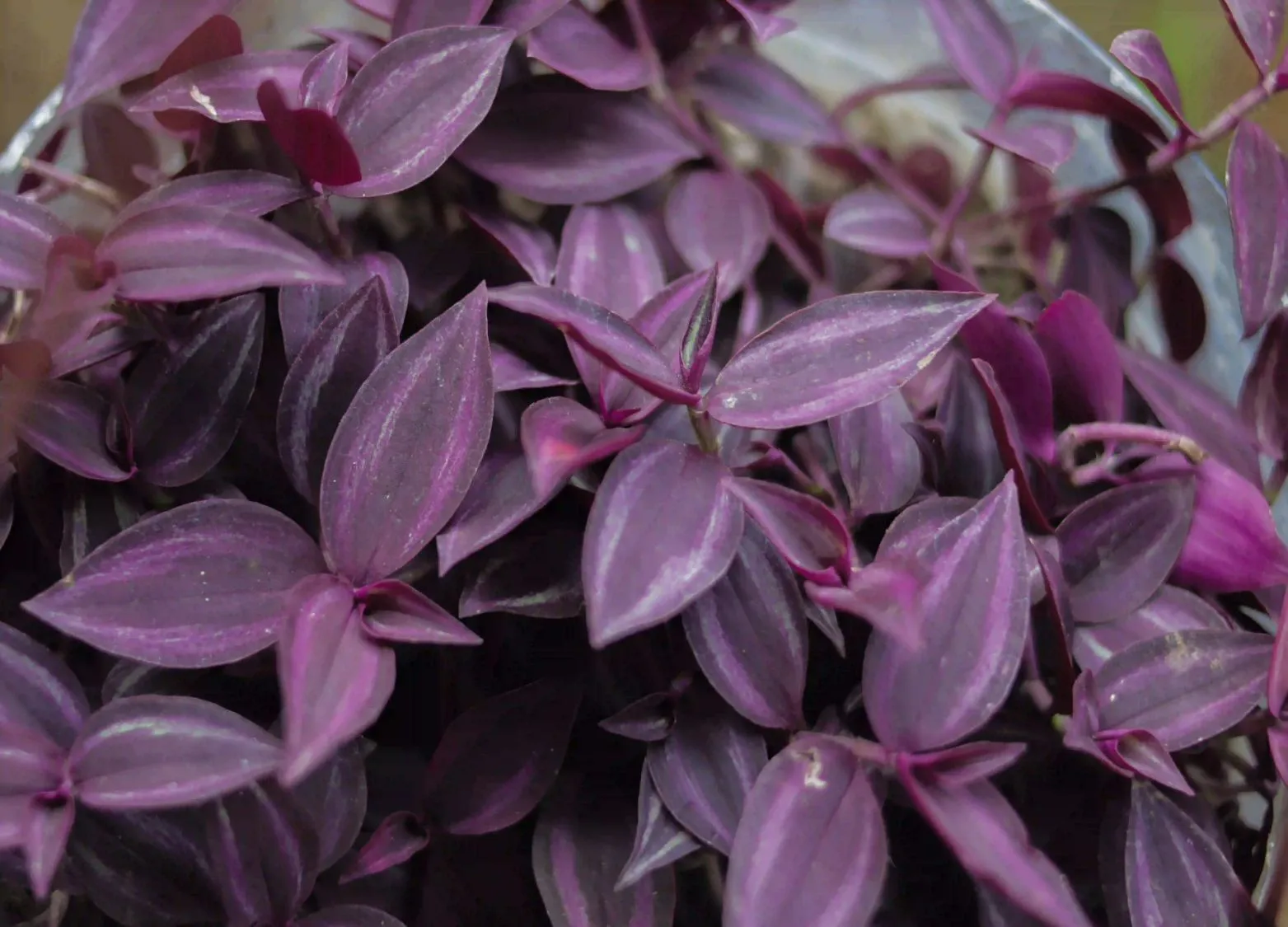
Planting and Propagating the Wandering Jew
Year-Round Propagation of Tradescantia Plants: Soil and Water Methods Propagating Wandering Jew through Soil
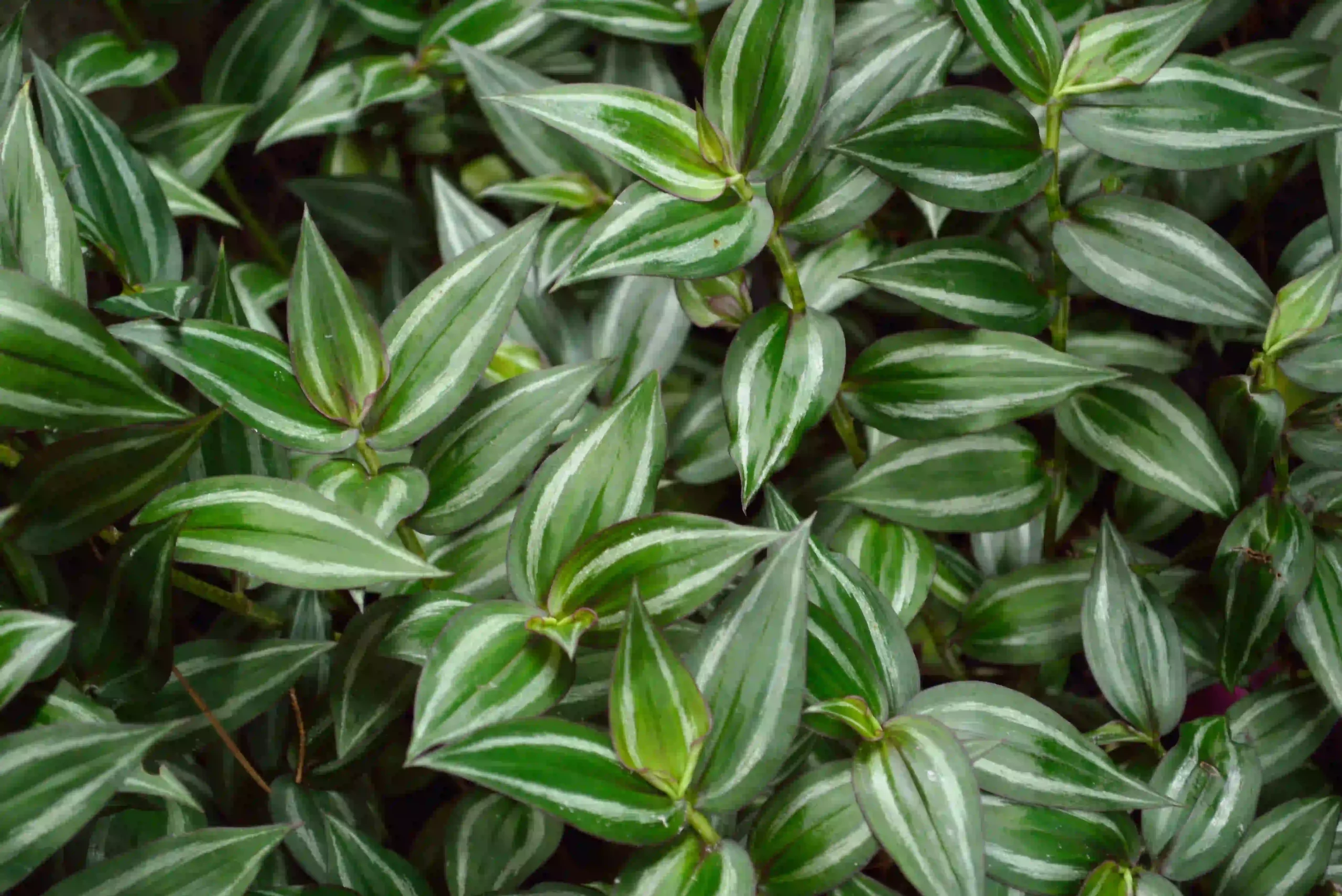
Propagating Wandering Jew through Soil
To propagate Wandering Jew in soil, take 4-6 inch cuttings, remove lower leaves, and plant them in a 6-inch pot filled with all-purpose soil. Keep the soil consistently moist, place in indirect light, and enjoy a vibrant new plant in a few months.
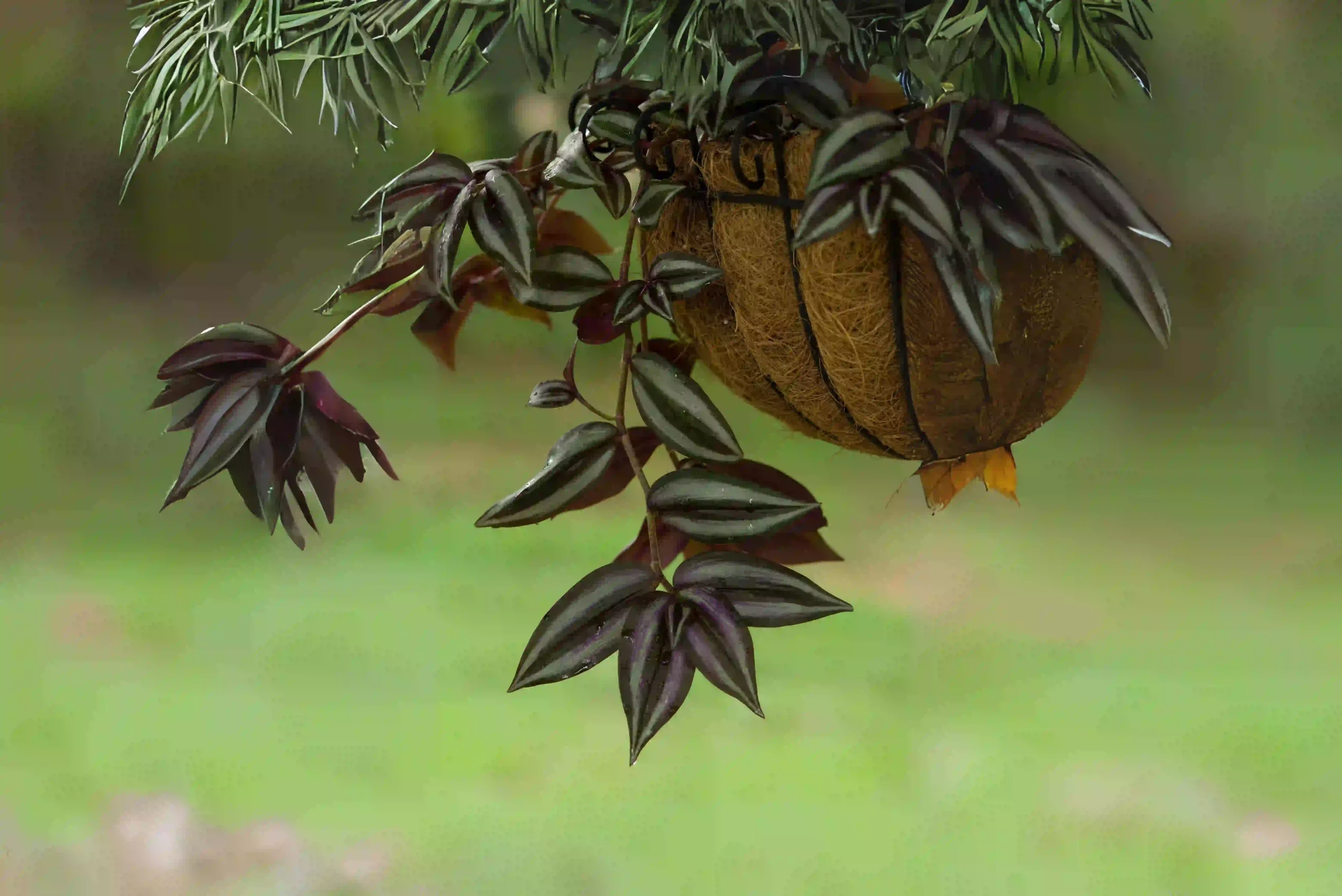
Propagating Wandering Jew through Water
To propagate Wandering Jew in water, make 4-6 inch cuttings beneath a leaf node, remove lower leaves, and submerge them in a glass or jar. After about a week, transfer the rooted cuttings to all-purpose potting mix, continuing standard care as the new roots develop.
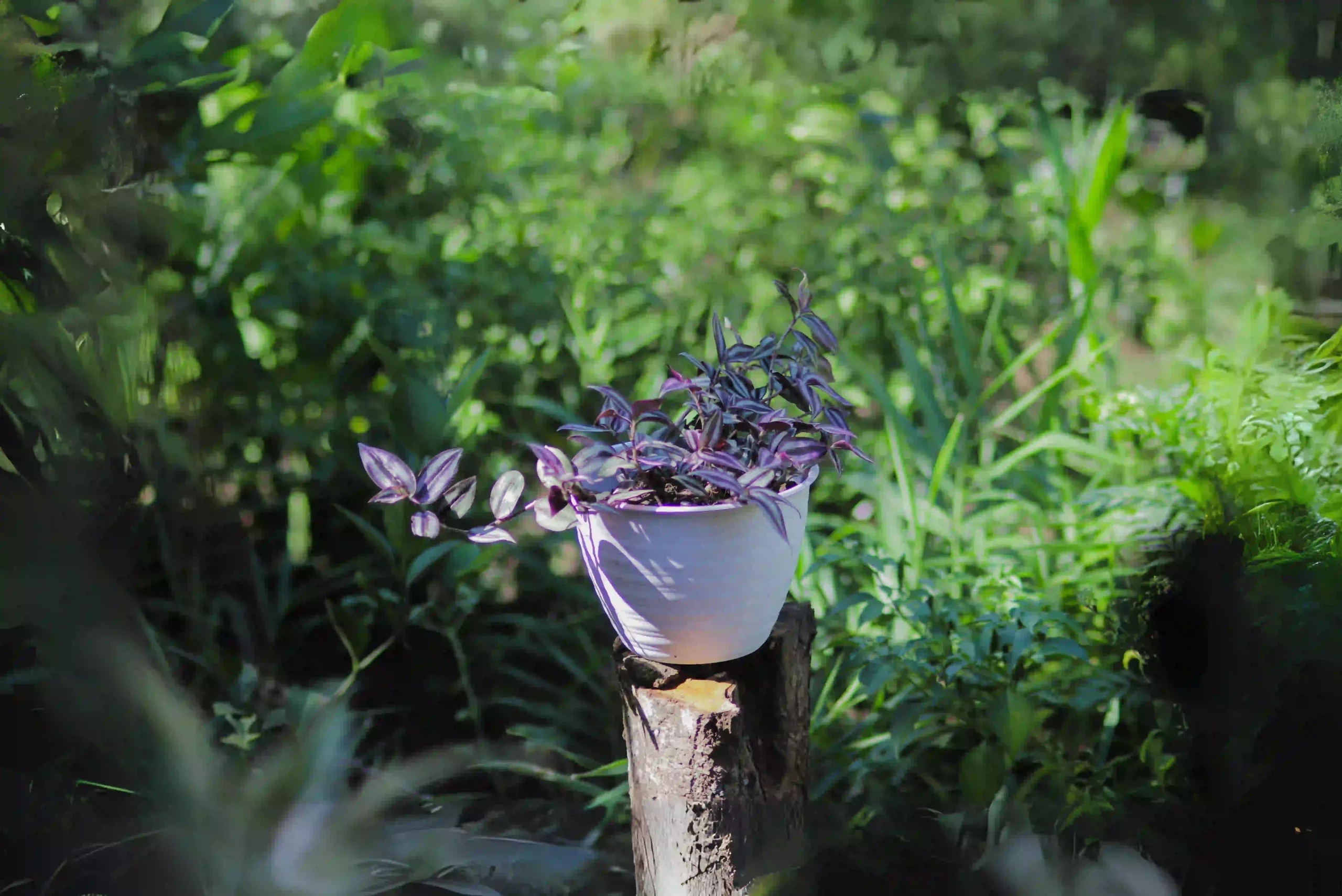
Repotting Wandering Jew Plant
Repot your Wandering Jew every two or three seasons in a slightly wider pot for healthier growth. Use porous containers, add fresh soil, and handle stems with care during the transfer, saving any fallen ones for replanting.
Let See the Review
Testimonials.

Designation
Lorem ipsum dolor sit amet, consectetur adipiscing elit, sed do eiusmod tempor incididunt ut labore et dolore magna aliqua.

Frequently Asked Question
Likely, your cuttings are grappling with a fungal infection. To thwart this, ensure the use of a sterilized cutting tool. Dip it in bleach, then rooting hormone, before placing the cuttings in the soil.
Keep your plant in its current location and observe the leaf colors. If they fade, it's a clear indicator that the plant requires more light. Move it closer to the window and monitor the leaves until the color returns on new growth.
Many gardeners successfully root wandering jew cuttings directly in water. Ensure periodic sterilization and water changes to keep it fresh and pathogen-free. Once roots appear, transfer the cuttings to potting mix.
In brief, no, but it can cause irritation if ingested and may produce a dermatitis-like effect on their skin.
Absolutely! It might be challenging outside USDA zones 9-11, but within that range, outdoor growth is straightforward.
While somewhat hardy, sustained cold can damage above-ground parts. It may regrow in spring, but the likelihood is slim.
Yes, several Tradescantia species spread rapidly, potentially outcompeting native vegetation. Consider this before planting in the ground, as some may be classified as invasive. Container planting is a great alternative.
Pinching is a pruning technique applied to young plants and new growth stem tips. For Tradescantias, pinching encourages bushier growth.
latest Blog & Articles
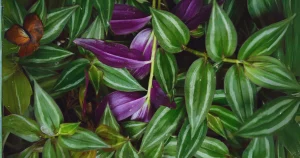
How to Take care of a wandering plants indoor
Introduction The Wandering Jew plant scientifically known as Tradescantia zebrina is one of the most beautiful house plants...
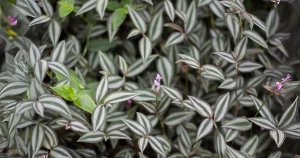
How to Take Care of Your Wandering Jew Plant
Introduction Regardless of whether you are an expert gardener or just a beginner, taking care of this Striped...
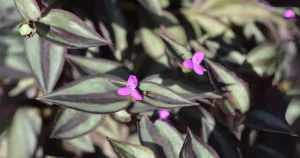
Reviving Your Wandering Jew Plant: Troubleshooting Tips for a Dying Base
Introduction Do you feel like you can't maintain the Wandering Jew plant in its best conditions? Have you...
Grow. Play. Every Day!

- House & Home
- Houseplants
Wandering Jew Care: How to Grow a Long and Luscious Inch Plant (Tradescantia Zebrina)
Tradescantia zebrina (commonly known as wandering Jew, spiderwort, or inch plant) is popular for a reason: This beginner-friendly houseplant is low-maintenance and grows quickly. It’s also super easy to propagate more plants so you can fill your home with more of the colorful striped foliage the species is known for.
Written by Linda Ly

When it comes to vigorous, colorful, and easy-to-grow hanging houseplants, there aren’t many that can compare to Tradescantia zebrina (known more commonly as wandering Jew—and I’ll touch on the history of that name below). Whether you’re a houseplant beginner or a veteran, most indoor gardeners have owned one of these potted plants at some point.
Keep reading for everything you need to know about Tradescantia zebrina and growing this stunning houseplant in your own home.
Disclosure: If you shop from my article or make a purchase through one of my links, I may receive commissions on some of the products I recommend.

About inch plants
Natural habitat.
Tradescantia zebrina is a native of Central and South America, from Mexico down to Colombia, as well as the Caribbean. Here, it forms part of the undergrowth in lightly forested and often very moist areas. It can form very dense, wide mats thanks to its creeping growth pattern and ability to throw roots extremely quickly.
Unfortunately, its vigorous growth has also made Tradescantia zebrina an invasive plant in some regions. This includes Hawaii, Brazil, and Australia, where the species easily takes hold in moist, forested areas.
As a 2019 study carried out in the Brazilian Atlantic Rainforest notes, this is problematic due to the species choking out native plants.
Some of the above was caused by careless gardeners allowing bits of the plant to get into the wild, where they quickly root. If you’d like to grow spiderworts like this one in your garden, please make sure to dispose properly of any trimmings left after pruning!
This also applies to zebrina’s popular cousins, like Tradescantia fluminensis, T. pallida, and T. spathacea.
Description
It’s not difficult to see why Tradescantia zebrina gained popularity as a houseplant. Wandering spiderwort plants (not to be confused with spider plants , another beginner-friendly species) are low-maintenance and grow just about anywhere—they even just grow in water !
Easy care and quick growth aside, spiderworts are also just good-looking plants. The pointed, oval leaves on thin, fleshy stems overlap slightly and are characterized by their zebra pattern in purple and silvery green. The leaf undersides are deep purple in color and the tiny, three-petaled flowers are bright pink.
Although this species is naturally a creeping plant, it’s often grown indoors in hanging planters. As long as the plant is provided with enough light, the foliage will be very dense and brightly colored, forming a spectacular waterfall that can reach more than 3 feet in length.
What’s in a name? In the case of common houseplants, sometimes a lot.
Tradescantia zebrina is a classic houseplant (I found mention of it in a 1964 German book about houseplants, but it’s probably been around longer than that!) and among most English speakers, it has long been known as wandering Jew. This is probably a reference to the “wandering” nature of the plant, as it does have a creeping growth pattern.
The legend of the wandering Jew is hundreds of years old and is now commonly considered to be rooted in antisemitism. It describes a Jewish man cursed to walk the planet until the Second Coming because he taunted Jesus on his way to the cross.
Because of this, the plant name has partly fallen out of fashion and has been the source of much debate in the plant world over the past few years.
Some plant enthusiasts have embraced the alternative “wandering dude,” which I personally think is a great option.
“Inch plant” (houseplant enthusiasts don’t agree on whether this refers to the fact that it can grow an inch a day, or that you only need an inch of stem to propagate it), “spiderwort,” or “wandering spiderwort” are also popular alternatives, though these are common names for other Tradescantia varieties, such as Tradescantia Nanouk.
The best way to avoid any confusion is to just stick to the scientific name.

Inch plant varieties
There are three subspecies of inch plant (wandering Jew): Tradescantia zebrina var. zebrina, var. flocculosa, and var. mollipila. Unsurprisingly, after it having been a popular houseplant for so many years, nurseries have also managed to create a whole bunch of cultivars through selective cultivation.
A few of the popular Tradescantia zebrina cultivars you may come across in your local plant store include, but are certainly not limited to:
- Tradescantia zebrina ‘Quadricolor’: Yep, as the name suggests, this one adds an extra color to the mix. The leaves are cream, pink-purple, light green, and dark green.
- Tradescantia zebrina ‘Burgundy’: Characterized by its very dark purple coloration.
- Tradescantia zebrina ‘Silver Plus’: Less purple, more shiny silver.
- Tradescantia zebrina ‘Red Gem’: Less silver, more intense (light) purple.
- Tradescantia zebrina ‘Purple Joy’: Less silver, more dark purple.
- Tradescantia zebrina ‘Tikal’: A rare, naturally occurring variety that collectors pay a pretty penny for.
Do keep in mind that most of these cultivars aren’t patented and the amount of mislabeling and variation within a cultivar are both huge. Just growing your wandering Jew in lower-light conditions can completely change the way it looks, so it’s not surprising that confusion sometimes reigns supreme.
Luckily, care is the same across all cultivars, so your best bet is to just enjoy your plant even if you’re not sure what Tradescantia variety you’re dealing with!
Where to buy wandering Jew plants:
- California Tropicals
- Daylily Nursery
- The Green Escape

Caring for an inch plant
Light and temperature.
It’s important to provide your Tradescantia zebrina with enough light. It’s tempting to use plants to brighten up dark, shaded spots in your home, but that just doesn’t work with this one: It loses its dense growth pattern and beautiful coloration in low light.
To prevent your wandering dude plant from growing sparse and green, place it near a window that gets bright indirect light. Some full sun isn’t a problem either, but do make sure you acclimate it gradually to a higher light location.
Temperature-wise, this species is a lot hardier than many of the tender tropicals we like to grow in our homes (like Anthurium andraeanum and Begonia maculata ).
Wandering dude plants can handle a very wide range of temps, making it perfect for those chillier windowsills that your other plants may not appreciate. Room temperature is ideal, but anything between 50°F to 85°F will keep them happy.
Water and humidity
Your Tradescantia zebrina will appreciate lightly moist soil. You can water a bit more during the summer months, when the plant is actively growing and needs a lot of moisture, and less during winter, when soil tends to take significantly longer to dry.
If you’re not sure whether it’s time to water your wandering Jew plant yet, you can always turn to the age-old trick of sticking a finger in the soil.
- If it still feels damp, wait a little longer, until the first inch or two has dried.
- If it feels bone dry, you’ve waited too long; you may also see limp leaves on your plant at this point. It’ll bounce back, but not always without lasting damage.
- If the soil feels wet, you watered too much and need to keep an eye out for root rot.
As for humidity, given its rather wet natural habitat, wandering Jew does appreciate higher air moisture levels. The great thing is, though, that it doesn’t demand it. As long as you keep its soil lightly moist and the air isn’t extremely dry, your plant should do well.
Soil and planting
Wandering Jew is not fussy about its potting mixture at all. I’ve grown it in pure houseplant potting soil with no additives. If you do want to take things to the next level, you can add some perlite and/or peat moss, although this is really not a must.
Most houseplant enthusiasts like to place their wandering Jew in a hanging planter so they can enjoy the look of the leaves cascading down. This is not a must, though. You can also emphasize the species’ creeping growth habit by filling up a large, shallow planter, growing it in a terrarium, or even keeping it in water on a semi-permanent basis.
Recommended products for wandering Jew plant care:
- FoxFarm Ocean Forest Potting Soil
- Espoma Organic Potting Mix
- Perfect Plants Organic Perlite
Fertilizing
Like most other houseplants, Tradescantia zebrina appreciates a bit of fertilizer during the growing season, which extends from spring to early fall. You can use a normal houseplant fertilizer according to the instructions on the bottle.
Don’t fertilize during the winter months unless your plant is growing well. It doesn’t need extra nutrients if it’s inactive.
Recommended fertilizers for wandering Jew plants:
- Houseplant Resource Center Liquid Fertilizer for Houseplants
- Instant Biologics Instant Plant Food (Fizzing Nutrient Tablets)
- Maxsea All-Purpose Seaweed Plant Food
Pruning
There’s a good chance you’ll have to prune your Tradescantia zebrina regularly, because as I mentioned, this is a very quick grower. It also roots very easily, so any trimmings can be replanted! I’ll describe how to do this in the section on propagation below.
Aside from stem trimming, you can remove any dead leaves, which are bound to pop up from time to time in very dense plants like this species.
Dividing or repotting
Inch plants don’t grow by producing plantlets at their base like many other houseplants (such as spider plants ) do. Instead, inch plants spread by rooting along the stems.
This means that division is not really the way to go; keeping these plants manageable is usually done through pruning. You can shape your plant by pinching off any long, leggy stems to create a fuller appearance and control its spread.
You’ll notice that Tradescantia really doesn’t mind being a bit cramped in its planter. Still, it’s a good idea to provide your plant with some fresh soil every year or two by repotting it.

Propagating an inch plant
If you’ve never propagated a houseplant before, this is truly one of the best species to start with. It’s known for rooting extremely quickly in both water and soil, meaning it’s easy to fill endless planters to keep or give away.
All you need to propagate your Tradescantia zebrina is a pair of clean scissors. Here’s how you do it:
- Snip the ends off existing branches. An inch or two with a few leaves works best.
- Remove the leaves at the bottom so part of the stem is exposed.
- Place the cutting in a glass of water to root or plant it directly in soil. You can put cuttings back in the mother plant’s pot to give her a fuller appearance on top.
- It can take a little longer during the winter months, but the first roots should appear within a week or so. You can give soil cuttings a slight tug to verify they’ve rooted.
- Once the first signs of new foliage appear, you’ll know your propagation attempt has been a success!
- If you propagated in water, you can leave the rooted cuttings in water almost indefinitely, although you can also pot them up in fresh soil.

Common questions about inch plant care
How do i make a wandering jew plant bushy.
By their very nature, wandering Jew plants are not bushy. Their creeping growth habit means they naturally grow leggy over time, especially in containers.
However, you can mimic a fuller appearance by strategically pinching off any long, spindly stems to shape the plant more. These stems can also be replanted near the mother plant.
As the baby plants grow, they’ll help fill in sparse areas and create the illusion of a bushy wandering Jew.
How long do wandering Jew plants live?
Wandering Jew plants have a limited lifespan of just a few years, and as a potted plant, you’ll notice your wandering Jew becoming very leggy after just two to three years.
Unlike other fast-growing plants that benefit from pruning, cutting back a wandering Jew doesn’t work well to renew its growth; it simply controls the spread.
The best way to keep your plant coming back year after year is to propagate new plants from stem cuttings, which—fortunately—is super easy with a high success rate.
Is wandering Jew perennial?
Wandering Jew (Tradescantia zebrina) is a trailing evergreen perennial in its native habitat (USDA hardiness zones 9 through 12). Where it’s not winter hardy, wandering Jew is grown year-round as a houseplant.
Are wandering Jew plants toxic to cats and dogs?
Wandering Jew is not considered outright toxic, but it can cause some skin irritation. If your pet gets into your plant, don’t worry too much, although it can be a good idea to have a look in its mouth to make sure there’s no excessive swelling. Be sure to offer water. To prevent skin rash, it can be a good idea to wear gloves if you need to handle your wandering Jew plant. This especially applies if you have sensitive skin.
https://www.cabi.org/isc/datasheet/110354
Racism in Taxonomy: What’s in a Name?
Chiba de Castro, W. A., Xavier, R. O., Garrido, F. H., Romero, J. H., Peres, C. K., & da Luz, R. C. (2019). Fraying around the edges: negative effects of the invasive Tradescantia zebrina Hort. ex Bosse (Commelinaceae) on tree regeneration in the Atlantic Forest under different competitive and environmental conditions. Journal of Plant Ecology, 12(4), 713-721.
Encke, F. (1964). Pflanzen fur Zimmer und Balkon; Auswahl, Pflege, Vermehrung.
I'm a plant lover, passionate road-tripper, and cookbook author whose expert advice and bestselling books have been featured in Time, Outside, HGTV, and Food & Wine. The National Parks Cookbook is my latest book. Garden Betty is where I write about modern homesteading, farm-to-table cooking, and outdoor adventuring—all that encompass a life well-lived outdoors. After all, the secret to a good life is... Read more »
We bought a full grown Bolivian Jewel mid summer last year. It was in a 14” raised pot and flowing 2 foot over the sides. It was beautiful next to our fountain outside. We live in Minnesota so we had to discard it in the late fall since we had no place to care for it in the house. Since we can’t find another like it we’d like to plant one from scratch but how. We still have the pot and riser but have no idea how to start from that. One plant, a few or just how many to make a bushy over grown plant so it looks like the one we purchased last year. Does this make sense or should we just forget it since it is already the middle of May. The greenhouse that we bought it from last summer doesn’t have any this year, just small ones in 4” pots. Thanks
If you can only grow it as an annual (and won’t be overwintering it indoors), you can plant a few smaller ones together to make them look fuller as they grow.
It seems counterproductive to talk about the problematic origin of the name wandering Jew, recommend multiple alternative names (including scientific), but then continue to call it wandering Jew in the rest of the article. If the name is anti-Semitic just set a good example and use a different name.
Leave a Reply Cancel reply
Your email address will not be published. All fields are required.
Save my name and email in this browser for the next time I comment.
This site uses Akismet to reduce spam. Learn how your comment data is processed .
Recommended Reads
- Garden of eatin’

The No-Dig Garden Method: Make Amazing Soil With Less Work

Solarizing Your Garden: How to Use the Sun to Control Weeds and Pests in the Soil

How to Plant a Three Sisters Garden: The Original Companion Plants

How Much to Plant for a Year’s Worth of Food

What You Should Know Before Buying Land (My Real-Life Tips)

Construction Loans: What I Wish I’d Known As a First-Time Borrower

Dark Room? 9 Actually Low-Light Plants That Don’t Need a Lot of Sun


Getting Rid of Fungus Gnats: 11 Remedies That Really Work

My Favorite Ruby Red Sauerkraut Recipe (and Why It’s So Good For You)

How to Make Nukadoko (Fermented Rice Bran Bed) for Pickling

Easy 4-Ingredient Colorful Homemade Pasta—No Pasta Maker Needed

The Best Homemade Limoncello
Sign up for my free weekly newsletter.
And get game-changing emails full of tips and resources that’ll level up your garden this year.
- About Linda Ly
- What’s In My Garden
- Lazy Gardening Academy
- Sponsorships
- Site Policies

Back to the top
Disclosure: Garden Betty independently selects products to feature on this site. I may receive a commission when you buy something through one of my links. As an Amazon Associate, I earn from qualifying purchases.
© 2024 Garden Betty. All Rights Reserved.

- Privacy Policy

- Houseplants
- Gardening And Landscaping
Wandering Jew Plant (Tradescantia or Spiderwort): Care, Types, Images and More
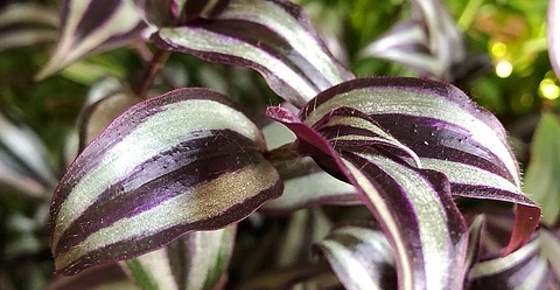
The wandering Jew plant is a common name for different species of plants that belong to the Tradescantia genus. There are around 75 different types of plants in Tradescantia genus and some are called inch plants, spiderwort, striped wandering Jew, Boat Lily, Purple Queen, or flowering inch plant. Wandering Jew plants are great house plants because they are relatively easy to care for. They are also easy to grow because the wandering Jew plant propagates easily from cuttings.
Some types of wandering Jew plants have green and gold leaves, some have reddish leaves, and others have green fuzzy leaves. There are also types of wandering Jew plants that flower. Depending on the species, the wandering Jew plant could have purple, white, or pink flowers.
How to care for wandering Jew plant : For the Tradescantia or spiderwort plant to thrive, grow in a plenty of indirect light and plant in fertile, moist potting soil with good drainage. Make sure the soil isn’t too dry or too damp and keep medium humidity levels. The ideal temperature range is between 65°F (18°C) and 75°F (23°C). You can fertilize every four weeks during the growing season with a diluted liquid houseplant fertilizer.
In this article, you will find all you need to know about this delightful houseplant. You will also get tips and ideas on how to care for your wandering Jew plants.
Wandering Jew Plant (Tradescantia or Spiderwort) – Overview of the Plant and Its Flowers
The botanical name for wandering Jew plant is Tradescantia zebrina and is also called the inch plant. However, the name wandering Jew is given to many herbaceous perennial plants in the Tradescantia genus. ( 1 )
Species of Tradescantias naturally grow outdoors in countries in Asia, Africa, Central and South America, and Australia. Varieties of wandering Jew plants also thrive well indoors, where, like their garden varieties, they grow well when it is warm, sunny, and moderately humid.
According to the United States Department of Agriculture, various varieties of Tradescantias are regarded as invasive plants in the wild. However, it is the fast-growing nature of spiderworts, wandering Jews, and inch plants that makes them perfect houseplants. ( 2 )
Many people like to grow wandering Jews or spiderworts in hanging baskets or grow them in pots to decorate a garden.
What does a wandering Jew look like?
Plants from the Tradescantia varieties have leaves that seem to grow in all directions (hence the term “wandering Jew”).
One of the distinct features about foliage on wandering Jews is that many of them have striped leaves. Sometimes, the leaves can be purple and silver stripes, whereas other types of Tradescantias have leaves that are almost all silver. ( 3 )
You may also notice that some varieties of wandering Jew plant have different colors on the underneath of the leaf. For example, the Tradescantia zebrina has green/silver leaves on the upper side and deep red or burgundy colors on the underside.
Wandering Jew flower
Wandering Jew houseplants also produce attractive flowers. These flowers can sometimes be white or can range in color from pink to various shades of lilac and purple. ( 3 )
However, plant lovers don’t usually grow wandering Jews indoors or outdoors for their blooms. It’s the beautiful variation of leaf colors that makes various types of Tradescantias so desirable houseplants.
Types of Wandering Jew (Spiderwort) Plants
The most popular types of Tradescantia plants to keep indoors are Tradescantia fluminensis ( spiderwort ), Tradescantia pallida ( purple heart ), and Tradescantia zebrina ( wandering Jew ).
Wandering Jew or inch plant ( Tradescantia zebrina )
This type of wandering Jew houseplant has purple and green leaves with a stripe pattern that resembles zebra’s stripes. There are types of wandering Jews that have bluish green leaves and purple hues on the underside.
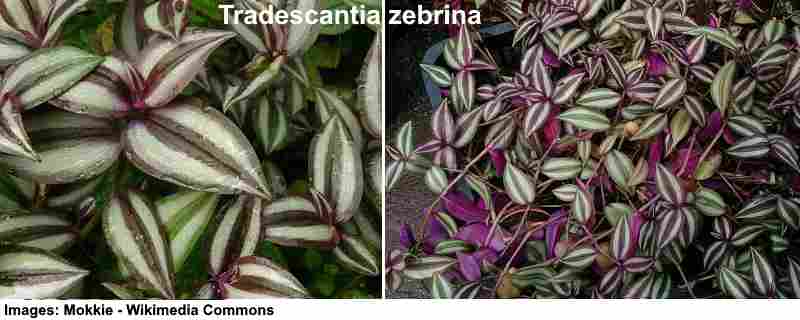
Tradescantia fluminensis (spiderwort)
There are a number of types of Tradescantia that are called spiderwort. This is distinguished from some Tradescantias as it has ovel shiny dark green leaves with pointed tips which are slightly fleshy .
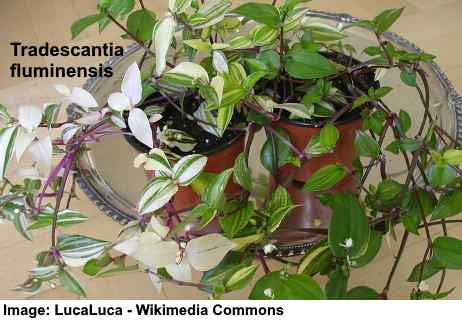
Picture of wandering Jew plant with white flowers
Tradescantia pallida (purple heart)
This type of spiderwort plant is also commonly referred to as wandering Jew. The T. pallida houseplants have vibrant purple leaves and light pink flowers when they bloom.
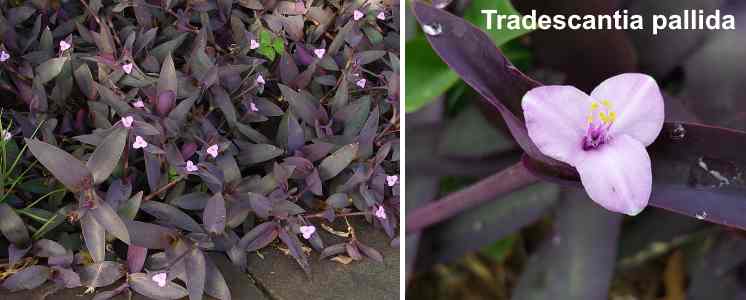
Wandering jew plant with deep purple leaves and light purplish-pink flowers
Tradescantia callisia
The leaves of T. callisia varieties are sometimes referred to as creeping inch plants. They have remarkably stripy leaves made up of green and white stripes.
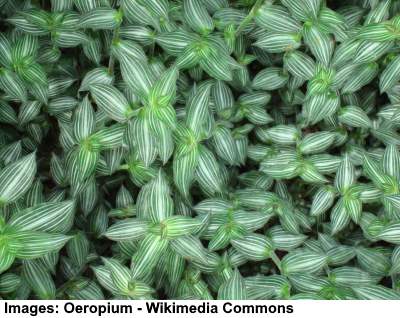
Picture of green wandering jew
Wandering Jew Plant Care (How to Grow Spiderwort or Tradescantia)
Caring for wandering Jew plants is fairly simple and straightforward. All plants in the Tradescantia genus enjoy moist soil, sunny but indirect sunlight, and warm conditions.
So, it doesn’t matter if you have fuzzy leaf Tradescantias, purple queen varieties, spiderworts, or wandering Jews, they all require the same type of care.
Light requirements for Tradescantias
To make sure that wandering Jew plants grow successfully, they require a good amount of light. This ensures that they grow with healthy leaves that have a vibrant green, silver, purple, or lilac colors.
The best place to place wandering Jew plant or spiderworts is in an east- or west-facing location. This means that they get plenty of natural light without being in direct sunlight when the sun is at its strongest.
The only exception is if you have Tradescantia pallida plants with dark purples leaves. They usually thrive in direct sunlight, although you should regularly check them in the summertime to make sure the sun isn’t too strong.
One sign that your Tradescantia isn’t getting enough light is if the color of their leaves starts to fade.
Best growing temperature for Spiderwort or Tradescantia
One of the reasons why wandering Jew plants are good for the home is that they thrive in room temperature.
The best temperatures for growing any type of Tradescantia plant is between 65°F (18°C) and 75°F (23°C). The houseplants also thrive in conditions that are described as “average humidity.”
If you grow Tradescantias outdoors, you should be aware of a drop in night temperatures and lower temperatures during winter. You should bring Tradescantias indoors if the temperature drops.
Best watering techniques for wandering Jew plant care
To care for your inch plant, spiderwort, or wandering Jew, you should keep the soil moist.
The best way to water a wandering Jew is to water the soil thoroughly and let the water drain out the bottom. Another way to water your purple house plant is to put water in the plant pot tray and allow the plant to soak up as much as it needs.
Some beginners who start caring for houseplants such as Tradescantias for the first time buy a soil moisture gauge to help get the soil moisture levels just right.
When it comes to proper watering for your wandering Jew, always make sure the soil isn’t too dry or too damp. Usually, weekly watering in the summertime is enough to keep your Tradescantia growing well.
The best fertilizer for wandering Jew houseplants
The reason why Tradescantias are so easy to care for is that they don’t usually require any feeding.
If you decide to encourage your inch plant or spiderwort to grow faster, then choose a liquid organic fertilizer mixed at half strength and use once a month.
Most houseplant growers don’t feed their wandering Jew plants in the fall or winter as they tend to become “leggy” or “straggly.”
Which type of soil to use for Tradescantias
To properly care for wandering Jew varieties of houseplants, you only need to plant them in regular potting soil.
How to prune wandering Jew plants
In time, Tradescantia plants require some cutting back and pruning. This helps to give your houseplant a bushier appearance and also gives you plenty of cuttings to propagate.
For Tradescantia pruning, you just need to pinch off the stem tips to leave about ¾ of the length. This will encourage your plant to grow better and become more attractive.
Growing Plants from Wandering Jew Cuttings
Even for the most novice of houseplant owners, propagating any type of Tradescantia plant is very easy. After you have cut back your “leggy” wandering Jew stems, you will have a large number of cuttings that you can use to grow new house plants.
How to propagate wandering Jew plant leaves
To prepare your wandering Jew cuttings or purple heart plant cuttings for propagation, you need a couple of stems about 1-2 inches long. Remove all the leaves apart from 2 or 3 at the end of the stem.
There are 2 ways you can grow wandering Jew plants from cutting:
- The first way is to just put a cutting in potting soil and wait for it to grow. All you have to do is make sure that the soil is kept moist and not overly damp.
- The other way to grow a Tradescantia from a cutting is to put the stem in water. You should notice that new roots start to grow within a week. When you notice new roots growing, you can transfer your cuttings to a pot to grow a new houseplant.
Wandering Jew Outdoor Plant Care
Tradescantia plants are great garden plants and grow well outdoors in warmer zones in the U.S. (USDA growing zones 9-11). In fact, it is because they grow so well outside in warmer countries and are quite invasive that they are classed as a weed in certain countries.
You can easily care for any Tradescantia plants to add color and beauty to your garden. Purple hanging plants or wandering Jew vines with stripy leaves can grace any patio, doorway, or garden area.
As with caring for wandering Jews or spiderworts indoors, Tradescantia plants growing outdoor should be protected from direct sunlight. So, place your plants in shady areas of the garden. But it’s good to remember that some bright light will help the wandering Jew plant produce more flowers.
Temperature
Also, frost can damage the plant, so, if you live in areas where fall and winter temperatures drop below 10°F (12°C), you should take them indoor and continue to grow them as houseplants.
Problems with Wandering Jew Plant (Spiderwort)
Even though it is relatively easy to care for wandering Jew plants, you can still come across certain problems.
Let’s look at some growing tips for Tradescantia plants to avoid or remedy some common problems.
The most common pest when growing wandering Jews indoors are bugs such as spider mites or aphids . The appearance of these pests on your bushy spiderwort or inch plant may be a sign that conditions are too dry.
To help remedy the problems of pests on your Tradescantia, mist the leaves regularly and make sure the soil is moist enough. You may need to wash off the mites with water to help get rid of the infestation.
One of the beauties about caring for wandering Jew plants indoors or outdoors is that they are not susceptible to disease. Usually, any discoloration of the leaves or poor growth is connected to the soil being too dry or too damp.
Fungal infections
Overwatering spiderworts, inch plants, or wandering Jews can cause a fungal growth called botrytis to develop in the roots.
Brown leaves
As with most problems associated with caring for Tradescantias, brown leaves can also indicate that the growing environment isn’t right. The leaves of your wandering Jew could have turned brown because of too much or too little sunlight. Also, too much watering can affect leaf health.
Where to Buy Wandering Jew Plants
Many garden centers and online stores stock many different varieties of wandering Jews. You will also find that Tradescantia cuttings are available online.
Because many different types of wandering Jews are so easy to grow yourself, you could ask a friend for a cutting if they have the plant. You can also get more Tradescantia houseplant or garden plants by propagating cuttings from plants you already have.
FAQ Related to Wandering Jew Plant (Tradescantia)
Do they need any pruning.
To properly care for wandering Jews, the leaves and stems require pruning. The stems can grow quite long and start losing their leaves from the base. The best time to prune any Tradescantia plant is just before the growing season in late winter or early spring.
You may also find that Tradescantias grow better if you give them a mild prune in late summer.
How to prevent wandering Jew roots from rotting?
Go easy on the watering to stop Tradescantia plants’ roots from rotting. Water them enough to keep the soil moist during summertime and only occasionally in the winter.
Are wandering Jew plant leaves toxic to animals?
While not toxic to cats or dogs, the leaves of wandering Jew plants can cause irritation. If you have pets that like to nibble on leaves, you can still benefit from the beauty of Tradescantias if you grow the outdoor plant in hanging baskets.
Can I grow my Tradescantia plant outdoors?
Yes, you certainly can. Wandering Jew plants grow well out of doors in warm climates. During the summertime, you can move your indoor houseplants to the garden and place them away from direct sunlight.
Dashes of purple colors, bright pinks, or interesting green and purple stripped leaves can make an interesting feature in any garden or balcony.
Can you train a wandering Jew plant?
Tradescantia plants are easy to train because their stems can grow very long and you can wrap them around objects. Wandering Jew plant stems can grow up on trellises or obelisks or up around any other item.
Heavily pruning wandering Jews in late winter can also help to train the plant to grow into a colorful bush.
How fast does wandering Jew plant grow?
Tradescantia cuttings should start growing roots within a week or so. Once the plant is established, you can expect it to grow about an inch every week. Some people claim this is the reason that some Tradescantias are called inch plants.
Can Tradescantia houseplants cause allergies?
The sap of wandering Jew plants or prolonged skin exposure to its leaves could cause allergic reactions.
The journal Allergy reports that indoor plants such as Tradescantia can also cause symptoms such as itching of the throat, swelling, wheezing, and runny eyes and nose. ( 4 )
Do wandering Jew varieties have any health benefits?
Although not widely used, extracts from Tradescantia zebrina have certain medicinal properties. You can buy inch plant herbal liquid extracts that are said to have many antioxidant properties.
Researchers have found that therapeutic compounds in Tradescantia extracts have antibacterial, anticancer, and antioxidant uses. ( 5 )
Related articles:
- Moses In Cradle Care: How to Grow Tradescantia spathacea
- Chinese Money Plant Care: How to Grow Pilea Peperomioides
- Dracaena Marginata Plant Care: How to Grow Madagascar Dragon Tree

Wandering Jew Plant
Table of Contents
A Wandering Jew plant, Tradescantia , is a fast growing, easy to care for plant that looks beautiful hanging in front of a window that gets bright, indirect light but no direct sun. Popular nicknames are “Inch Plant” or Spiderwort. Originally found growing as a 1-2ft tall wildflower in Canada and all the way south to Argentina, today a wandering jew plant is both a popular indoor and outdoor plant throughout the world.
Description
The wandering jew plant group is made up of several different varieties. Most have long vines of 2″-4″ oval or heart shaped leaves. Leaf color depends upon the exact type and can be solid green, green with a purple stripe, green with a white or yellow stripe, green with splashes of pink, purple, and cream, or solid purple. The back of the leaf may also be purple. Some wandering jew plants have hairy leaves and some with a silver shine to them. The wandering jew plant produces small flowers in white, pink, purple, or magenta.
Wandering Jew Plant Varieties
The five varieties most commonly used as indoor plants are the Tradescantia zebrina, Tradescantia fluminensis, Tradescantia sillamontana, Tradesantia pallida, and the Tradescantia blossfeldiana.. All types of Wandering Jew plants are easily propagated using stem tip cuttings.
- The Zebrina variety of the Wandering Jew plant has long vines covered in small, stemless leaves about 2” in length. The colorful patterned leaves, green with purple stripes, have a silver shine. The underside of the leaf is a deep purple or magenta color. A Wandering Jew zebrina produces small pink to purple flowers.
- The basic Fluminensis Wandering Jew plant has long stems of small, shiny, oval, dark green leaves with fleshy stems and produces triangular, white flowers. The more popular variegated fluminensis has cream colored or yellow stripes on the leaves.
- The Sillamontana Wandering Jew plant has a different growth pattern and leaf than other members of the tradescantia family. This is not a vining plant. All the leaves, which are covered in white hair, come off a single, thick stem. Magenta flowers develop at the ends of the stems.
- The Palida Wandering Jew plant (Purple Heart Wandering Jew plant) has deep purple leaves with white, purple, or pink flowers.
- The Blossfeldiana Wandering Jew plant has vibrantly colored, fuzzy, green leaves with splashes of pink, purple, and cream and produces clusters of white flowers.

T. Zebrina T. Sitara Gold T. Palida T. Blossfeldiana
Quick Care Tips
Bright light essential for colorful leaves
Reduce water in winter
Repot in the spring if necessary
Avoid temperatures below 45°F ( 7.4°C)
Propagate using stem cuttings
Prune aggressively to keep plant bushy
Wandering Jew Problems
Brown leaf tips: air too dry or spider mites
Limp stems and yellow leaves: plant needs more water
Variegated varieties turn solid green: plant need more light
The sap of a wandering jew plant is slightly toxic to small children, cats, dogs, and other pets.
Read more about common houseplants that are poisonous in my book Don’t Feed Me to Your Cat: A Guide to Poisonous Houseplants.
How much light does a Wandering Jew plant need: Bright indirect light helps the plant produce colorful leaves and flowers. Direct sun causes the color in the leaves to fade.
How to water a Wandering Jew plant: Water well and then allow the top 2″ to 3″ of soil dry out before watering again. If the soil is very dry and the plant is sitting in bright light, the leaves become stunted and lose color. Lack of water can also cause brown and crispy leaves on a Wandering Jew plant. This usually problem affects to older growth first. Over watering is more serious, resulting in root rot.
Feed monthly when a Wandering Jew plant is producing new growth with a water-soluble houseplant food diluted to 1/2 the recommended strength. How to fertilize a Wandering Jew plant: Using a plant food high in nitrogen helps the plant produce more colorful leaves. Over-fertilizing causes the bright colors in the leaves to fade.
Temperature
Best temperature for a Wandering Jew plant: Try to maintain temperatures between 60°- 80°F (15.6°- 26.7°C).
Does a Wandering Jew plant need high humidity: Average to high household humidity is best. If the air is too dry, the leaves of a Wandering Jew plant turn brown. Place a Wandering Jew plant on a tray of wet pebbles to increase the humidity; be sure the plant is sitting on the pebbles and not in the water.
Does a Wandering Jew plant flower: In ideal growing conditions, the plant produces small white, pink, or purple flowers.
Wandering Jew plant pests: Although these plants are fairly pest resistant, aphids, scale, and mealy bugs can be a problem. See pictures of these plant pests and learn how to get rid of them in Glossary of the website.
Wandering Jew plant diseases: The high humidity that helps the plant grow better also encourages fungal and bacterial idiseases
Best soil to use for a Wandering Jew plant: Use a well- aerated soil that drains quickly. If the soil seems heavy and clay-like, add some peat moss and perlite.
What size pot for a Wandering Jew plant: This is a fast growing plant so check the root-ball frequently to see if a larger pot is needed. Repot, when necessary, in the spring. Use the next size pot, nothing larger, and be sure there are drip holes in the bottom.
How to prune a Wandering jew plant: When the stems get very long and leggy as the plant matures, don’t hesitate to aggressively prune the plant. When pruning, make the cut above a leaf node (the place where a leaf is attached to the stem). It may take a while for the trimmed stems to bush out , so be patient. You can use the stem clippings to propagate new plants.
Propagation
How to propagate a Wandering Jew plant: Very easy to do, take stem cuttings in the spring, summer,or fall. You can read more about how to propagate a plant using plant cuttings in the Glossary of the website.
Poisonous Plant Info
A Wandering Jew plant is slightly poisonous with a Level #1 toxicity. It is toxic to dogs, cats, and small children. The sap of the plant is caustic and may cause skin irritations or a rash. It is, however, considered safe to put into bird or reptile enclosures.
If a Wandering Jew plant gets a few hours of direct sun every day, the color in the leaves fades. I’d recommend moving your plant to a different area where it will get bright indirect light .
You probably waited a little too long before pruning your Wandering Jew plant so that’s why it’s still not doing well. Unlike most houseplants, Wandering Jew plants take a long time before starting to produce new leaves. Place your plant in bright indirect light and be patient. You can always use some of the Stem Cuttings to start some new plants.
You are killing your Wandering Jew plant with kindness. A Wandering Jew plant gets brown leaves and mushy stems when it is over-watered and over-fed. This plant needs water when the top few inches of soil are dry. Over- feeding is worse than no food at all. Fertilize monthly with a water soluble plant food diluted to 1/2 the recommended strength. Feed only when the plant is producing new leaves. For now, cut off all of the brown leaves and soggy stems and replace the soggy soil with new, fresh, well-aerated soil. Place your Wandering Jew plant in a warm bright area, water carefully, and do not fertilize for at least two months.

Wandering Jew (Tradescantia zebrina): Plant Care and Growing Guide – House Plants Expert

Table of Contents
The Wandering Jew plant is the common name given to a number of plants from the Tradescantia genus, including the scientific name Tradescantia Fluminensis, Tradescantia Pallida, and the most popular one – Tradescanita Zabrina.
The common name of “The Wandering Jew” is believed to come from a legend that the wandering jew ‘taunted Jesus’ en route to being crucified and was cursed to walk the Earth until the second coming. This can be viewed as antisemitic to some so be sensitive to that. We love our plants and certainly do not mean to offend when using their common name. Many have started now to use the common name wandering dudes or dude plant.
Some countries classify this species as an invasive plant or even a weed. This is because of its growth habit (it grows fast and prevents the growth of other plants). However, grown indoors it makes an attractive hanging basket or windowsill plant.
The purple wandering jew or purple heart is one of my favorite plants. The foliage is fleshy, has violet leaf colors, easy to care for, has simple propagation, and is just an overall nice houseplant to have in your collection.
Description
There are a number of tradescantia plants very similar in looks, how they’re grown and their growth habit, including the T. zebrina (which has dark green leaves with silver bands), the Tradescantia Fluminensis variegata with cream stripes, and quicksilver which has white stripes. Then there’s the T. Pallida from the same genus which is sometimes named Wandering Jew plant but looks very different from the Tradescantia Fluminensis and Zebrina.
Foliage
Fleshy oval or lance-shaped leaves are produced from the pendant stems (growing a couple of feet or so long). These small leaves have a shiny appearance and grow to about 2 – 4 inches long with pointed tips. The underside of a leaf is purple in color on the zebrina and new leaves appear purple at first, then turn green. In the wild or grown in gardens (grown as a bedding plant) stems take root at the nodes, but indoors in a hanging basket or container they grow and hang over the sides.
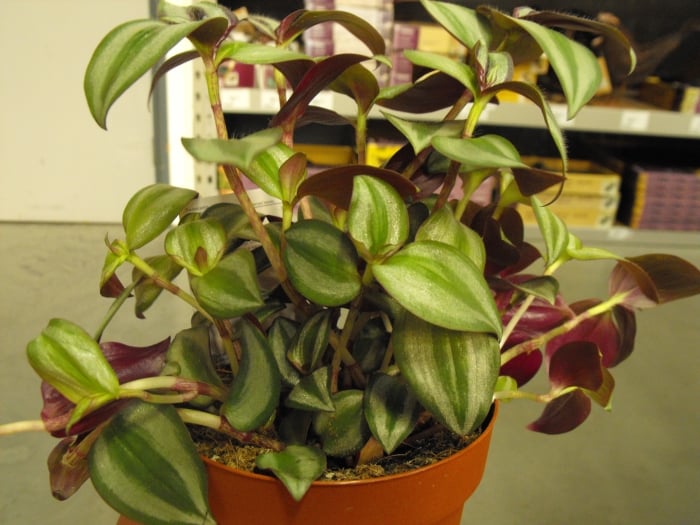
Flowering
The small non-showy flowers are white in color, appearing during summer usually and at other times (depending on the conditions). These flowers appear in clusters and display three small petals.
Plant Care and Growing
Wandering jew plants are pretty simple to care for and maintain, although providing plenty of bright light is important. Tradescantia naturally becomes spindly and needs to be pruned regularly and pinching stems will encourage fuller growth, improving its appearance.
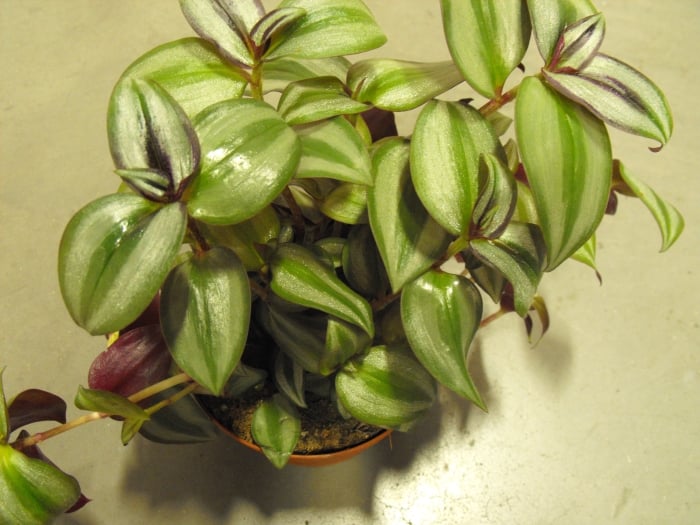
Potential Problems
- Spindly growth and bare stems: This happens naturally with age for this plant but lack of light, water, or plant food can also cause spindly growth. If the plant is old and conditions are fine (water, light, etc.) then it could be time to replace it.
- All green leaves: Variegated leaves turning green and losing their variegation is most likely due to too much light.
- Limp stems: Limp stems are usually a sign that the plant is lacking water
Take a 3 to 5-inch softwood cutting and place it in a moist potting mixture or water. Wait three weeks and enjoy.
Yes, the wandering jew can live in water indefinitely given nutrients and frequent water changes.
Yes, it is toxic but not fatal to cats, dogs, and horses. The leaves contain calcium oxalate crystals which is the toxic component.
The answer is it can be planted inside or out and is even considered a noxious weed in some areas as it grows so well.
Water often to keep the soil moist but not soaked.
Was this helpful?

Elyssa Goins is an experienced house plant hobbyist who maintains over a hundred plants. She is a gardener, beekeeper, and a proud mother of four. She is a member of the American Horticultural Society, has a published study in the National Social Science Association , and loves to talk about her love of plants. For the past twenty years, she’s been all about growing and caring for various fruits, veggies, herbs, livestock, kids, and houseplants. Managing a big garden to feed four growing kids and raising dairy goats has taught her so much about being an excellent plant parent and now is her time to share with you.
Dumb Cane Plant (Dieffenbachia): Plant Care and Growing Guide – House Plants Expert
Monstera albo (monstera deliciosa): plant care and growing guide – house plants expert.
This site uses Akismet to reduce spam. Learn how your comment data is processed .
Hi Mary, I hope you are able settle an argument between my brother & I He claims that golden canes are a grass spieces & not a tree!! Thank you in anticipation James

Oh boy, this feels like a setup. Golden Canes are a monocots which is in the same primary class as grass. What is the definition of a tree? If your hammock is tied to a tree on a tropical island would you call it grass? The technical and practical definitions are not the same for this age old debate.
- Privacy Policy
Copyright © 2013-2024 · Houseplantsexpert.com Houseplantsexpert.com is a participant in the Amazon Services LLC Associates Program, an affiliate advertising program designed to provide a means for sites to earn advertising fees by advertising and linking to Amazon.com.*Amazon and the Amazon logo are trademarks of Amazon.com, Inc., or its affiliates. Additionally, Houseplantsexpert.com participates in various other affiliate programs, and we sometimes get a commission through purchases made through our links.

- Rustic Home Decor
- Outdoor decorations
- Storage Ideas
- DIY Projects
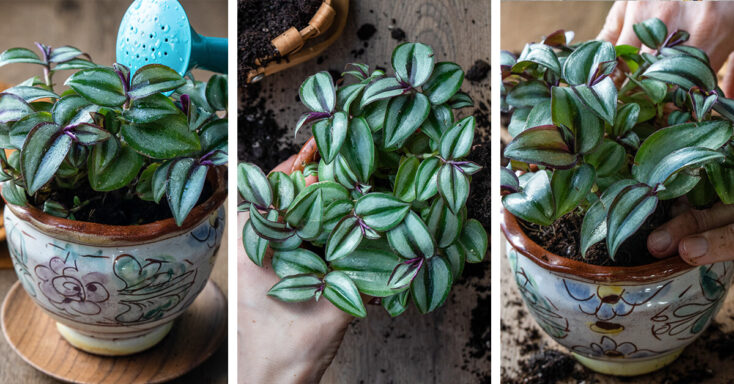
Wandering Jew Plant Care – How to Plant, Grow and Help Them Thrive
Tradescantia zebrina, commonly called the Wandering Jew plant, is a striking houseplant known for its variegated leaves tinted with green, silver, and purple. It originated in Central America and Mexico’s tropical regions. So, the Zebrina is a perfect choice for growing indoors. The good news is that Wandering Jew plant care is not difficult at all!
Key Takeaways
- Zebrina is a low-maintenance, fast-growing plant.
- The Zebra Plant makes an excellent choice for beginner gardeners because care isn’t overly complex.
- This plant quickly fills up empty spaces in your indoor landscaping efforts.
- Pruning is good for Zebrinas. It maintains their shape and keeps them from becoming invasive.
Wondering about the Wandering “Dude”
The Zebrina has numerous nicknames (many from cultivars), including Silver Inch Plant, Striped Trad, Striped Wandering Creeper, Purple Heart Plant, Small Leaf Spiderwort, Moses in the Cradle, and Zebra Plant. Because the name Wandering Jew is offensive to some, gardeners usually use one of these, the botanical name, or the new moniker, Wandering Dude.
The flowing leaves on this plant measure about ½ inch long and about ¼ inch wide. When used outdoors, they make a colorful ground cover. The flowers are pink to purple and bear brownish seeds. Take care when you work with the zebra plant. The sap proves irritating to some people.
Light Play: When Zebrina is in bright light, the colors become even more vibrant. If you have a window location with indirect light, the exposure enhances leaf pigments. It is very visually appealing.
The Basics of Wandering Jew Plant Care (Zebrina)
In taking care of any indoor plant, there are certain important points in your care routine.
- Temperature: Zebrina plants thrive when the temperature is around 70 degrees. Keep the plant away from drafts or air conditioning ducts.
- Light: South or eastern-facing windows work best, provided the light is indirect. If they’re not getting enough sun, they become spindly.
- Water: Keep your inch plant moist. Avoid over-watering or letting the plant’s soil dry out completely.
- Soil: Plant your Wandering Dude in a peat-based potting mix with good drainage.
- Humidity: Good news! The average humidity in your home should work fine.

The Battle of Fronds vs. Flowers: Many people buy houseplants for their flowers. Zebrinas do produce delicate petals, which look charming. However, the true allure of the Wandering Dude is its foliage.
Wandering Jew Plant (Zebrina) Needs
When you’re looking for a beautiful backdrop to your indoor garden efforts, Zebrina fills that need. Mix the type of container you use for greater visual impact. You can take your plants for a summer stroll, but you cannot leave them outdoors during winter.
Except for Purple Queen Zebrina, which loves direct light, the fronds of these plants will burn if left in direct sunlight for too long. If you have a window that gets light in the morning and indirect light later, the Wandering Dude will thrive.
Tip: Turn your pots periodically so all sides of the plant benefit from sunlight.
If you’d like to expand your Zebrina family, propagation is simple. It begins with taking a stem cutting. Look for a healthy stem and snip it below a node. You can then root it in a glass of water or put it directly into the soil. A little rooting compound improves the results from direct soil planting.
Choosing a Wandering Jew Plant for Your Home
Inch Plant (blossfeldiana): Thick, fuzzy leaves with purple undersides. It blossoms in flower clusters of white, rose pink, or blue. Mature height 6-12 inches.
Longpipes (Wild Crocus): These bluish-purple flowers appear from May until June. It’s thin, arching leaves grow up to 7 inches long. If you have a rock feature inside, longpipes will do well there.
Moses-in-a-basket (Oyster Plant; Boat Lily): The dark green leaves are sword-like and grow in a spiral. The undersides of the foliage are purple, and it blossoms with white flowers. Dwarf plants are 6-12 inches tall and require 6-8 hours of indirect light daily. The vibrant purple undersides of this plant’s leaves are truly striking.
There are two popular variants of Moses-in-a-Basket. One is a Tricolor, bearing pink, green, and cream leaves. The other is a Golden Oyster with bright gold-yellow leaves.
Pallida: A native of Mexico, Pallida goes by the name Purple Heart. The foliage is eggplant purple, adorned with light pink flowers bordering on orchid—a good choice for hanging baskets. Grows 1-2 feet tall and wide.
Striped Inch Plant (River Spiderwort, Speedy Henry): Average size is 12” x 12”. The plant’s leaves are dark green, shiny, and pointy (2 inches). Striped inch plants blossom with white flowers.
Virginia Spiderwort: Bright green narrow leaves topped with violet, three-petaled flowers that measure 2” across. Each flower only lives for a day, but there are so many you won’t notice. This is a larger member of the Wandering Jew family, with an adult height of 18-20 inches and a width of 12-18 inches.
White Velvet: Gray-green leaves covered in white hairs distinguish this Wandering Jew from others. It blossoms for about a month in bright pink-purple flowers. Received the Award of Golden Merit from the Royal Horticultural Society. Mature height: 12 inches.
While humans suffer no illness from Zebrina, ingestion by pets can be toxic. Keep this in mind when placing them around your indoor garden.
Wandering Jew Plant Watering Techniques
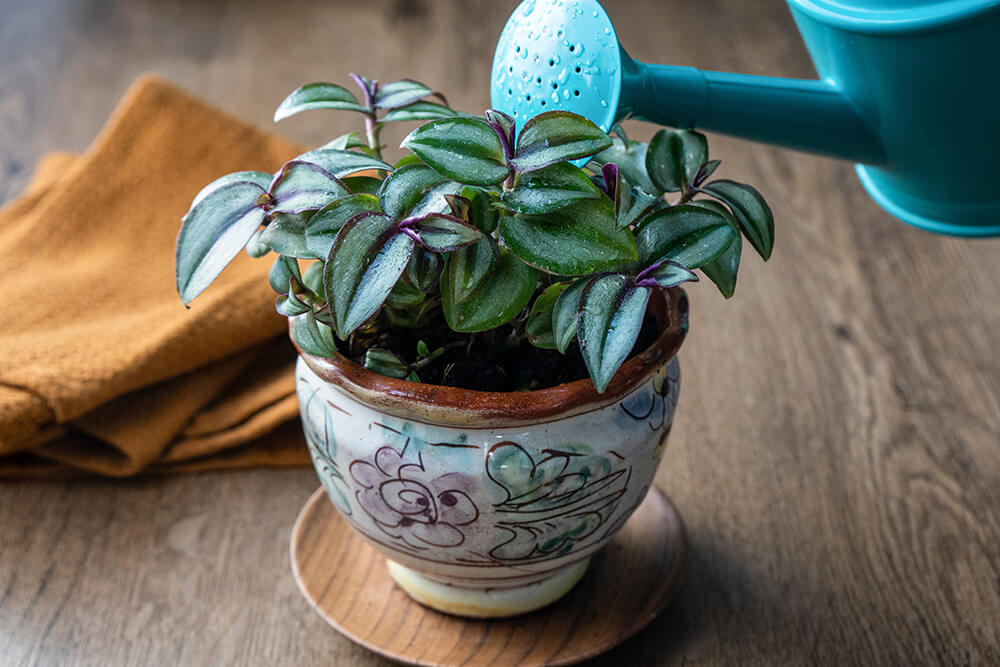
While these plants handle random overwatering, it won’t continue being healthy if left waterlogged too long. When you apply water, do so from the base of the plant. Watch and you can see the water absorption. Alternatively, you can take the plant to your sink and give it a good bottom watering until the liquid comes out of drainage holes. Let it finish in the sink, then put it back in place.
When you walk through your home, regularly check your plant’s soil. Put your finger down to the ½ inch point in the soil. If it’s dry, then water. Because your Wandering Jew may grow at different rates throughout the year, this test alleviates guesswork.
If you are busy and may forget, try an aqua globe.
Vertical Space: If you want a plant to fill some of your vertical space, you’ll be happy to know Zebrina can be trained. By using a support, you can guide it toward climbing. Use a moss pole or trellis as a support system.
Wandering Jew: Potting and Repotting
Tradescantia are fast growers, so you may need to repot it every two or three seasons. When it’s time, you want to give the plant a larger container and fresh soil. Zebrina’s roots will start peeking out of drainage holes to tell you they need more space. Alternatively, they may move up the side of the pot toward the container’s edge.
When you remove the plant from the current container, begin by putting it down on its side. Hold the pot with one hand and the base of the foliage with the other. Gently wiggle (the stems can be quite delicate). Once it slides out, shake off old soil and inspect for signs of disease or pests.
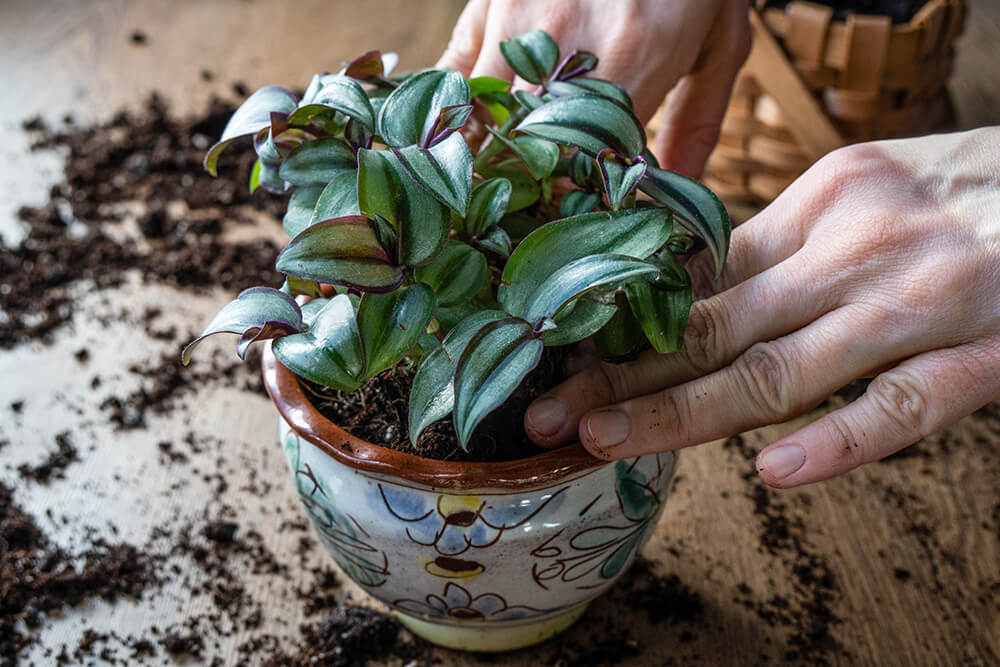
As a generalization, Zebrina represents adaptability, growth, and resilience. Because of its hardy nature, this plant has become a metaphor for overcoming adversity and showing grace during times of transformation. It is an emblem of the human spirit’s perseverance and enduring hope. In literature, the flower appears as a symbol of beauty, strength, faith, and diligence.
Dream books say the Wandering Jew appearing reminds you all is not lost. Stay true, stand tall, and succeed. If you’re holding the flower, it portends luck and prosperity.
Pruning and Maintenance
Because this plant grows quickly, heavy pruning is good for it. Make it an addition to your regular Wandering Jew care routine. Trim off long tendrils, dead leaves, and weak growth. Pinch off new growth and thin it out. This helps create a bushy appearance and transforms the plant into something suitable for your indoor efforts.
Sometimes, per their name, Zebrina goes a-wandering. It becomes leggy stems with few leaves. Keep those trimmed down so the plant can focus its energy more effectively. If you’re plants look rather dull, trimming is the trick for promoting thick leaves.
Perhaps the most important reason for pruning Wandering Jews is to keep them healthy. Removing unhealthy or dead parts deters fungus and disease.
When: Indoor plants often follow nature’s lead, resting during fall and winter. So, give them their haircut in spring or early summer at the latest.
Zebra Plants and Therapeutic Properties: Inch plants have antioxidants and antimicrobial properties. In areas like Jamaica, people treasure them as a treatment for high pressure and cough while applying leaves for swelling. In China, this plant has the name “Water Turtle Grass.” It’s recommended for kidney disorders. Mexicans have an inch plant leaf decoction used as a tonic. Along the same lines, Guyana healers brew the leaves and offer the tea for influenza and digestive issues.
Blooming and Resting Periods
This plant’s flowers benefit from a dormant period the previous winter. Since it’s indoor, you’ll need to put the Zebrina in an area hovering around 60F. Reduce water. You want the soil to dry for two weeks between irrigation. Always use room-temperature water so you don’t shock your plants.
Once the Wandering Jew is growing, you’ll need to water it once a week. Now is the time for fertilization.
There is a legend that surfaced in the 13th century. It says that a Jewish person taunted Jesus on his way to crucifixion. As a result, the person was cursed to walk the earth until the second coming. Another sad account was that of a condemned man separated from his sister by the Bering Straight. He set out to find her, yet wherever he traveled, plagues followed. There is no happy ending here. The fellow never finds his sister.
There is no question that the Wandering Jew is diligent and sometimes invasive, so perhaps some of those characteristics contributed to the plant’s name.
Common Pests & Plant Diseases
Wandering Dudes rarely have pests indoors. Occasionally, you may find aphids or spider mites. You can wash both off the leaves or use a natural insecticide.
When you see small white webs on the undersides of leaves, that’s a spider mite. They like it warm and dry, so amp up the humidity using a household humidifier near the plant. Spray it periodically. Should the critters persist, wash the plant in your sink.
Signs of Aphid infestation include:
- Weakened growth
- Yellowing, twisting, or curling leaves
- Small white flakes on the leaves (this is the result of aphids shedding their exoskeleton)
- A sticky, shiny substance on leaves and stems (honeydew)
- Black, sooty mold (a result of honeydew)
- Diseased plants (aphids carry over 100 different viral diseases that can settle into the Wandering Jew)
Neem oil is a trusted remedy. Apply, then re-apply in a week. Continue more applications until they’re gone.
When it comes to disease, most develop because of over-watering, which leads to root rot. Roots can only retain so much water before they start getting mushy. The good news is you can remedy this easily. Reduce your watering schedule and improve the drainage in the soil. Just add some coarse sand or perlite.
Black patches and white powdery particles on your plant’s leaves reveal fungal issues like leaf spots, botrytis, and powdery mildew. Clean away affected foliage. Make sure your plant isn’t over-watered. If you get stuck and the fungus won’t go away, you should dispose of the Wandering Jew and sterilize the container before reusing it.
In an odd twist, you can grow wandering jew plants in water. You will need to change the water every 4 days and add a little fertilizer (3:1 ratio in freshwater). Using purified water is best. Salt and chlorine can adversely affect these plants. Also, make sure the water is at room temperature. With the right lighting, you can keep Zebrina alive in water for a long time, much like money plants.
Troubleshooting Common Wandering Jew Problems
- Bare stems and spindly growth: Over the years, this is natural. However, in younger plants, it may indicate a lack of light, water, or fertilization.
- Loss of leaf color: When variegated leaves begin turning all green, your plant is getting too much direct sunlight.
- Limp stems: Typically means a lack of water, but could be a sign of insects.
Word Play: The Inch Plant’s name is descriptive to a T. This foliage grows approximately one inch every week! It can also propagate itself using only an inch of stem.
Frequently Asked Questions About Jew plant
Does a wandering jew plant need sun.
Yes, but not direct sun. An area with indirect light is best for these plants. Turn the plant periodically so all sides get filtered light regularly.
How do you care for a wandering Jew indoors?
Now, you may have Wandering Jews that are just indoor plants. But if you have outdoor pines, you; 'll need to bring them into your home before the threat of frost. They’ll do just fine in your household landscape as long as you give them adequate light and proper watering.
How often do you need to water a wandering Jew plant?
If your Wandering Jew develops mushy stems, you’re over-watering it. Don’t automatically bring over the water pail. Check the soil. If it’s dry down to 1”, it’s safe to add moisture. Otherwise, wait.
How long will wandering Jew last?
Wandering Jews are fairly hardy. As long as you care for them correctly, your Tradescantia plants will live for many years.
How big do wandering Jews get?
Much depends on the type. Most plants don’t grow beyond one foot tall but may have longer (2-foot) stems.
Zebrina plants have a rich history and a variety of interesting traits. It thrives in a variety of environments, and has alluring striped leaves, and people enjoy looking at it. When you want to add some living greenery to your indoor garden, Zebrina is one possibility. It’s exotic yet understated, and you will enjoy it for years to come.
- Living Room
- Dining Room
- Laundry Room

Wandering Jew Plant Care and Grow Guide

The Wandering Jew Plant (Spiderwort) is a hardy houseplant that’s the perfect choice for home gardeners without a green thumb.
They are easy to care for and doesn’t take that much effort. This article will guide you through how to care for wandering jew plants and grow them successfully.
Wandering Jew Plant Overview
Natives of Guatemala and Mexico, the Wandering Jew Plant is an evergreen perennial. It can be cultivated outdoors in regions that are frost-free as a ground cover, where it will produce smallish, three-petaled lavender-hued blooms.
If you reside in a colder region, the wandering jew can be cultivated as a houseplant in pots or hanging planters, but most likely it will not flower.
The wandering jew has a couple of other common names – Spiderwort or the Inch Plant. The Inch Plant comes from the leaves being spaced approximately an inch apart.
Its colorful foliage is attention-grabbing in any décor with oval-shaped leaves that grow to about 2.5 inches in length, and stems growing to as much as two feet long.
They are a member of the Commelinaceae family, which includes over 650 species of climbers, herbs, and several epiphytes. Its part of the Tradescantia genus and offers numerous varieties.
Each variety is unique and will present its own difficulties. These plants are cultivated both indoors and outdoors as ornamentals thanks to colorful and variegated foliage.
Some of the more well-known varieties include:
- Tradescantia Callisia which features white bold striping.
- Tradescantia Flumeninsis features thinner leaves and stems than Zebrina varieties and comes in numerous colors and variations.
- Tradescantia Pallida “Purple Heart” boasts attractive purple foliage.
- Tradescantia Zebrina pendula with reddish foliage
Wandering Jew Plant Care Guide
An easy houseplant to cultivate indoors, the wandering jew plant will offer a lush and colorful addition to any corner of your home or office.
They require very little care and the only delicate aspect of their cultivation is keeping the soil bed nice and moist. They like moisture, but will not do well in a waterlogged potting mix.
Beautifully suited for a hanging pot or for a place on a shelf or table where they can cascade downward, they will thrive with lots of bright indirect light. They should be pinched back frequently to prevent them from becoming leggy or with stems that look bare.
While the wandering jew plant does not have a particularly long lifespan, it can be easily propagated with stem cuttings from the mother plant. This means that you’ll always have a wandering jew plant in your home.
Soil for the Wandering Jew Plant
The wandering jew plant will well in fresh potting soil. They like consistently moist soil and the only real risk is overwatering.
They need a well-draining soil bed and should never be allowed to sit in water or soggy soil. Their roots would be at risk for root rot.
To help with drainage, add some sand to your potting mix. The soil bed should be rich in organic matter .
Here are three options to blend your own potting mix :
- One part compost with one part potting soil.
- Equal portions of potting soil, peat and compost.
- Equal parts of compost, sand, and potting mix.
Light for the Wandering Jew Plant
The wandering jew plant will thrive in bright natural light that is indirect. Ideally, they should be placed near a window that can afford them at least eight hours of sunlight daily.
They should not receive direct sunlight, as UV rays can scorch the leaves. Should your plant’s color begin to fade, it is probable that your plant is not receiving enough light.
Water and Humidity for the Wandering Jew Plant
Moisture in the soil bed should be constant with these plants. They should be watered weekly during the spring and summer, their growing season. Water less often in the winter and fall when they enter dormancy.
To decide if it’s time to water your plant, place your fingertip a few inches down into the soil. If it feels dry, it is time to give your plant a drink.
The wandering jew plant prefers a humidity level that is a bit above average. If you have a place in your home that is humid, typically the kitchen or a bathroom, your plant will be happier there.
For other locations, you can use a small humidifier or mist your plant every several days. If the plant’s leaves begin to turn brown, your home’s humidity level is probably too low.
Another solution is using a pebble water tray. Place the plant pot on a tray filled with pebbles. You can either pour some water into the tray or allow the water from the plant to drain out into the tray.
That will create a humid atmosphere around the plant. It is important that the plant container sits above the waterline and does not touch the water.
Temperature for the Wandering Jew Plant
Wandering jew plants do well in a temperature range from 65° to 75° Fahrenheit. They will also be fine in somewhat warmer temperatures.
However, they should not be kept at temperatures that fall below 50°F. Lower temperatures can cause damage to its foliage.
Fertilizer for the Wandering Jew Plant
These plants do not require much in the way of feeding. You can fertilize every two months with a water-soluble fertilizer that is diluted to half its strength.
Be careful with too much fertilizer. If you overfeed it, the leaves of your plant may lose variegation.
The buildup of salts in the soil from the use of fertilizer can result in the burning of your plant. You can flush out salt by running water through your planter for approximately five minutes, or flush the plant outdoors with a hose.
Pruning and Repotting the Wandering Jew Plant
This is an aggressive houseplant that grows quickly. It can become leggy if it is not pinched back often.
To obtain a fuller, wider and bushier plant, prune back stems every so often, trimming to a joint. To prevent legginess, trim back stems by approximately a fourth of their length regularly.
Stem cuttings after they have taken root should be repotted in larger containers to ensure correct growth.
Mature plants should be repotted annually. Any type of container is fine as long as it has sufficient drainage holes. The choice of container material will influence how often you will need to water. When you repot, choose a new container one to two inches larger.
A clay or terracotta pot will most likely dry out the soil bed more quickly, whereas a plastic pot will maintain moisture longer.
Here’s how to repot the wandering jew plant:
- Remove the plant from its current container gently.
- Fill the new container about a quarter-full with potting mix.
- Control to see if the roots are bunched together and tease them apart if necessary.
- Place the plant in the new pot and fill it with new soil mix.
Propagating the Wandering Jew Plant
Wandering jew plants are easy to propagate with stem cuttings.
- Trim a piece of stem, about an inch in length that contains at least one leaf.
- Place the cut end directly into the potting soil.
- Water the soil regularly and within several weeks your new plant should take root.
- It does not require the use of a rooting hormone.
Wandering jew plants can also be rooted in water in a jar or glass:
- Fill the jar with approximately three inches of water.
- Remove leaves off the stem cutting that could be submerged.
- Place the stem cutting in the water and place it in a bright spot.
- The water should be changed when it is cloudy or every other week.
- After several weeks, new roots will form.
- When the roots reach a few inches in length, you can transplant your cutting to a pot with soil.
Wandering Jew Plant Toxicity and Pets
The Wandering Jew plant is toxic to dogs, cats, and horses. Typical indications of wandering Jew poisoning in pets may include:
- Conjunctivitis
- Muzzle irritation and redness
- Redness of the paws and between toes
- Redness eye area
- Palmar ulceration
For humans, in addition to the above symptoms, the sap may also be the cause of dermatitis in humans.
Wandering Jew Plant Pests, Diseases, and Problems
As with most houseplants, the wandering jew plant can be infested by either aphids or spider mites.
If you notice any indications of an infestation, treat your plant immediately with an organic insecticide such as neem oil. This insecticide is produced through the pressing of seeds from a neem tree. It is organic and will not harm humans or pets.
Neem oil is also considered safe for local wildlife, including birds, as it targets pests. This oil can treat aphids, whitefly, spider mites, and scale insects, among others. It is also effective against fungal infections such as blight, mildew, rust, leaf spot, etc.
Should the lower part of your plant’s stems begin to suffer leaf drop, it is a sign that your plant needs more light. In warmer seasons, you can give your plant a breath of fresh air by moving it outdoors to a spot with partial sun and partial shade. Avoid over-exposure to the sun.
Mushy stems or black foliage indicates root rot. Unhealthy plant parts should be cut away. Healthy parts can be repotted in a fresh soil bed. Rotted sections cannot be saved, so they need to be discarded.
Wandering Jew Plant Care Final Thoughts
If you are looking for a colorful plant to brighten up an indoor space, the beautiful, variegated foliage of the wandering jew plant is a winner.
Thanks to their hardy nature and their little care requirements, they are perfect for beginner gardeners or those who do not have a lot of time to dedicate to houseplants.

- 𝐋𝐈𝐕𝐄 𝐈𝐍𝐃𝐎𝐎𝐑 𝐏𝐋𝐀𝐍𝐓 This rare pink Wandering Jew Tradescantia Nanouk is an absolute show stopper. It has vibrant, colorful leaves that are delicately striped with pink variegation. Their foliage cascades, so they don't mind being perched high up where they can also get adequate light. Under the right
For other houseplants that are easy to care for, check out these guides:
- Polka Dot Plant Care and Grow Guide
- Shamrock Plant Care and Grow Guide
- Swedish Ivy Plant Care and Grow Guide
Wandering Jew Plant Care FAQs
Does the wandering jew plant like sun or shade.
The Wandering Jew Plants likes bright, but indirect sunlight. Partial sun and shade are good for this plant.
Is the Wandering Jew Plant an indoor plant?
Yes, the Wandering Jew Plant is an indoor plant, but can also grow outside if given proper conditions. They require above average humidity levels, moderate temperatures, and consistently moist soil.
Is the Wandering Jew Plant bad luck?
Some people do believe the superstition that the Wandering Jew Plant brings bad luck. However, there has never been scientific evidence to support this belief. The only thing we know about the Wandering Jew Plant’s history is that its name comes from the legend of the Wandering Jew.
Is the Wandering Jew Plant poisonous to humans?
No, the Wandering Jew Plant does not contain any toxins harmful to humans. But the plant’s sap can cause skin irritation to humans. There is information out there that folk medicines utilize the sap and plant, but there are no scientific studies.
Does the Wandering Jew Plant attract bugs?
Yes, the Wandering Jew Plant attracts bugs because of its sweet scent. If you want to keep them at bay, try spraying your plants with neem oil. Aphids and spider mites are the most common pests that will affect this plant.
Do Wandering Jew Plants have fuzzy leaves?
Some varieties of Wandering Jew Plants have fuzzy leaves, while others do not. Of the ones with leaves that have a fuzzy texture, the colors of those leaves are usually green and purple.
Is the Spiderwort the same plant as the Wandering Jew Plant?
Yes, the Spiderwort is another common name for the more popular name, Wandering Jew Plant.
Written by:
Leave a Comment Cancel reply
Save my name, email, and website in this browser for the next time I comment.

Smart Garden and Home 1335 S Birch St Santa Ana, CA 92707
© 2024 SmartGardenHome.com | All Rights Reserved

Wandering Jew (Tradescantia Genus) Care & Growing Guide
The Wandering Jew is a name that is used for several different species of plants in the Tradescantia genus, which includes at least 75 different species.
In times past, gardeners would share cuttings from their Wandering Jew plants with friends and neighbors so, like its name, it traveled from place to place. If you want to brighten up your home, having the Wandering Jew Plant will do just that with its colorful variegated foliage and beautiful flowers .
Wandering Jew Care & Growing Guide
1. light requirement.
They will tolerate low light as this will help them to retain their striking colors. If it is an indoor plant, put it in a location where it will receive filtered sunlight. Outdoors, it needs to be in a spot where it is receiving partial shade or partial sun. You can also move your indoor plant outside to get this type of shade or sun.
The soil will need to be kept moist but not soggy. If the soil starts to feel very dry, then it is time to water your plant. Just stick your finger into the soil and if the top inch feels dry, water it until the water comes from the bottom of the drain holes of your plant.
For the outdoor plants, during the spring-summer growing season, you should water your plants once a week. In the winter, during the dormancy period, you will only need to water it about once every other week. It will need to be fertilized each month during the growing season.
The Wandering Jew can be grown as a houseplant in any climate but outdoors it should be USDA Hardiness Zone 9-12
The Wandering Jew plant can grow in different soils as long as they drain well in order to prevent stem and root rot. You should make sure that you are using a lightweight soil mixture. You should not use straight potting soil as they retain too much moisture. You can also use a potting soil that has a slow-release fertilizer mixed in so you do not have to fertilize each month.
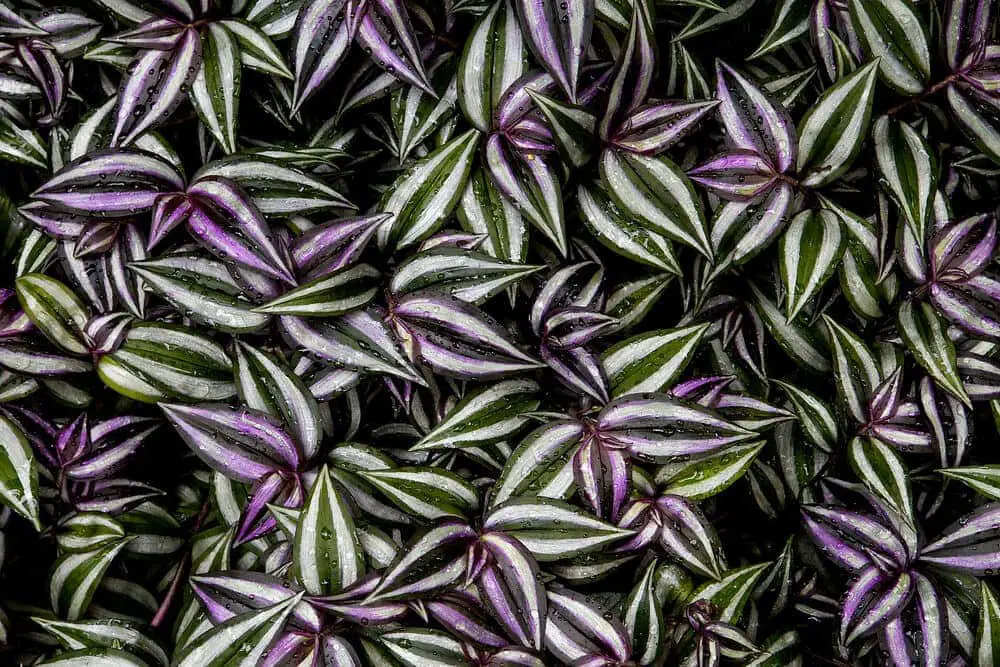
5. Temperature
The ideal indoor temperature should be between 50-85 degrees Fahrenheit. They do need some humidity for growing so if your house is not very humid, you can fill a spray bottle with water that is at room temperature and mist the plant several times a week.
6. Repotting
If you bought a Wandering Jew that is already in a planter or container, it should be okay for at least a year before it needs to be repotted. If you get root cuttings in a small four to six-inch pot, you will probably have to repot the plant into something bigger or outside so they can properly grow. In that small of a pot, it will outgrow it in a month or two.
7. Speed of Growth
It is stated that it has a fast rate of growth and will quickly spill over your hanging basket or covering your ground area. When you are starting new plants from your cuttings, it will take several weeks before you start to see new roots.
8. Height and Spread
The stems of the Wandering Jew plant grow from 6-9 inches high and 12-24 inches in spread
Depending on the species, you can get pink, white, or rose-purple blooms
10. Trimming
The Wandering Jew does not need much trimming. You can pinch off the stems if you want to promote a bushier growth or control the size of the plant. Trim off any dead, damaged, or broken leave or stems throughout the year to keep it looking good. You should regularly pinch the stems back by at least twenty-five percent.
Is Wandering Jew Poisonous?
Some people may experience skin irritations when they handle the cuttings because of the sap so you may need to wear gloves when you work with the plant. If your pet chews on it, the sap can irritate their digestive system, especially a cat. If they eat or chew on the leaves, these do not normally cause a problem, just the stems with the sap.
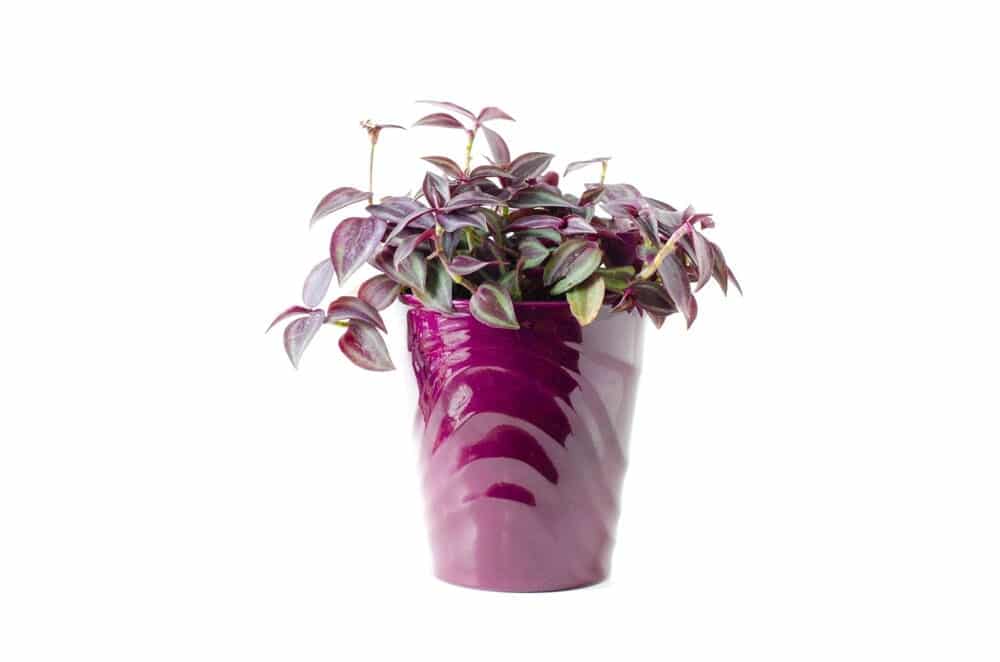
Can Wandering Jew grow in Water?
Yes, you can take the cuttings from your trimming to start new Wandering Jew plants in water. Fill the container with three inches of water that is room temperature. Pinch off any of the leaves that will be submerged in water before you put the cutting in the container. Set it in a bright indoor location. Change the water when it becomes cloudy or every other week. When the roots are several inches long, you can repot them in a planter or outdoors.
How to get Wandering Jew to Flower?
Make sure that you give it the right soil, and moisture. Also remove any dead flowers or dead or damaged leaves. You also want to make sure it is getting the right light because the brighter the light, the more flowers it will produce.
More like this: Elephant Bush (Portulacaria Afra) Care & Growing Guide
Common Plant Diseases
Wandering Jew is prone to a variety of diseases, including:
- Stem or root rot—it is getting too much water or it is not draining properly so watch the watering and make sure that it is draining.
- Leaves losing color or drooping—not enough light so if indoors, you just have to move the plant where it will get more light.
- Sunburned foliage—too much sun so you need to put it in a less sunny location.
- Aphids, spider mites, mealybugs, or whiteflies—these are all sap-sucking insects and can quickly kill your Wandering Jew plant. If the infestation is small you can just wipe the leaves and get rid of them. You may also use an insecticidal soap with water and gently spray the plant.
- Rubber plant Care & Growing Guide
- Amazon Lily Care & Growing guide
- This is a hardy plant that is easy to take care of, even those that fell they kill every plant they try to grow.
- They grow well outdoors in frost-free regions or in hanging baskets or planter.
- When grown outdoors, it can be used as a groundcover that grows quickly.
- The biggest problem with using Wandering Jew as a houseplant is to be able to get the moisture levels correct.
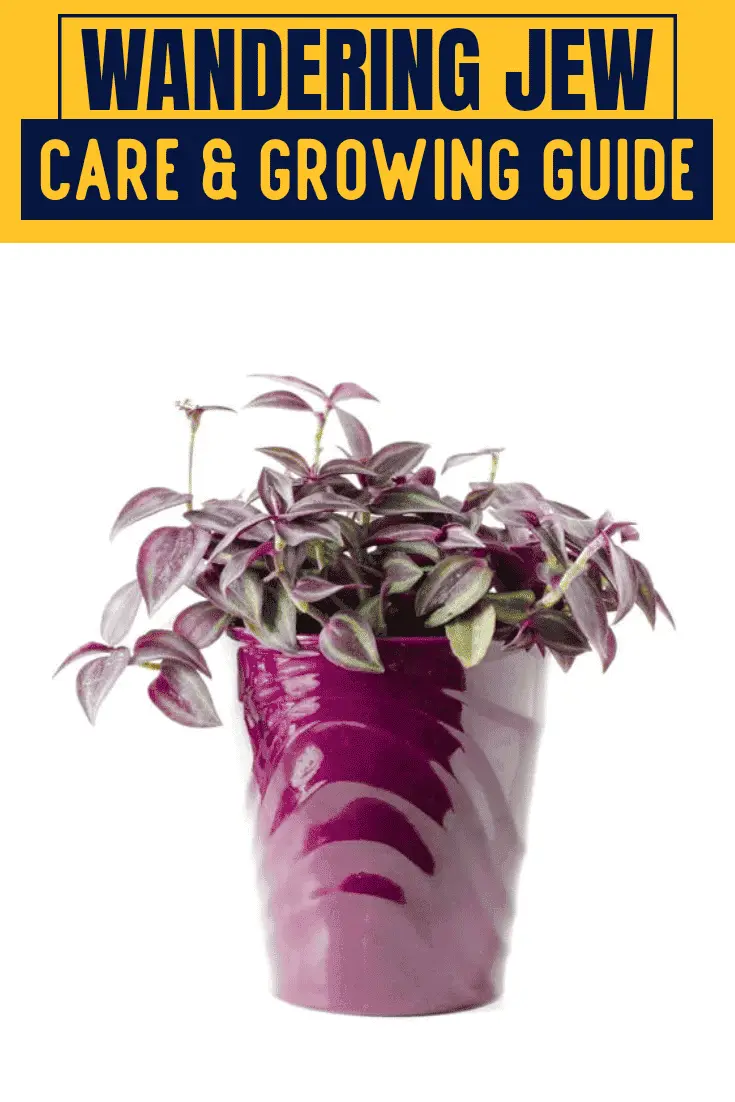
Victoria is the owner and main author of hobby plants. She loves spending her free time in her garden planting and taking care of her plants. Victoria hopes you enjoy the content here!
- List of Plants (A to Z)
- Buy Plant Seeds Online
- Guide to Growing Wandering Jew Plant in a Pot
Introduction
The Wandering Jew plant, also known as Tradescantia zebrina, is a popular choice among indoor gardeners due to its vibrant purple and silver leaves. This easy-to-grow plant is native to Mexico and Central America and thrives in a pot environment. If you’re looking to add some color and life to your indoor space, the Wandering Jew plant is an excellent choice. In this guide, we will walk you through the steps of successfully growing and caring for a Wandering Jew plant in a pot.
Selecting the Right Pot
When choosing a pot for your Wandering Jew plant, make sure it has drainage holes at the bottom. These holes allow excess water to escape and prevent the plant from sitting in water, which could lead to root rot. Additionally, select a pot that is slightly larger than the current size of your plant. This allows room for growth without overwhelming the roots.
Potting Mix
To provide the best growing conditions for your Wandering Jew plant, use a well-draining potting mix. You can either purchase a pre-mixed potting soil suitable for houseplants or create your own mix by combining equal parts of peat moss, perlite, and vermiculite. This mixture ensures proper aeration and moisture retention while preventing waterlogged soil.
Planting Process
When transplanting your Wandering Jew plant into a new pot, gently remove it from its current container. Be careful not to damage the roots during this process. Place the plant in the new pot and fill in the gaps around it with the potting mix. Press down lightly to secure the plant into place without compacting the soil too much.
Wandering Jew plants prefer consistently moist soil but are susceptible to root rot if overwatered. To determine when to water your plant, check the top inch of soil. If it feels dry to the touch, it’s time to water. When watering, thoroughly soak the soil, allowing excess water to drain out of the bottom of the pot. Avoid letting the plant sit in standing water, as this can lead to root rot.
Light Requirements
Wandering Jew plants thrive in bright, indirect light. Place your pot near a window that receives filtered sunlight throughout the day. Avoid exposing the plant to direct sunlight, as this can scorch its leaves. If your indoor space lacks adequate natural light, you can supplement with fluorescent grow lights placed a few inches above the plant.
Temperature and Humidity
The ideal temperature range for a Wandering Jew plant is between 60°F and 85°F (15°C and 29°C). Keep your plant away from drafts and extreme temperature fluctuations, as they can cause stress and affect its overall health. Additionally, these plants enjoy moderate humidity levels. If your home is particularly dry, use a humidifier or place a tray of water near the plant to increase humidity.
Fertilizing
To promote healthy growth and vibrant colors, fertilize your Wandering Jew plant every two weeks during the growing season (spring and summer). Use a balanced liquid fertilizer diluted to half strength as instructed on the packaging. Avoid over-fertilizing, as this can lead to salt buildup in the soil, causing damage to the roots.
Pruning and Propagation
Regular pruning helps maintain the shape and appearance of your Wandering Jew plant. Trim back any leggy or overgrown stems to encourage bushier growth. You can also propagate new plants from cuttings taken during pruning. Simply snip off a healthy stem just below a node (where leaves emerge), remove the lower leaves, and place the cutting in a glass of water. Once roots have developed, transfer the cutting into a pot with fresh potting mix.
Common Problems and Solutions
- Yellowing leaves: This could indicate overwatering or inadequate drainage. Adjust your watering schedule and ensure the pot has proper drainage.
- Drooping leaves: If the leaves appear wilted or droopy, it may be a sign of underwatering. Increase your watering frequency and ensure the plant receives enough moisture.
- Pests: Wandering Jew plants can attract aphids, spider mites, and mealybugs. Regularly inspect your plant for signs of infestation, such as sticky residue, webbing, or small insects. Treat with insecticidal soap or neem oil to eliminate pests.
- Leggy growth: Insufficient light can cause elongated and weak stems. Move your plant to a brighter location or provide supplemental grow lights.
Growing a Wandering Jew plant in a pot can bring beauty and vibrancy to any indoor space. By following this guide, you’ll be equipped with the knowledge to successfully care for your plant. Remember to provide the right potting mix, proper watering, adequate light, and regular pruning. With a little love and attention, your Wandering Jew plant will thrive and become a stunning addition to your home.
Related Posts:
Wandering jew plant.
- How to Get Rid of Worms in Wandering Jew Plant
- How to Grow Wandering Jew Plant Outdoors
- How Much Oxygen Does Wandering Jew Plant Produce?
- How Quickly Does Wandering Jew Plant Grow?
- How to Get Rid of Ants on Wandering Jew Plant
- How to Get Rid of Borers on Wandering Jew Plant
- How to Get Rid of Slaters on Wandering Jew Plant
- Wandering Jew Plant Soil: How to Choose the Right Type
- How to Get Rid of Mold on Wandering Jew Plant
- What is Wandering Jew Plant Commonly Used For?
- What Are The Little Bugs on My Wandering Jew Plant
- How to Repot Wandering Jew Plant
- How Much Water Does Wandering Jew Plant Watering
- How to Get Rid of Fruit Flies on Wandering Jew Plant
- How to Get Rid of Slugs on Wandering Jew Plant
- How to Get Rid of Scales on Wandering Jew Plant
- Where to Purchase a Wandering Jew Plant
- Guide to Fertilizing Your Wandering Jew Plant
- How to Trim Wandering Jew Plant: In-depth Pruning Guide
- How to Get Rid of Gnats in Wandering Jew Plant
- How to Get Rid of Spider Mites in Wandering Jew Plant
- Why Are My Wandering Jew Plant Leaves Turning Yellow?
- Why Your Wandering Jew Plant Is Growing Sideways
- How to Get Rid of Aphids on Wandering Jew Plant
- How to Tell if Wandering Jew Plant Needs Watering?
- Why Does my Wandering Jew Plant Have Brown Spots?
- Wandering Jew Plant Stages of Growth
- How Tall Does a Wandering Jew Plant Grow
- How to Transplant Wandering Jew Plant
- How to Get Rid of Mosquito Larvae in Wandering Jew Plant Water
Wandering Jew Plant Care Guide

The wandering Jew plant is actually several varieties of Tradescantia that have collectively taken on the name. As the term “Wandering Jew” is controversial, they’re also frequently referred to as wandering dudes or inch plants. These fast-growing spiderwort plants can quickly become invasive, but if they’re grown indoors they’re very rewarding.
These plants are wonderful for hanging baskets or training to grow up structures, as long as they’re kept from spreading into the surrounding ecosystem. Regardless of which Tradescantia variety you end up with, care requirements are the same and you can expect the same behavior. They tolerate a bit of neglect, so they’re beginner-friendly and will survive if you decide to take a vacation but forget to set up a plant sitter for a week.
Because this plant is several plants falling under the Tradescantia genus, appearance varies depending on the type of inch plant you end up with. There are several common varieties, each with its own unique appearance. They range from green to purple, come in variegated forms, and are all quite striking as they trail and crawl from their pots and planters.
Most inch plants can grow up to three feet in length and up to 12” high. They’re evergreen perennials, meaning you’ll be able to enjoy your Tradescantia all year long. They make amazing groundcover, giving a bit more variety to the usual all-green fodder available, but should be kept in planters or well-groomed areas outside.
Quicksilver
Tradescantia fluminensis, or Quicksilver, is a beloved variety of inch plant. Its leaves are mostly green but have delicate stripes of silver or white running lengthwise across them.
Purple Heart
Tradescantia pallida , or Purple Heart, lives up to its name. This variety has bright violet stems and leaves and makes a big splash when left to cascade from a hanging basket. There is some variation in color and your plant could yield everything from its famous violet to a darker purple or even turquoise.
If you’ve picked up a Tradescantia zebrina , you have a tricolor inch plant on your hands! This is a breathtaking variety of Tradescantia . It has variegated foliage and eye-catching green and purple leaves. They sport thick white or silver stripes and look as if they take far more maintenance than this plant requires.
White Velvet
Tradescantia sillamontana , or White Velvet, is distinct from the other varieties on this list. Rather than smooth leaves, Tradescantia sillamontana has fuzzy leaves that are soft to the touch. If you successfully get your plant to flower, it produces multitudes of bright pink and purple flowers.
Care Requirements
Tradescantia plants aren’t picky. They don’t have a demanding list of requirements and their needs are fairly basic for a houseplant. Because they grow and spread so quickly, you won’t be left waiting to enjoy the fruits of your labor, either. You’ll know you’re doing a great job as long as it continues to grow!
Adequate lighting is critical if you want your inch plant to maintain its bright color. After all, that’s the draw of the plant, so it would be disappointing to have it fade due to poor lighting conditions.
To keep your plant looking vibrant and healthy, opt for bright, indirect light. Too much direct sun can burn the leaves, so don’t leave it out to bake in full sun. Instead, find a great north-facing window that receives plenty of indirect light.
If your plant is outside, keep it in partial shade to take the edge off the hot afternoon sun. Full shade is fine, too, as long as you don’t notice any leggy growth or dull coloration start to come in.
Moist soil and moderate watering are the keys to Tradescantia ’s continued happiness. These plants don’t do well with wet soil, but they prefer it to remain moist. A quick soil test will do the trick. Just press your fingertip into the soil, and water once you notice the top couple of inches are dry. Water thoroughly, until you see it draining from the bottom of the pot.
Cut back on watering during winter. The plant goes dormant and doesn’t require as much, so it’s easy to overdo things.
These creeping plants aren’t picky when it comes to soil. Get something well-draining and neutral and they’re satisfied. Standard potting soil is perfectly adequate. If you notice that it’s retaining too much water, you can always add perlite or other drainage material to prevent root rot from setting in.
Slow-release fertilizers are excellent options for Tradescantia . You can also apply a well-balanced fertilizer once per month (or every four weeks). Dilute your fertilizer to half-strength and feed your plant during the growing season. There’s no need to continue over winter, and doing so can actually harm your inch plant .
Temperature
Wandering Jews don’t face cold temperatures or frosts in their native areas, typically, but household temperatures are perfectly acceptable. If you’re growing your plant indoors, you likely won’t need to adjust the temperature to suit them. They’ll adapt to you, instead. Anything from 50°F to 85°F is suitable, so most homes fit the bill without extra effort!
If you leave your Tradescantia outdoors and live in a climate that gets cold winters, bring them indoors. Frost can kill this plant, though there’s a possibility that it will return in spring. It’s best not to take the risk if you can just bring it inside, instead.
To keep your Tradescantia vibrant and plentiful, keep humidity levels high. Around 70% humidity is ideal. It’s simple enough to achieve with a well-placed humidifier or even daily misting. If you keep your inch plant in a hanging basket or pot, situate it near other plants to maintain humidity levels more easily.
If you’re struggling to maintain the perfect humidity level, don’t fret too much. This plant is fairly hardy and as long as you’re keeping up with its watering requirements, dropping below ideal humidity levels isn’t the end of the world.
Pruning is necessary to help your Tradescantia look its best. Regular pruning allows this plant to become full and bushy, rather than full of leggy growths. Remove any dead or decaying stems as you see them and cut away leggy areas with clean, sterilized pruning equipment. You can cut back the stems and pinch down the tips to promote new growth and help your plant look like a real showstopper.
The sap does irritate some people. If you’re new to caring for Tradescantia , it’s best to wear proper gardening gloves rather than take chances.
Propagation
Propagation for this type of plant is exceedingly easy, which is why they seem to spread so quickly if left free to roam outdoors. Take a cutting between three and four inches long (make sure it has a handful of nodes) and place the cut end into your moist soil. Dipping it in rooting hormone before adding it to the soil helps, but it isn’t necessary. Water your cutting and place it into bright, indirect light. Keep the soil moist and wait for your new plant to grow!
If you prefer the water method, you can remove the bottom few leaves and place the cutting into a clean glass of water. Replace the water every few days and leave the container in indirect light. Once you see roots begin to grow, follow the same steps in the previous paragraph.
It’s okay for Tradescantia to get a little crowded, so you won’t need to repot frequently. Every two years will suffice. Upgrade your container by one size, and ensure that it has adequate drainage. Any type of container will work, but monitor its watering needs closely if you choose unglazed terracotta!
Pests and Insects
Tradescantia stand up well against pests, especially if they’re kept as indoor plants. Still, infestations can happen, and there are a few insects to look out for.
- Spider Mites – The best way to ward off spider mites is by keeping humidity levels high. Luckily, that’s what inch plants prefer! If you do notice the tell-tale spider mite webbing, notice brown spots or leaf damage, or even catch sight of one of the tiny red or brownish insects, take action. Rinse the leaves of your plant and treat it with plant-safe soaps or oils. Neem oil is great for many types of pests, spider mites included.
- Aphids – If you keep your plant outdoors, it’s at a higher risk for aphid infestation . They gather on the stems of your plant and drain its energy. If left to do their dirty work for long enough, you risk losing your whole plant. Wipe down the leaves and stems with a damp cloth and treat them with insecticidal soap or neem oil to keep aphids away.
Final Thoughts
T radescantia plants are a marvelous addition to any plant lover’s collection. They’re easily kept indoors or outdoors and offer a wide range of colors and patterns. For a gorgeous spray of color, creeping cover, or a beautiful hanging basket, consider bringing home one of these plants.

About The Author
Hi, I'm Teri! I am a plant collector and former botanist who's spent years learning about and caring for plants from all over the world. I'm passionate about biodiversity and rainforest preservation, and I love to study newly discovered plants in my free time.
Leave a Comment Cancel reply
Save my name, email, and website in this browser for the next time I comment.
Recent Articles
How to Use Neem Oil for Plants: Natural Pest Control
July 27, 2023
Repotting Spider Plant: Step-by-Step (With Pictures)
June 7, 2023
10 Reasons Why Your Spider Plant Has Yellow Leaves (and How to Fix It)
May 30, 2023
Rice Water for Plants: Helpful or Harmful?
May 26, 2023
10 Reasons Why Your Peace Lily Has Brown Leaves (and How to Fix It)
May 25, 2023
Feeding Carnivorous Plants: Step-by-Step Guide
How-To Guides
Houseplant Types & Variations
Houseplant Propagation Guides
Houseplant Pests
Houseplant Care Guides
All About Succulents

Wandering Jew (Inch Plant): The Complete Growth And Care Guide
No one enjoys hard or stressful, everyone wants the easy things in life, and regardless of how much love you have for plants, you still get closer to the easy ones.
Although many plant lovers do not mind the stress that comes with raising a plant that is a bit stressful, however, the easy ones are usually found more in the home. Finding out which plant is easy to grow is an extreme sport and sometimes, looks might be deceiving.
Wandering Jew, aka Inch plant, Also called Spiderwort is an easy-to-grow flowering plant that is not just loved for the ease that comes with it but also for its beauty. Find out all you need to grow a wandering Jew in here.
Table of Contents
The Wandering Jew Plant Background
Newsflash, the name wandering Jew is not for a specific plant, it is a name given to a collection of plants in the Tradescantia family. Wandering Jew refers to three different plants and they are Zebrina, Fluminensis, and Pallida.
1. Tradescantia Zebrina
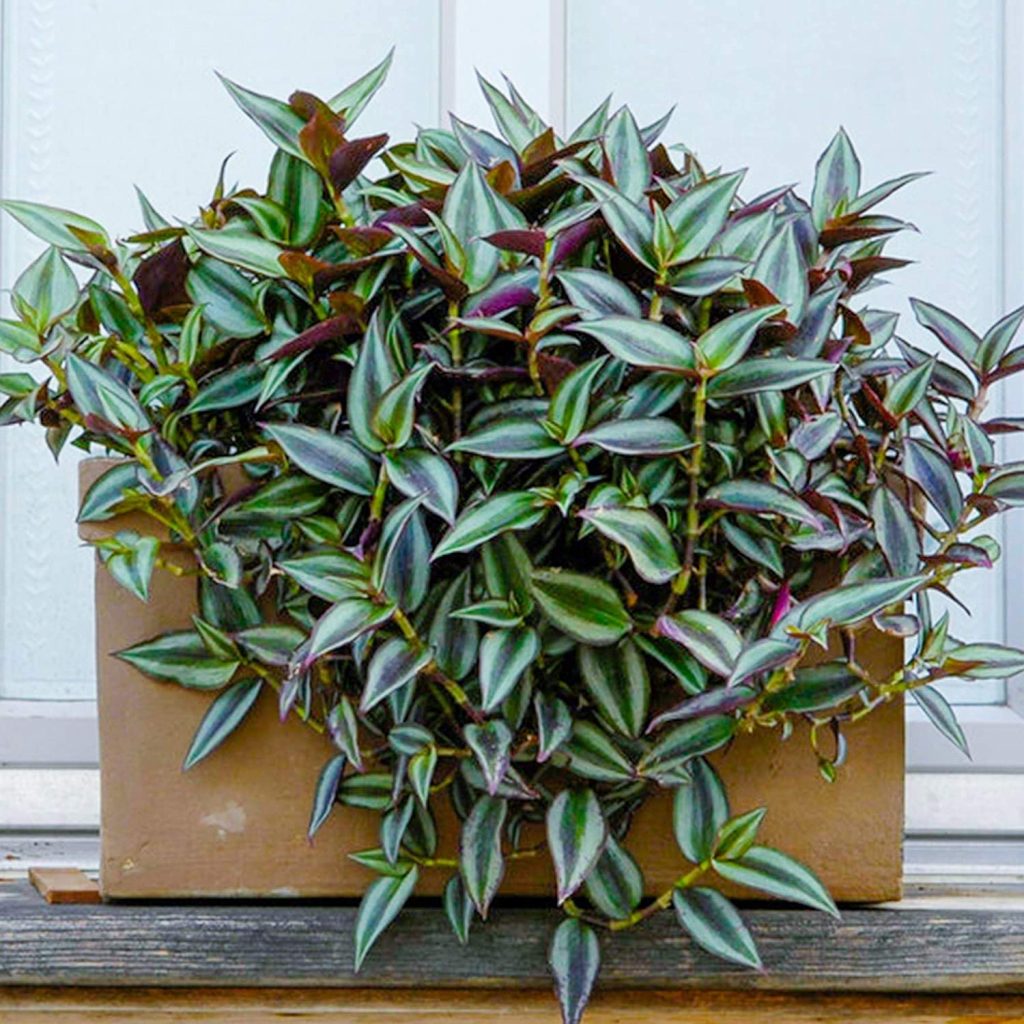
Of all three species, this is the most common; it comes in colorful and eye-catching patterned foliage. The leaves are bluish-green, with longitudinal stripes that are silvery on the surface and purple on the underside; the center of the leaf also has a creamy-white color.
The leaves grow to about 8 to 12 mm long and 5 to 8 mm wide. The zebrina has its origin in Mexico, Central America. Colombia and the Caribbean islands.
2. Tradescantia Flumensis
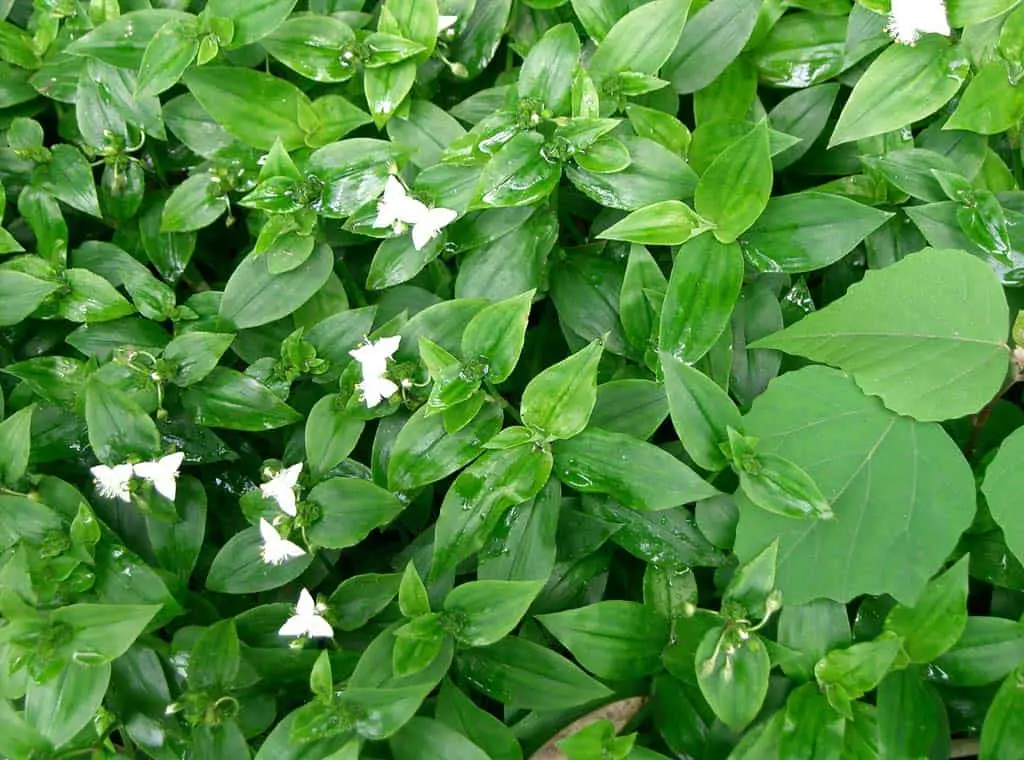
This species is native to the southeastern region of Brazil; it is a perennial plant that flowers all through the year and more if well cared for. The flumensis comes in oval-shaped foliage and glossy look, its leaves are dark green and they grow to about 1.25 to 2.5 inches long. The flumensis type of wandering Jew also has subspecies, including a variegated type that comes in different colors.
3. Tradescantia Pallida
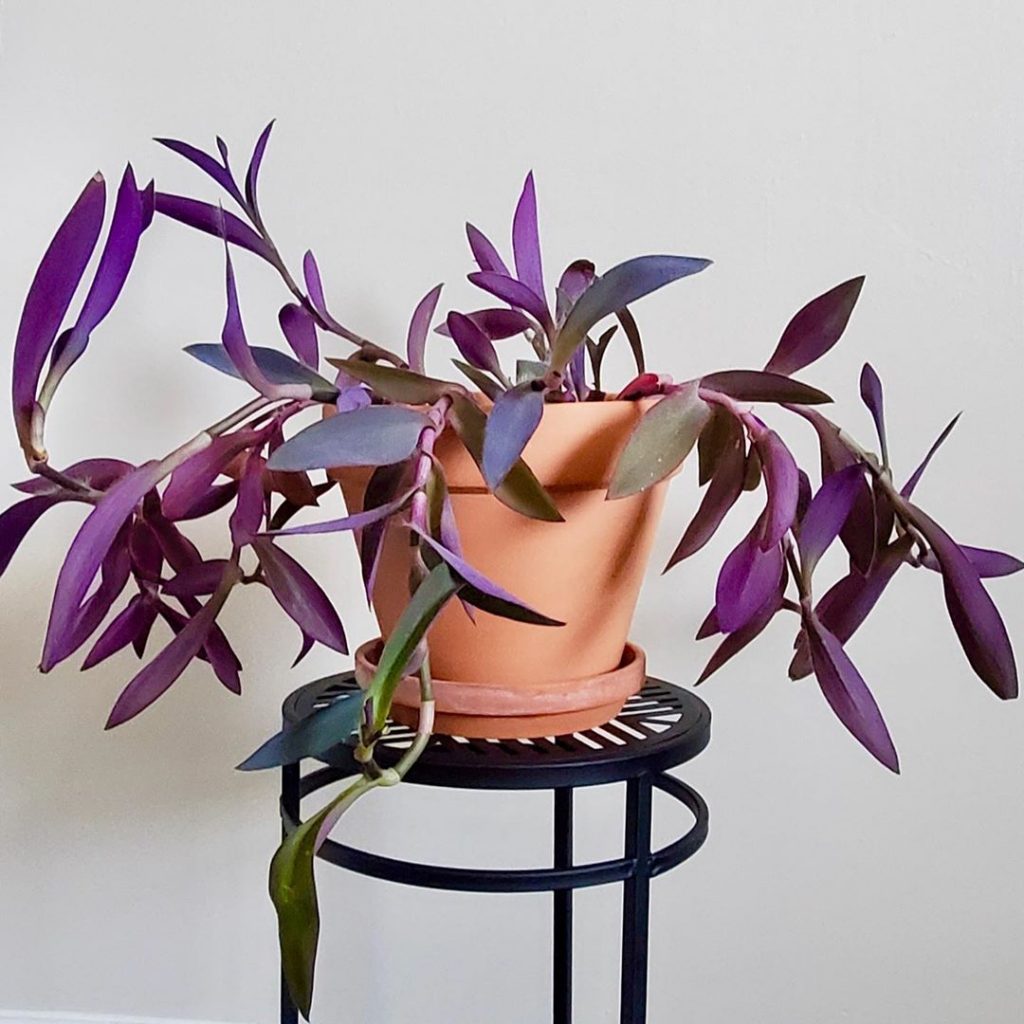
This is the most attractive species of the three of them, it is native of Mexico and unlike the other two, it produces long, pointy leaves of about 7 inches. The pallida leave comes in purple, however, its tips maintain red or green and this happens during color transition.
The fascinating thing about the wandering Jew species is that not just do they beautify the home, they are also known to be natural air cleaners.
They possess natural air cleaning properties, hence when they are in a home; they get rid of bacteria and VOC and exchange them with fresh air.
They are all perennial, which means that they can be grown for a long period. They can all also be grown as houseplants; you can decide to choose either of the three or all! You also do not need to understand their care according to their species; they can all be cared for the same way.
[ Quick Tip ]
Although the wandering Jew can grow in any soil, you must add some soil enhancer, for better drainage of the soil and addition of nutrients.
We stated earlier that wandering Jews are one of the easiest plants to grow, however, if you are new to planting, you will need a guide on how to grow them or care for them. Read on to get all the information you need.
Wandering Jew Propagation Requirements
Planting inch plant at home? You’ll need these:
The best measure of light to give the wandering Jew is the full sunlight. The plant thrives best and enjoys light at its brightest it prefers late afternoon sun to morning sun. In your plans for growing a wandering Jew, prepare a spot where it can get its right measure of light. The color on the plant will fade off when not given the right amount of light.
The best form of soil for your plant is rich, well-draining loamy soil; however, you can also make do with standard potting soil. As the case may be, you can also add a layer of gravel to the bottom of the soil, this will further enhance drainage. Adding perlite or other soil enhancers will be good for its drainage and growth.
3. Humidity
Looking at the native environment of the wandering Jews(all species) it is of no surprise that the plant enjoys high humidity. This indicates that your room level humidity may not be enough for your plant. In cases like this, you can mist your plant regularly or place your wandering Jew in locations in the home with high humidity i.e. the bathroom.
4. Temperature
Wandering Jews can survive in room temperatures of about 16 to 24 degrees Celsius. You should keep your plant away from any temperature below 12 degrees Celsius.
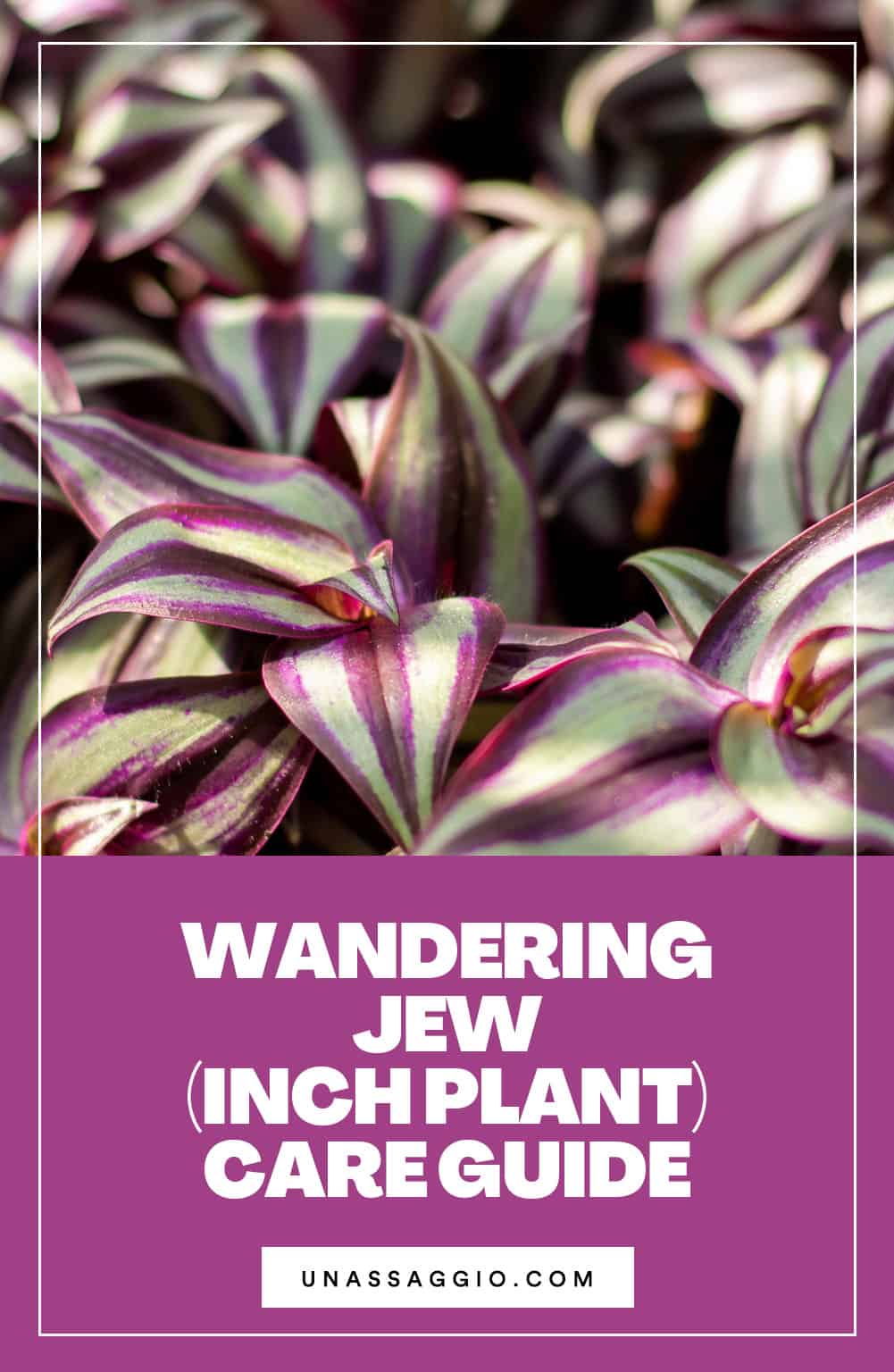
Like many other plants, the wandering Jew enjoys watering at a balanced level. It enjoys moist but not soggy soil; it also does not tolerate dryness. Before watering your plant, you must be sure it is needing water at the time; this can only be done by Deeping your finger 1 inch into the soil. For best care, work with a watering schedule that fits the needs of the plant.
6. Fertilizer
You can feed your plant with fertilizer; however, this should best be done during the growing seasons. You should also remember to dilute the fertilizer to half its strength, not adhering to this will lead to burns for your plant.
Wandering Jew Propagation
Wandering Jew is easy in every sense of the world, including propagation, they grow quickly in a lot of conditions and for this reason, a lot of countries list it as an invasive plant.
One sure method to propagate the wandering Jew is via stem cutting, they can be raised in water or soil. Follow the guideline below on how to propagate your wandering Jew.
Step 1 (Soil)
- Get a healthy, mature plant and with the use of a sterilized blade or pruner, make a cutting of a long stem of about 5 to 6 inches.
- Prepare a potting mix, although wandering Jew works well in any soil, for best result, mix some perlite or peat moss into the soil for increased drainage.
- Remove the bottom leaves from the cutting and place the cutting in the soil. If you have a large pot, you can grow two stems in the pot.
- Carefully pat the soil so it can flatten and then pour some water until it drains from the bottom. Water your plant frequently; however, be careful so it doesn’t become soggy.
Step 2 (Water)
- Make a cutting of about 3 to 5 inches from a healthy, mature plant.
- Remove the bottom leaves, at least 2 leaves.
- Place the cutting inside the water and be sure it is only the bottom, without leaves that are sitting in the water.
- Change the water in about 2 to 3 days. In a week or more, your plant should begin to develop its roots.
- After two weeks or when your plant has fully developed its roots, move your plant to the soil and let it grow normally.
Wandering Jew Plant: How To Care For Your Wandering Jew Plant
The wandering Jew is one to stay healthy with just its basic care; however, there are other few things to note and some things to reiterate for the best care
- Wandering Jew requires regular pruning, this is because the plant is one to grow quickly and when you do not prune it, it is likely to grow past your pot. Pruning also keeps it monitored and at its best. To also prevent it from getting leggy, you need to prune.
- Although the wandering Jew plants are not exactly susceptible to pests, the plant can suffer from spider’s mite if care isn’t taken. They can form yellow spots on your plant when they are not quickly discovered.
- Over-watering can cause diseases like root rot for your plant. The best remedy is to make sure you purchase well-draining soil and a pot with drainage holes.
- Repotting might be what you find yourself doing a lot of time, with wandering Jew. Because of the plant’s nature to grow fast, you will be required to change your pots i.e. once or twice in a season. Make sure to re-pot in a larger pot than the previous one you used.
For health and beauty, a wandering Jew is a plant you need in your home. When planted outside, some researchers have found that the wandering Jew can restore lost nutrients to the soil.
It is quite easy to think the wandering Jew plant can be ignored, however, do not do this as it can lead to the death of your plant.
Read more houseplant care guides:
- Calathea Orbifolia: The Complete Growth And Care Guide (2021)
- Bunny Ear Cactus Plant: The Complete Growth And Care Guide
- String Of Pearls Plant: The Complete Growth And Care Guide (2021)
- Variegated Rubber Tree Plant: The Growth And Care Guide (2021)
- Bromeliads Plant: The Complete Growth And Care Guide (2021)
About The Author
Jane Walton
Read these next....
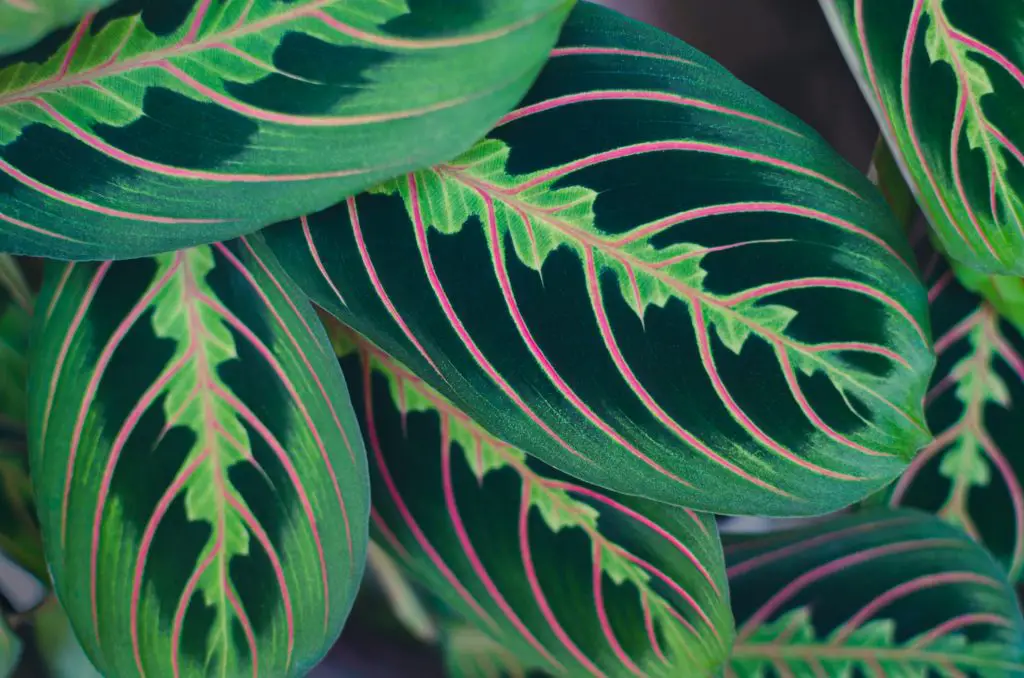
Prayer Plant: The Complete Growth And Care Guide (2021)
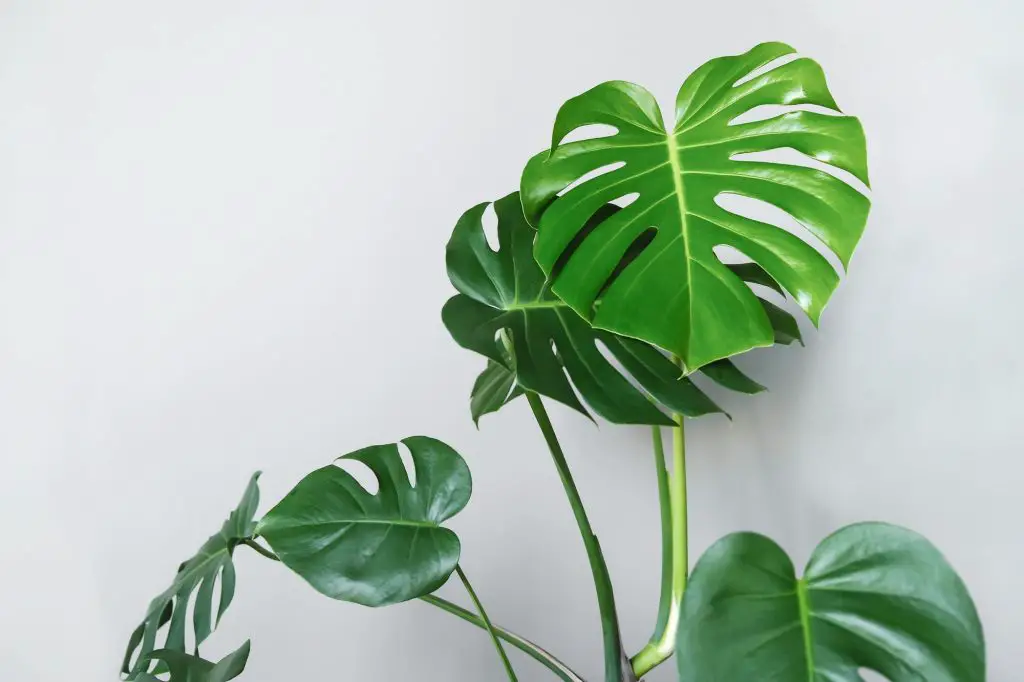
Swiss Cheese Plant Care: The Monstera Deliciosa Guide
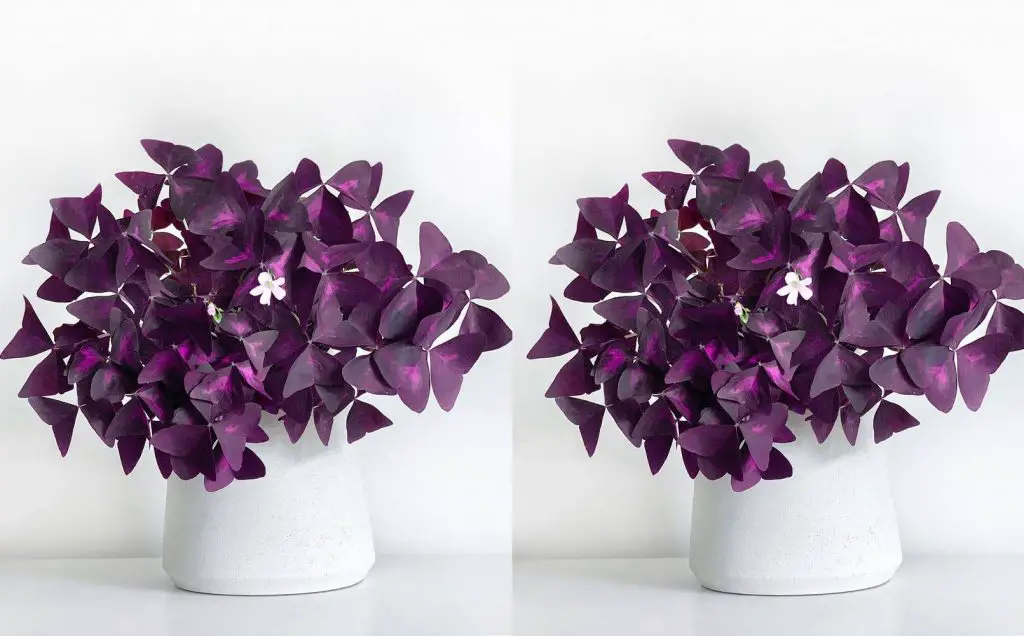
Oxalis Plant: The Complete Growth And Care Guide (2021)
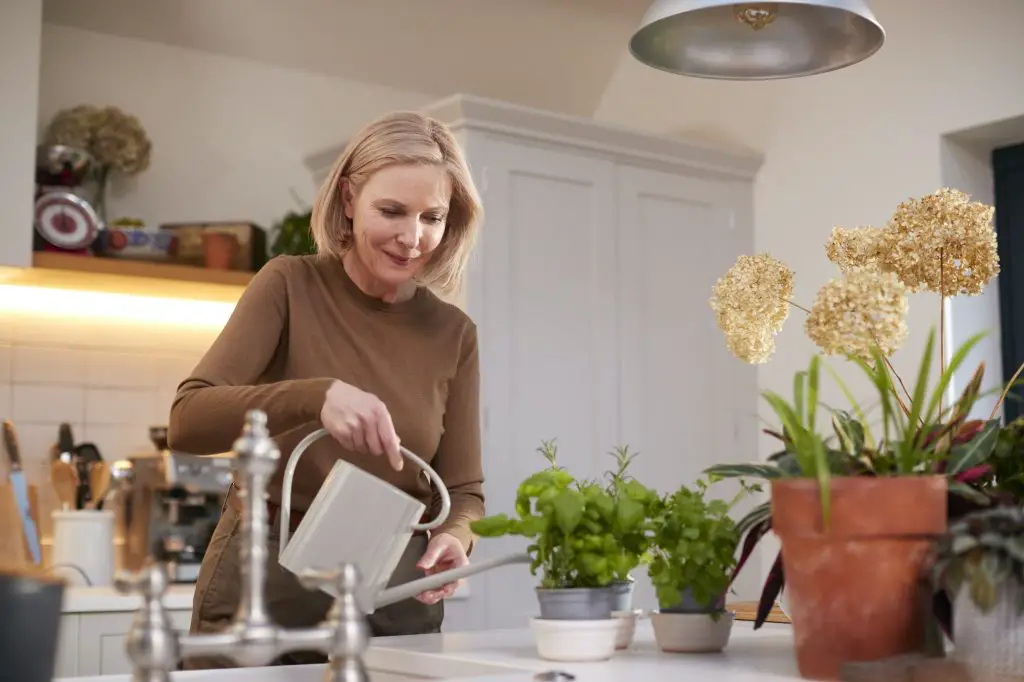
The Best LED Grow Light For Indoor Plants (2021)
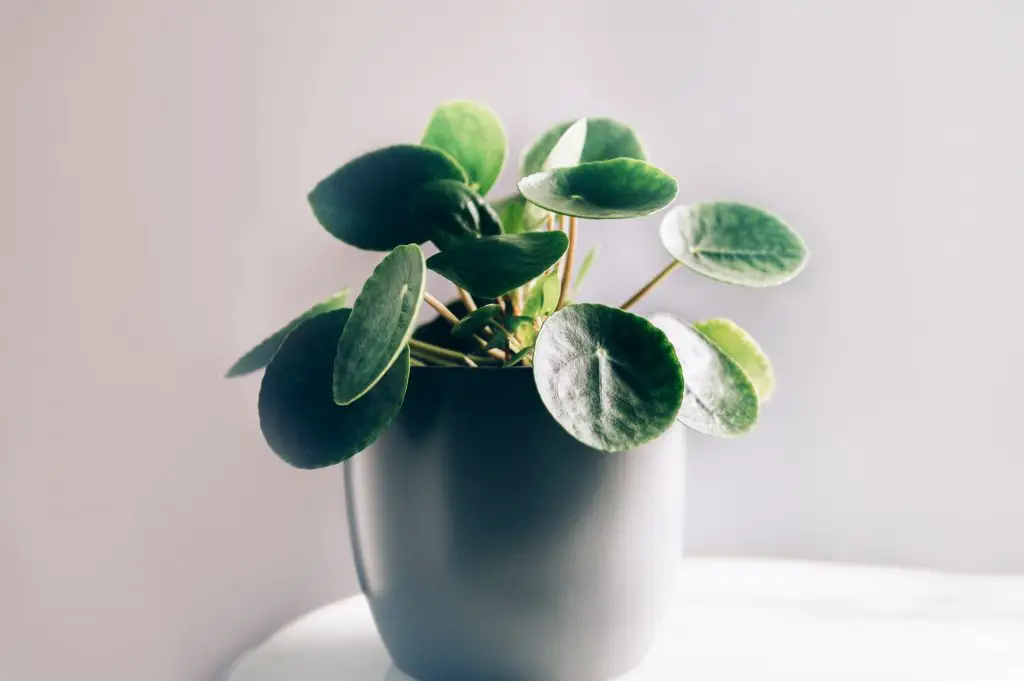
Chinese Money Plant: The Complete Growth And Care Guide (2021)
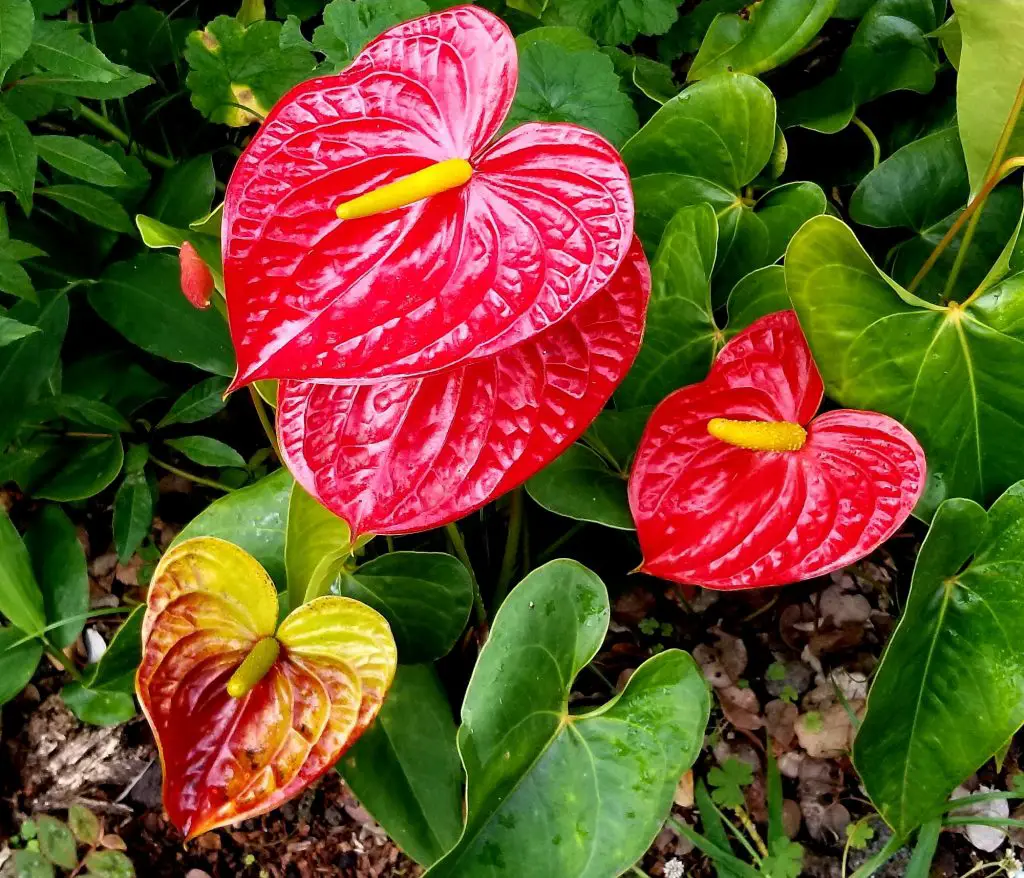
Anthurium Plant: The Complete Growth And Care Guide (2021)

The Garden Style
How To Become a Master Gardener
How to Care for a Wandering Jew Plant – Guide
In today’s post I want to talk to you about wandering Jew plant care Have you ever taken care of this plant?
Wandering Jew plant is a houseplant very easy to care for and easy to propagate. Learn all about how to care for a Wandering Jew plant in this amazing guide.
Table of Contents
Wandering Jew Plant Information
This plant comes from Central America and is very popular thanks to the simplicity of its care. It is a hanging houseplant and is often seen on ceiling supports or covering the floor of patios and gardens.
Perhaps I should have started here: Wandering Jew plant is a botanical family of more than 70 species including Tradescantia Zebrina .
The different varieties differ from each other mainly by the color, shape, and size of their leaves. Tradescantia Zebrina , the species we will talk about today, has oval leaves with pointed tips in green, silver, and purple.
For me, it is a very fun plant that looks great in pots where its stems can hang down, which is when they look their best.
If you are considering caring for a Wandering Jew plant, I can only encourage you to take the plunge. It is very economical and easy to care for the plant, you will be amazed at how hardy it is and how little care it needs! Without a doubt, it is the perfect houseplant for beginners.

- shipped in inproved box to save the plant
Wandering Jew Plant Care Quick View
I tell you at a glance all the care that the Wandering Jew plant needs:
Illumination: high but without direct sun.
Ideal temperature: above 68°F (20 degrees).
Minimum temperature: 53°F (12 degrees).
Watering: moderate. Let the substrate dry out between watering.
Fertilizer: fertilizer for indoor plants during spring.
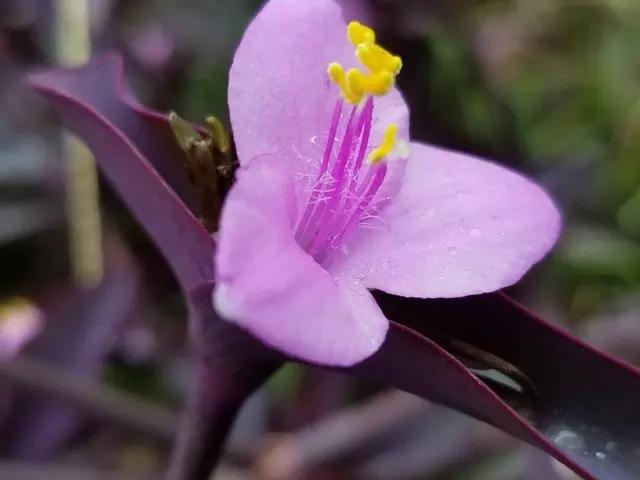
How to Care for a Wandering Jew Plant
If the quick care sheet was not enough for you and you need more information to take care of your Wandering Jew plant, do not worry because I will tell you in-depth what you should know about this plant.
First of all, I remind you that its care is very simple, that it does not require any special attention, and that the Wandering Jew plant is very grateful and will fill your house with green in exchange for very little.
Let’s go for the care it needs!!!!
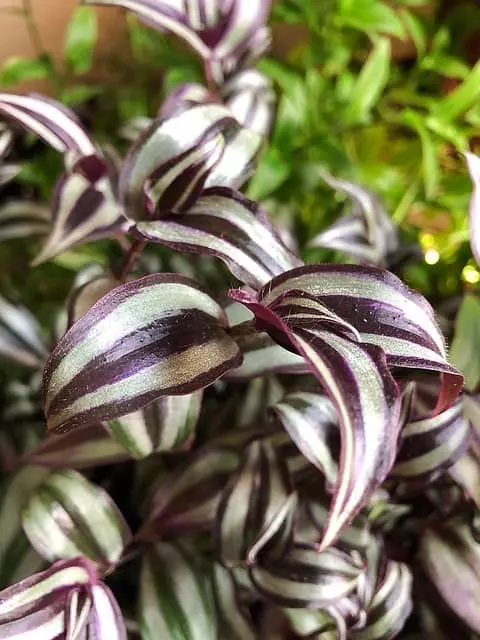
For it to grow at a good pace, strong and with intense color, in its leaves, it needs to receive plenty of light without direct sunlight. I advise you to place it in a place with high illumination but where the light enters screened by a curtain or store.
How can you tell if your Wandering Jew plant is getting the right amount of light? If you see that the stems are growing long and leafless, it means it needs more light. The reason its stems are getting longer is that they are growing fast in search of the sun. If you detect these symptoms in your plant, find a new location where it will receive more light.
Temperature
Wandering Jew plant needs warm climates to live. Its ideal temperature is above 68°F (20 degrees).
It does not tolerate cold climates or temperatures below 53°F (12 degrees) so if you live in places with cold winters, you will have to grow it as a houseplant.
The Wandering Jew plant is very easy to take care of and does not give any headache as long as we water it moderately.
Problems begin when there is excess humidity or when the roots of the plant become waterlogged. It is important to be moderate with the irrigations because once we overdo it with the water there is no turning back.
I will never get tired of saying it, it is better to water less than the other way around because a plant is easier to recover from lack of watering than from excess and with the Wandering Jew plant the situation is no different.
It needs moderate watering and it is also a species that tolerates “controlled” drought, so if you have doubts, it is preferable to postpone watering.
What is the watering pattern? The most important thing is to pay attention to the substrate and water only when the soil is dry. The frequency of watering will depend on the climate and conditions of your Wandering Jew plant but we could establish the following guideline:
Once a week in summer
Once a fortnight in winter
However, if you notice that the plant’s soil dries out earlier, advance the watering and adapt them to its needs.
It is incredible how fast this plant grows. You will be surprised to see its rate of development; it is really impressive. However, we can always help it and provide it with more nutrients by fertilizing during its growing season, which is the summer.
My advice is to use fertilizer for indoor plants together with the irrigation water in the quantities and time limits indicated by the manufacturer of the product. Be careful and do not abuse fertilizers as excess fertilizers can be harmful to the plant.
We recommend applying this fertilizer to improve the development of this beautiful plant ( Order it here ).
Propagation Of Wandering Jew Plant
Propagating this plant is a pleasure! Because it takes root very quickly and grows at a very good rate. You should propagate it in two ways: by division of the plant or by cuttings (cutting a stem of the plant and putting it in water until it takes root).
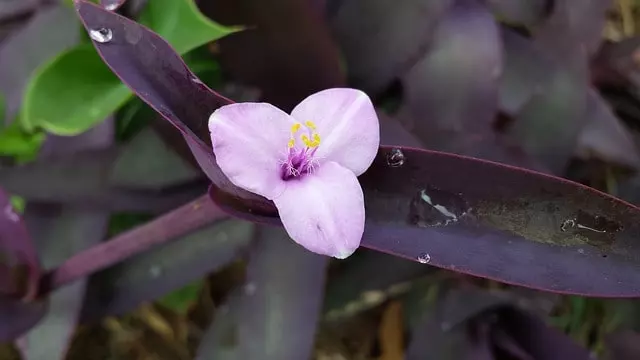
Pests and Diseases Wandering Jew Plant
Wandering Jew plant is a very pest-resistant houseplant. It does not often get sick or attacked by bugs, but if it is affected by parasites, the most common are aphid, mealybug, or red spider mite.
Frequent Problems Wandering Jew Plant
Wandering Jew plant is a hardy plant and easy to care for but despite this, it can occasionally suffer from the following problems:
Wilted leaves turning yellow: excessive heat and dryness.
Long, bare stems: lack of light
Leaves with very uniform color and no variegation: lack of light.
Do you want my advice? If you have doubts and you don’t know whether to go for a wandering Jew plant or not, my recommendation is that you don’t think twice and get one.
It is the perfect plant for beginners or people who do not have much time to take care of it. It will require little attention and will look beautiful all year round. What more can you ask from a plant?
We hope this article on how to care for a Wandering Jew plant will be useful. We recommend our article about How to Get Rid of Mold in Plant Soil – Effective and Simple Ways .
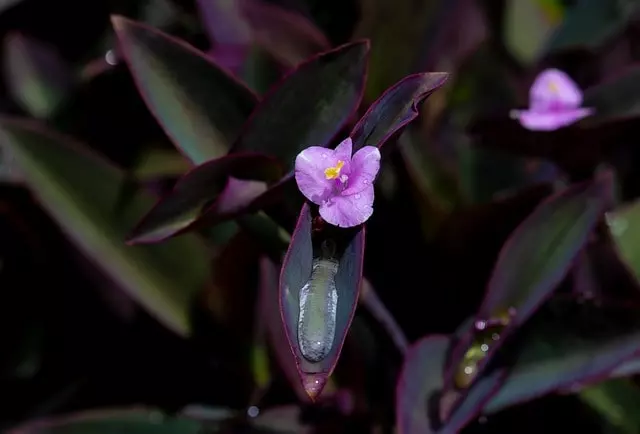
About Henry Morgan
Henry Morgan is an agronomist horticulture founder of The Garden Style Company and The Garden Style Website. He previously worked for Mondelēz International as an Agronomist Engineer specializing in agricultural products management in highly populated areas. In 2000, Henry started working with farmer-producers in agricultural businesses selling wholesale fresh produce and retail plants in Van Buren, Arkansas. Nowadays, Henry lives in California, where he offers expert consulting services for organic vegetable gardening. As a science writer working with his wife, Julia, Henry shares his passion for gardening and farming, trying to reach and teach as many folks as possible.
Leave a Comment Cancel reply
Save my name, email, and website in this browser for the next time I comment.

Wandering Jew Plant: Types, Care, and Growing Guide
A friend recently shared cuttings from her Wandering Jew Plant with me. And just like their name, I found their appearance to be very quirky. However, one thing is certain – they are definitely the easiest types of plants to grow.
In this guide, lets discuss the different types of wandering Jew, how to grow them, and maintenance tips to keep them thriving for years.
Types of Wandering Jew Plants

The name wandering Jew does not refer to a single plant – but a group of different plants from the genus Tradescantia . The three main varieties of the genus includes:
Tradescantia Zebrina
The zebrina is the most common type of wandering Jew. It features a dark green foliage with a creamy-white stripe in the center and an outer border of silver. The plant produces ravishing white three-petal flowers that bloom all year-round.
Tradescantia Fluminensis
The evergreen perennial plant originates from Brazil and is a popular houseplant for its hardiness. The oval-shaped foliage of the plant is glossy-green with flushed purple stripes. The Tradescantia Fluminensis produces white three petal flowers throughout the year. The flowers don’t have any seeds and may bloom in clusters.
The plants have various sub-species as well with variations in the color of leaf. They are fast growing plants and when given the right conditions – they will shoot up to 60 cm tall on leafless stems.
Tradescantia Pallida
This variety of the wandering Jew originates from Mexico and is one of the most attractive of the three Tradescantia described here. The plant shoots upwards to a length of 7-inches. The leaves turn purple as the plant matures but the tips maintain a red or green coloring.
Flowers for this plant bloom in pink, lavender, or white. The flowers feature three petals and add a unique aesthetic on the purple backdrop.
The Tradescantia Pallida is highly susceptible to cold. In fact, avoid keeping the wandering Jew plant outdoors in regions that get a lot of cold. They will probably die or remain dormant.
Wandering Jew Plant Care
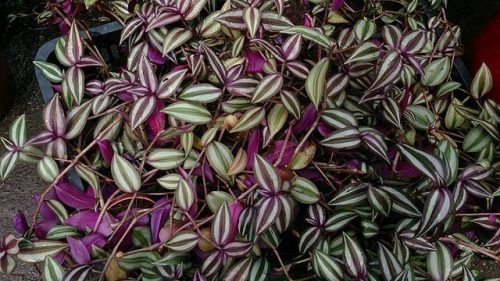
When provided with the right environment, all varieties of wandering Jew are easy to care for. Just give them plenty of water and an area that gets partial sunlight or indirect sun to watch them thrive into a beautiful houseplant.
As mentioned above, wandering Jew plant prefers bright but indirect sunlight. Remember, the brighter the light is, the more flower your plant will produce. However, some varieties of the wandering Jew don’t bloom until well after the first year.
Your plant may also lack the required light if you notice the color of the leaves fading. Moving to a sunnier location will revive back the color of the foliage within a week.
Hardiness Zone and Temperature
The houseplants are hardy in U.S. Department of Agriculture plant hardiness zones 8 to 12.
The average indoor temperature is ideal for their growth while in winters they are unable to survive long periods of cold weather below 45 degrees Fahrenheit.
Standard houseplant potting mix does well for the wandering Jew. You can also add a bit of organic matter to enhance growth.
Personally, I prepare a soil mixture by taking equal parts of:
- Peat or humus
- Perlite or coarse sand
- Garden soil
- Dusting of lime
- Rich, organic compost
I also recommend adding a layer of gravel to the bottom of the pot in order to enhance drainage.
The wandering Jew prefers balance when it comes to moisture levels. So don’t let it remain too wet or too dry.
Water only when the soil is at least ½ inch deep dry. Give it a good watering to boost the drainage.
During the growing season, fertilize the plant using a liquid-based fertilizer. Be sure to dilute the fertilizer to 50-percent strength, as strong concentrations can burn the tip of the leaves.
You can also add a granular slow-release fertilizer to the soil once a year. Ideally, the fertilizer should be applied at the start of spring season.
The wandering Jew grows quite rapidly and might take over its pot in one or two seasons. Therefore, you will need to pull up the plant and repot in a new one to enhance growth.
To repot, select a pot that is 2-inches wider than the one you are using. Layer the sides with fresh potting soil. Remove the root ball and place it in the new one. Add soil to 2-inches below the pot’s rim.
Pruning is an essential part of wandering Jew plant care. Since they are fast growing, they have a tendency to get leggy, so you must prune them regularly if you want to maintain its healthy appearance.
Simply trim the stems and pinch of the tips. New growth will appear from the pinched area, helping your plant spread out and appear bushier.
Protection from Frost
Frost and cold weather are intolerable by the wandering Jew. Therefore, taking a few extra precautionary steps during the winter season is important for your wandering Jew’s survival.
When frost is expected, water your plant to hold heat in the soil and insulate its cells. You can also cover it with a woven fabric such as burlap or old bed sheet to provide it with the warmth it need.
Bringing it indoors is another option if you have a potted wandering Jew.
Wandering Jew Plant Propagation

You can propagate wandering Jew in either soil or water. Both methods are so easy and quick that you don’t even need to use a special rooting hormone to encourage growth. And they spread so fast that you can gift some to friends and family as well.
Propagate Your Wandering Jew Plant in Soil
To propagate, take several cuttings from the end of branches. Makes sure to always cut at a 45-degree angle just under a leaf node. The cutting should be four to six inches long. Remove any leaves that appear at the bottom of each stem.
Next, fill in a six-inch pot or a hanging basket with all-purpose potting soil. Poke four holes about two inches deep around the edge of the pot and fifth in the center. Place one cutting in each hole, carefully patting the soil around the stems to hold them in place.
Water the cuttings every day to find a new plant within a month. You can then, transfer your plant to a bigger container or garden bed.
Wandering Jew Plant Propagation in Water
Take a few cuttings from healthy stems. Put them in a glass of water, ensuring that the bottom leaf node is completely submerged.
Change the water every few days – or when murkiness appears. You should also top off the glass of water with fresh water when it is looking low.
When propagating with water, you will see new roots beginning to appear within a week. However, I usually keep it submerged in water for a couple of weeks before moving them to an all-purpose potting mix.
Wandering Jew Problems

Wandering Jews are generally hardy plants and don’t exhibit many problems if care is optimal. However, a few common problems you may encounter are listed below:
Since Wandering Jews are indoor plants, pests usually don’t bother them much. The only pest you will have to deal with are the spider mites.
Luckily, they are not problem-creators and will go away with a sharp spray of water. Fungus develops in very rare case. If it does occur, use a systematic insecticide and remove the affected stems to avoid spreading.
Similarly, the occurrence of disease in wandering Jew plant is very low. And most diseases that you will face will be a result of overwatering.
For starters, root rot is common in wandering Jews. If you do find your plants not growing properly or notice the colors of the leaves fading – Water Less!
You can also add some perlite or coarse sand to your soil mix to enhance drainage. A layering of rocks at the bottom of pot also improves the issue.
Allergic Reaction
In some humans and animals, the sap excreted from the plant can cause an allergic reaction. Especially if you have pets, I suggest keeping it in high areas so they are not exposed to the matter.
Although there are no theories that suggest the sap to be poisonous, it should not be eaten. By you or the pets!
Wandering Jew History
The wandering Jew has an interesting history. Its name comes from a historical character of Christian folklore from the 1300s when a Jewish man taunted Jesus on his way to Golgotha with the cross. Since then, the man has been cursed to walk the Earth until the second coming. The zebrinas are named after this wandering person.
Wandering Jew Plant Benefits
The wandering Jews are beauties and add an attractive element to your home décor. Interestingly, they also work as air purifiers and help clean the air of allergens, dust, and pollutants as well.
They are also known to have psychological benefits such as reducing stress, lowering blood pressure, and enhancing happiness.
Different countries also use them for medicinal purposes. For example, the Jamaicans consider the greens of wandering Jews to treat high blood pressure, coughs, and other symptoms of cold.
In China, the striped leaves are applied to help reduce swelling while in Mexico, you will find a cold drink that contains lemon and sweetened leaves of the plant.
Unfortunately, in some countries the plant is considered invasive or even weed as it can prevent the growth of other surrounding plants.
Frequently Asked Questions
A few questions I often hear people asking about wandering Jews and similar indoor plants include:
Q1. Why is my wandering Jew turning yellow?
Answer: Just like any other houseplant, yellowing leaves indicate problems of overwatering. Wandering Jew does not like ‘cold feet’ and prefer adequate draining soil so the moisture doesn’t retain. If you find the leaves of your plant losing its vibrant coloring, reduce the water intake and only water when the top ½ inch of the soil feels dry.
It is also advised that you water in the morning time so the plant has enough time to dry out.
Q2. Why is my plant turning brown?
Answer: Brown leaves are a telltale sign of problems with the environment. It seems like the air is to dry for the plant to thrive. Try misting it with sprays of water periodically during the day. Also, look for spider mites and dead growth.
Q3. What happens if the plant starts dropping leaves?
Answer: Dropping leaves is a common issue that plant owner face and is usually caused by too high or too low temperatures. If you have kept your wandering Jew plant outdoors, bring it indoors during the winters while average room temperature is ideal during the summer.
Q4. What is the lifespan of a wandering Jew plant?
Answer: The average lifespan of a wandering plant is 2 – 3 years. After that, you will notice the plant slowly declining in health. However, if you continue to propagate plants through cuttings, you can have the wandering Jew indefinitely. And even save some for gifting.
Q5. What is the best way to decorate the wandering Jew indoors?
Answer: For me, wandering Jew works best in hanging baskets or planters. Since the plants are slightly harmful for pets, I preferred to keep mine hanging so the dog doesn’t accidently nibble on it.
Final Words
Nevertheless, the plant is one of the easiest to care for. Especially if you are just beginning to grow a green thumb, I highly recommend starting with the wandering Jew plant due to its hardiness.
Give it a try and let me know your experience with it in the comments below!
Similar Posts

Your Step-By-Step Guide to Growing the Elephant Ear Plant
As the name suggests, the heart-shaped leaves of the Elephant Ear Plant will reminisce you of the elephant’s ear. Grown for their ornamental value, the plant can be grown in either – garden or container for an exotic layout. Surprisingly, they are very easy to grow as well and will stand proud in the right…

A Beginners Guide to Planting and Growing a Fuji Apple Tree
If you have ever sunk your teeth into the sweet, juicy flesh of a Fuji apple, you know it’s an experience that is not easily forgotten. Bursting with flavor, Fuji apples have gained a loyal following among fruit lovers across the globe, and for good reason! But did you know that you can enjoy these…

Jasmine Plant: How to Grow and Care for the Plants
The jasmine plant is a favorite of many for its sweet-scent and small white flowers. Though it’s mostly planted outdoors, there are some varieties of the fragrant vines that can be grown indoors – even in a container. How: Let’s find out in this complete guide to jasmine plant care. Quick Overview Scientific Name Jasminum…

How to Care and Grow the Lithops Living Stone Plant
If you have ever mistaken the lithops living stones for rocks, then you are not the only one! The lithops are a unique type of succulents that boast a stone-like appearance. However, they are a popular type of plant that is a favorite of many garden enthusiasts for many reasons. Read on to find out…

Dracaena Marginata Growing Guide: Tips for Maintaining the Dragon Tree
Dracaena Marginata, also known as the ‘Dragon Tree’ is one of the most popular type of indoor plants. The slow growing plants are perfect for beginners starting their garden as Dracaena’s are very easy to care for. Its beautiful texture and coloring also make the foliage a great décor for tabletops, desks, and window sills. Best of…

Unveiling The Beauty Of Persian Shield: A Hidden Gem In Your Garden
Discover the stunning Persian Shield plant and how it can transform your garden. Unleash its beauty now!
Leave a Reply Cancel reply
Your email address will not be published. Required fields are marked *
Save my name, email, and website in this browser for the next time I comment.

IMAGES
VIDEO
COMMENTS
Tips For Propagating Wandering Jew Plants. Wandering jew plants are super easy to propagate. Take cuttings that are 3-4″ long, and include a couple of leaf nodes. Dip the cut ends into rooting hormone, then stick them in moist soil. Don't allow the soil to dry out, and keep the air around the cuttings humid.
Fill a 6-inch to 1-gallon container that drains with a rich, well-drained potting mix. Water the soil to settle it. Make about a 2-inch indentation in the soil where you want to place the Wandering Jew cutting. Remove the bottom leaves from the cutting where you will be inserting it into the soil.
Repotting Tradescantia Plants. If your wandering jew is beginning to become a bit crammed in its pot, select a pot that's 1-2″ wider than its current one. Prepare your pot with a little fresh potting soil around the sides. Remove your inch plant from its existing pot, setting the root ball into the new one.
W andering Jew Plant Care. To keep your Wandering Jew plant thriving, ensure it receives bright, indirect sunlight. Keep it in average room temperatures of 60-75°F (16-24°C). Fertilize once a month during spring and summer. In winter, relocate the plant to a cooler area with temperatures of 54-59°F (12-15°C).
The ideal soil for the Wandering Jew Plant should be well-draining and rich in organic matter. A mixture of peat moss, perlite, and regular potting soil works well to provide the necessary drainage while retaining moisture. Aim for a slightly acidic to neutral pH level, between 6.0 and 7.0, to encourage optimal growth.
3. Pot your Wandering Jew plant. Fill the pot about two-thirds of the way with light, well-draining potting soil, then place the plant in the center of the pot. Add soil to surround and fill in the sides. Gently press down on the soil around your plant and water it until the soil is completely moistened.
The plant will grow into a bushy wandering jew as a result of the pinching, which will cause it to send out two shoots directly below the area that was pinched. 3 Main Types of Wandering Jew Plants. The common names "wandering jew" and "wandering dude" really refer to three distinct species that are all members of the Tradescantia genus.
Fertilizer. During the growing season, fertilize your wandering Jew plant using a liquid-based fertilizer product. Make sure that you dilute the fertilizer to 50-percent strength. Strong concentrations can result in burning in the tips of the leaves of the plant.
Propagating Wandering Jew through Soil. To propagate Wandering Jew in soil, take 4-6 inch cuttings, remove lower leaves, and plant them in a 6-inch pot filled with all-purpose soil. Keep the soil consistently moist, place in indirect light, and enjoy a vibrant new plant in a few months.
Wandering Jew (Tradescantia zebrina) is a trailing evergreen perennial in its native habitat (USDA hardiness zones 9 through 12). Where it's not winter hardy, wandering Jew is grown year-round as a houseplant. Are wandering Jew plants toxic to cats and dogs? Wandering Jew is not considered outright toxic, but it can cause some skin irritation.
The wandering Jew plant is a common name for different species of plants that belong to the Tradescantia genus. There are around 75 different types of plants in Tradescantia genus and some are called inch plants, spiderwort, striped wandering Jew, Boat Lily, Purple Queen, or flowering inch plant. Wandering Jew plants are great house plants because they are relatively easy to care for.
About. A Wandering Jew plant, Tradescantia , is a fast growing, easy to care for plant that looks beautiful hanging in front of a window that gets bright, indirect light but no direct sun.Popular nicknames are "Inch Plant" or Spiderwort. Originally found growing as a 1-2ft tall wildflower in Canada and all the way south to Argentina, today a wandering jew plant is both a popular indoor and ...
Propagation: Wandering Jew propagation is easy with 3 - 5 inch softwood stem cuttings just below the leaf node. Remove all but 1 or 2 leaves and place in a pot with a moist potting mix within a warm and bright setting. Within 3 - 6 weeks you will see new growth appearing. It doesn't get much simpler than this.
Wandering Jew Plant Care. Wandering jew is a stunning plant that have heart-shaped green leaves with purple stripes and a silvery sheen. Depending on the type, the leaves may be solid or have different colors on them. Flowers have three petals and can be violet or white, or sometimes even pink. Read More Learn more Learn more See More See All.
Let it finish in the sink, then put it back in place. When you walk through your home, regularly check your plant's soil. Put your finger down to the ½ inch point in the soil. If it's dry, then water. Because your Wandering Jew may grow at different rates throughout the year, this test alleviates guesswork.
Propagating the Wandering Jew Plant. Wandering jew plants are easy to propagate with stem cuttings. Trim a piece of stem, about an inch in length that contains at least one leaf. Place the cut end directly into the potting soil. Water the soil regularly and within several weeks your new plant should take root.
When you plant, place Wandering Jew cuttings in a new pot, and place it in fresh potting soil, but first water the ground to provide it with moist soil. Place a clear plastic bag over your plant to hold moisture and remove it for watering weekly. Look out for new growth, as it should shoot out new roots in three weeks.
It will need to be fertilized each month during the growing season. 3. Climate. The Wandering Jew can be grown as a houseplant in any climate but outdoors it should be USDA Hardiness Zone 9-12. 4. Soil. The Wandering Jew plant can grow in different soils as long as they drain well in order to prevent stem and root rot.
Wandering Jew plants thrive in bright, indirect light. Place your pot near a window that receives filtered sunlight throughout the day. Avoid exposing the plant to direct sunlight, as this can scorch its leaves. If your indoor space lacks adequate natural light, you can supplement with fluorescent grow lights placed a few inches above the plant.
Wandering Jew Plant Care Guide. July 27, 2023 March 14, 2023 by Just Houseplants. The wandering Jew plant is actually several varieties of Tradescantia that have collectively taken on the name. As the term "Wandering Jew" is controversial, they're also frequently referred to as wandering dudes or inch plants. These fast-growing spiderwort ...
Step 1 (Soil) Get a healthy, mature plant and with the use of a sterilized blade or pruner, make a cutting of a long stem of about 5 to 6 inches. Prepare a potting mix, although wandering Jew works well in any soil, for best result, mix some perlite or peat moss into the soil for increased drainage.
Wandering Jew Plant Care Quick View. I tell you at a glance all the care that the Wandering Jew plant needs: Illumination: high but without direct sun. Ideal temperature: above 68°F (20 degrees). Minimum temperature: 53°F (12 degrees). Watering: moderate. Let the substrate dry out between watering.
Types of Wandering Jew Plants. The name wandering Jew does not refer to a single plant - but a group of different plants from the genus Tradescantia. The three main varieties of the genus includes: Tradescantia Zebrina. The zebrina is the most common type of wandering Jew. It features a dark green foliage with a creamy-white stripe in the ...